
Magic of Morocco
February 27 - March 8, 2022
Mike and Judy Henderson
I'm going to leave the trip map at the beginning of each page so you can see where we are..

+++++++++++++++++++++++++++++++++++++++++++++++++++++++++++
3/2/2022 (Wednesday - five days without our luggage) We head to Volubilis today. On the bus ride to Volublis we learned that our luggage had been shipped to the Fez airport. That was a bit of a problem because we would be gone all day and would not return to Fez until after the luggage department at the airport was closed. And we were leaving Fez the next day.
It was a fairly long ride to Volubilis and we stopped a couple of times on the way. The first stop was at an overview of a valley. There were some merchants who had set up shop at the overview, although one of the "shops" was unused.
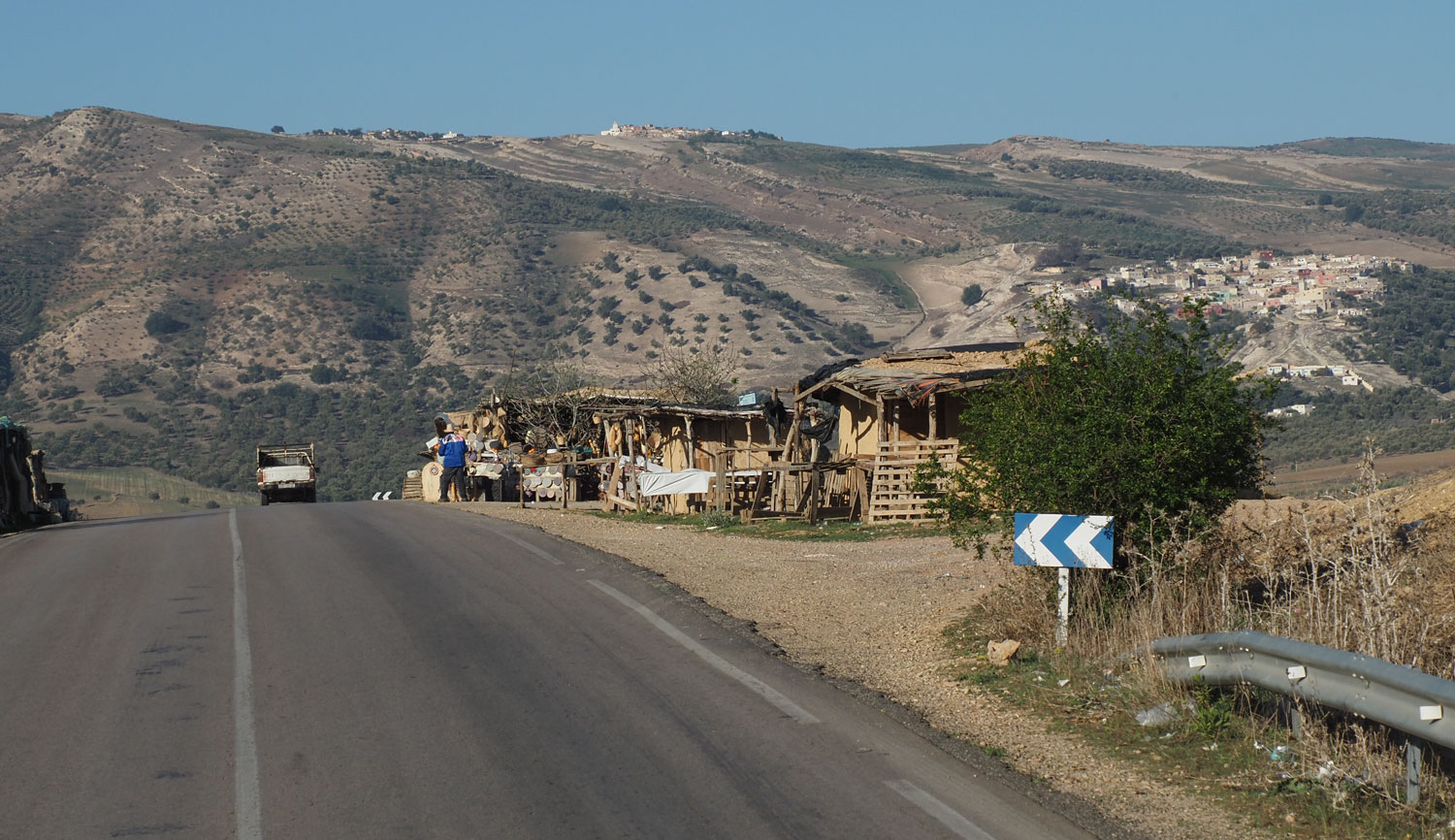
Here's part of the view.

Chris set up glasses at the unused structure, spread out a tablecloth, and opened a bottle of Champagne. There was also orange and peach juice, either for the non-drinkers or to make a mimosa. He tacked up a hand-lettered sign saying "Rick's Cafe".
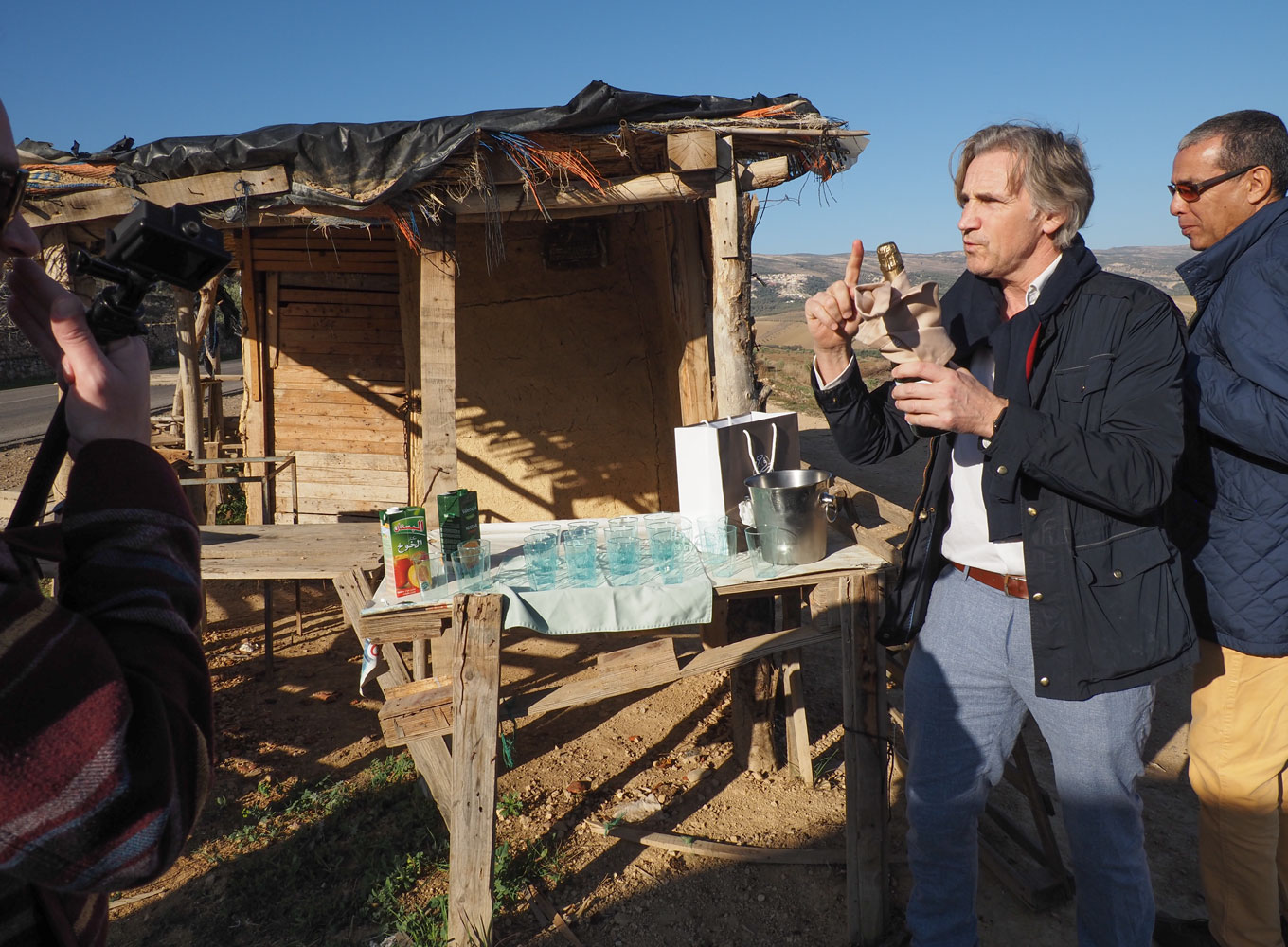
Opening the bottle.
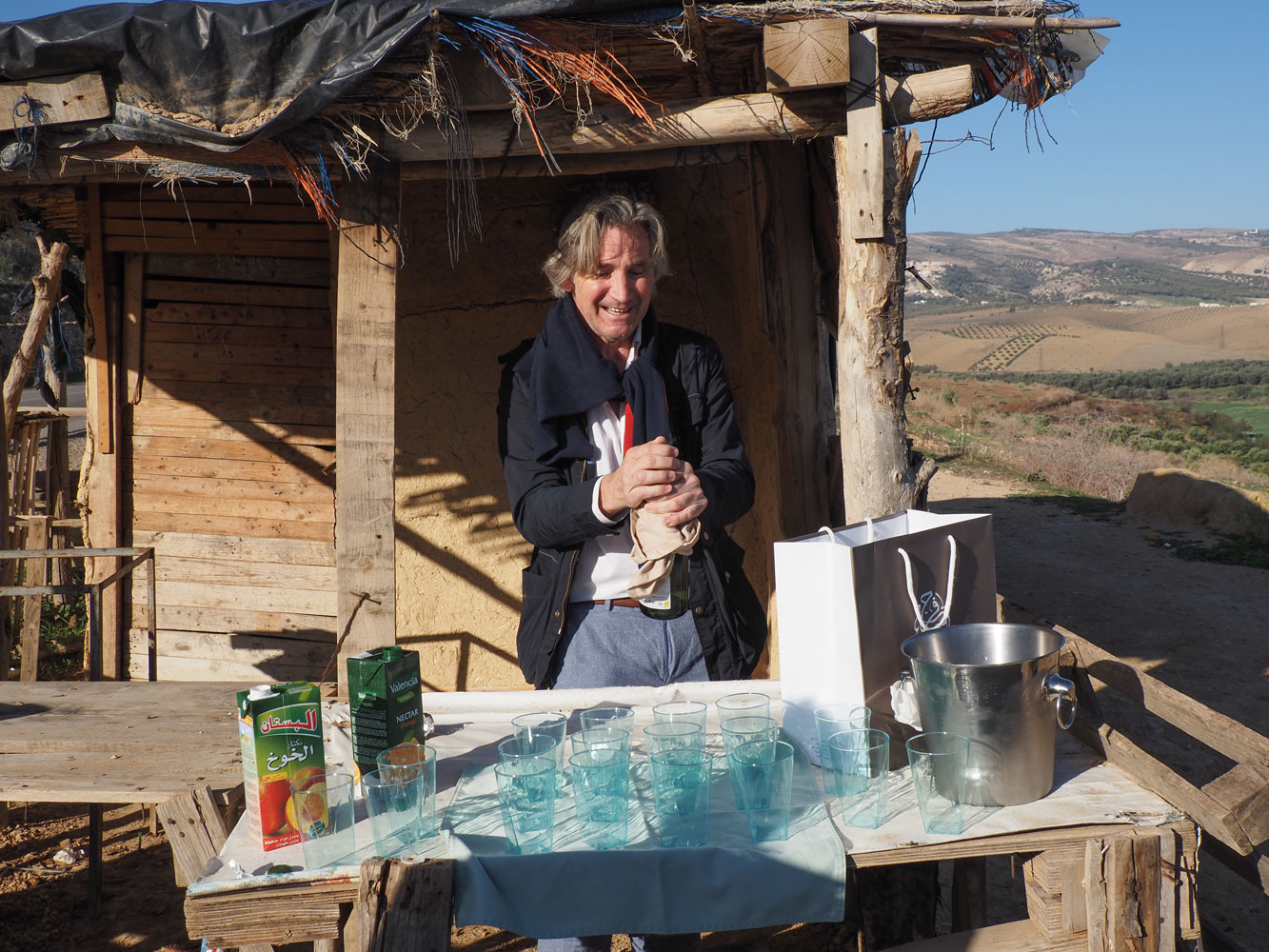
A toast to a successful and enjoyable trip. "Wicked", as he was fond of saying. The champagne was Freixenet, two special bottles that were given to him after he completed filming a commercial for them. He shared them with us. We were learning that Chris was an interesting and generous person.

The group (including a rare picture of me:-).
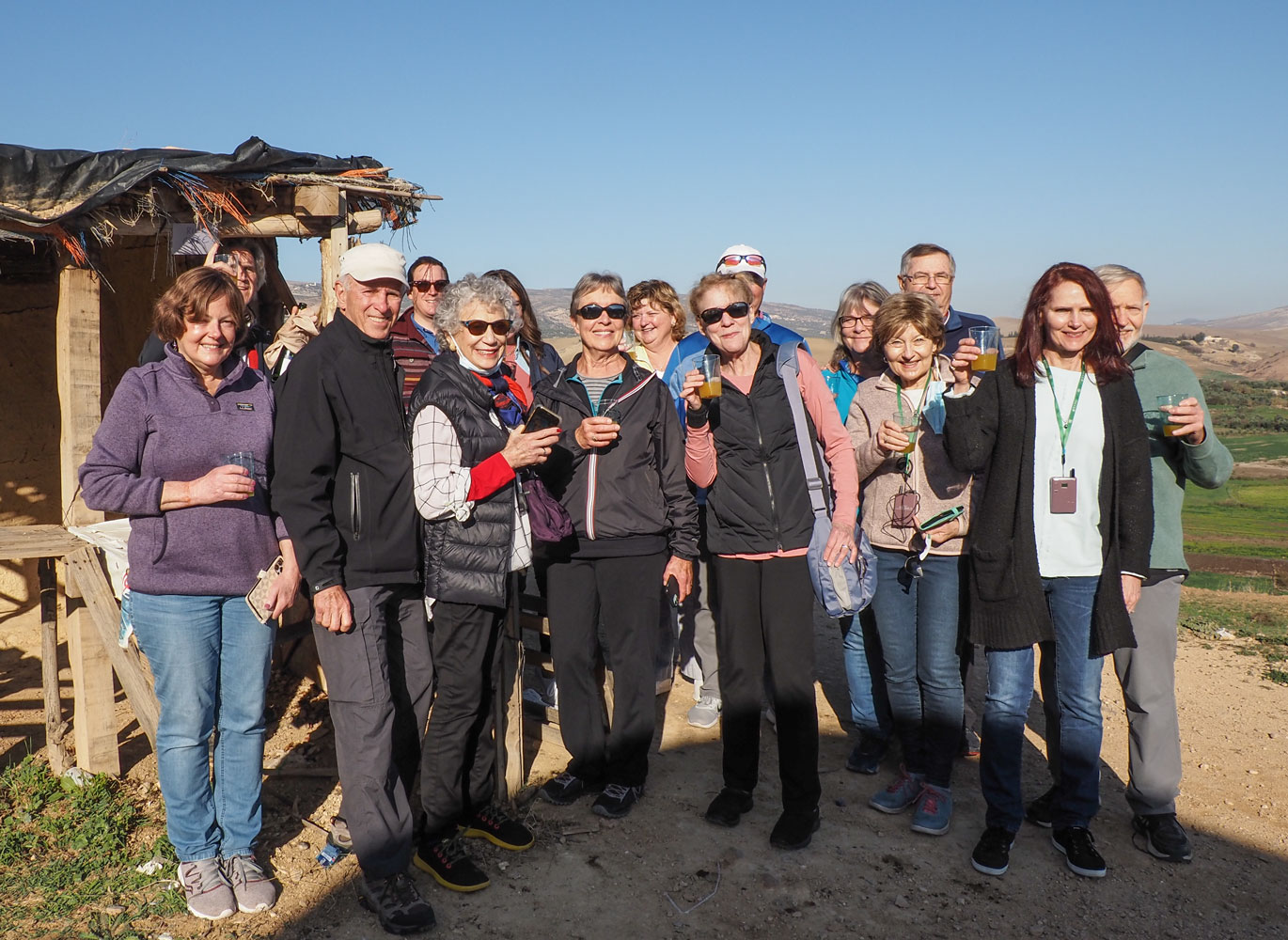
Nourdine is explaining some things about Morocco to the group.
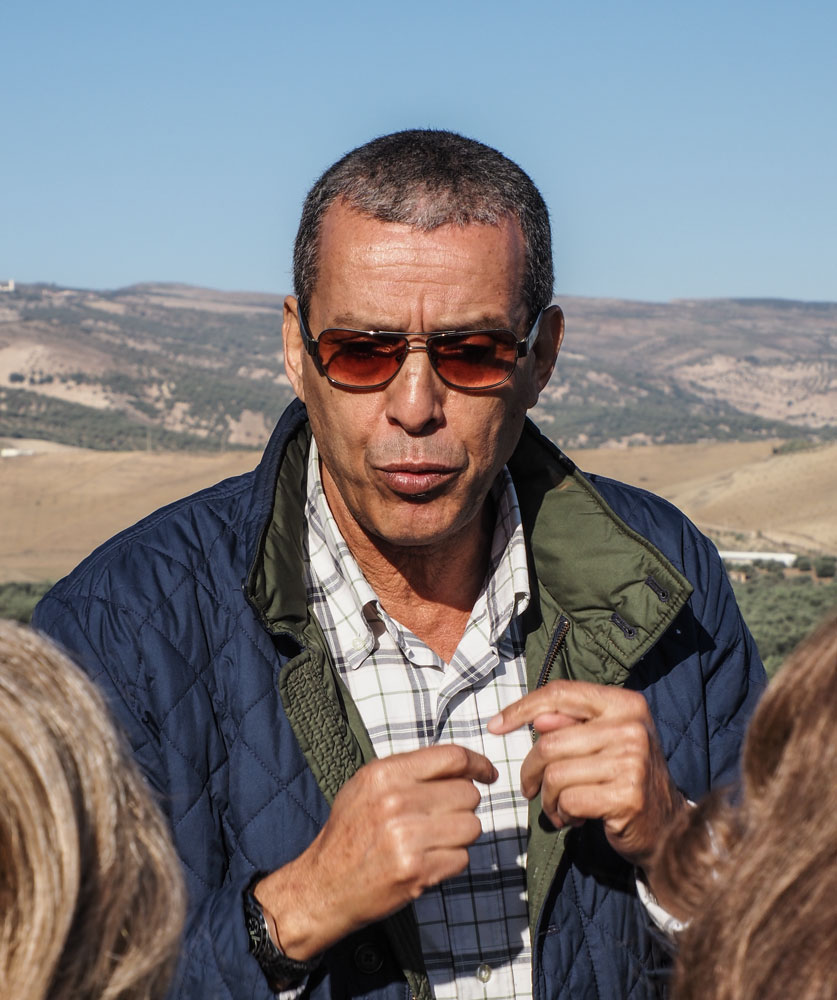
I took a LOT of pictures at this stop but there's a limit to how many I can bore you with. Then we were on the road again, and had a bathroom stop at a gas station and restaurant.
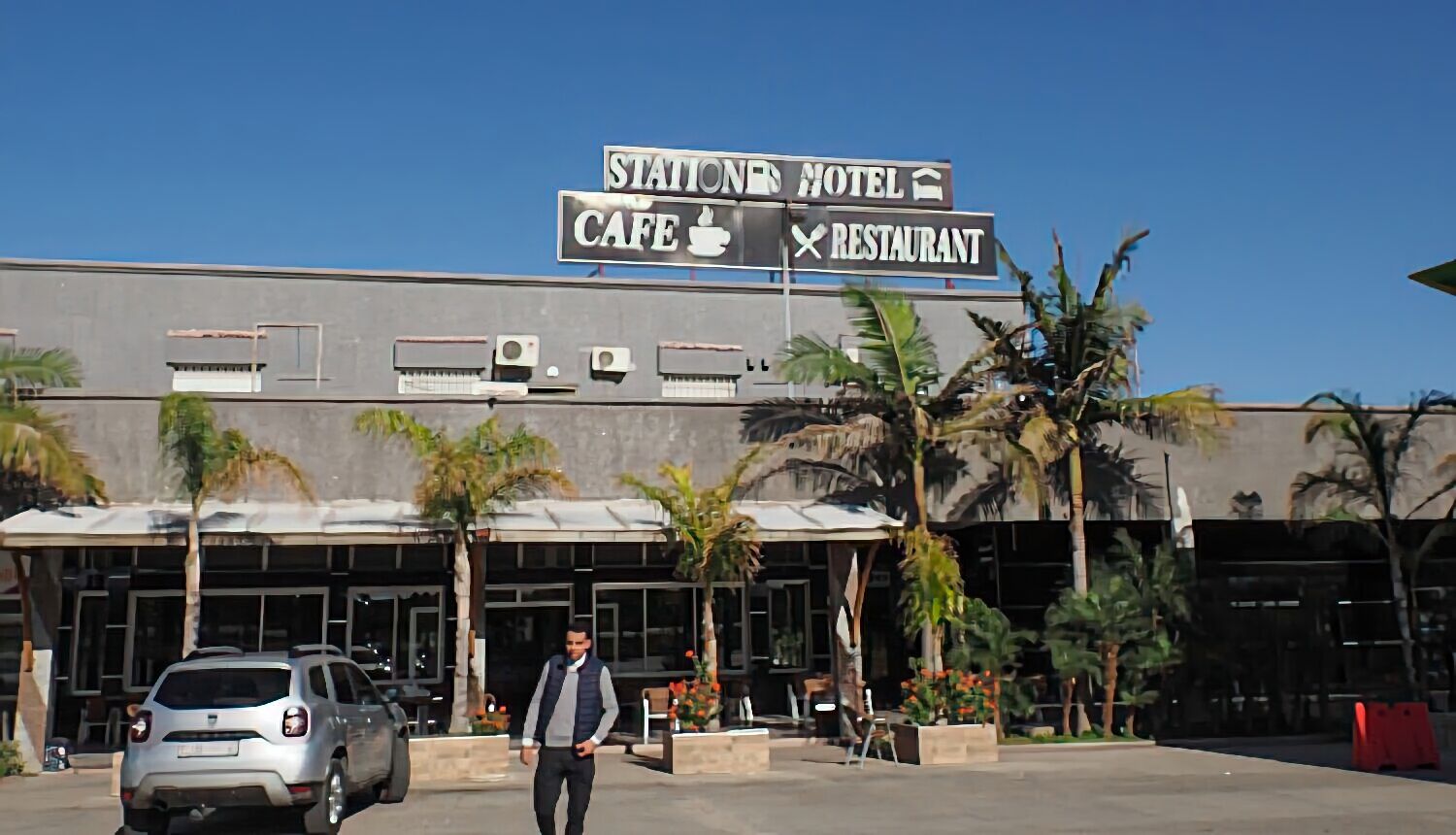
Chris treated the coffee drinkers to a cup of coffee.
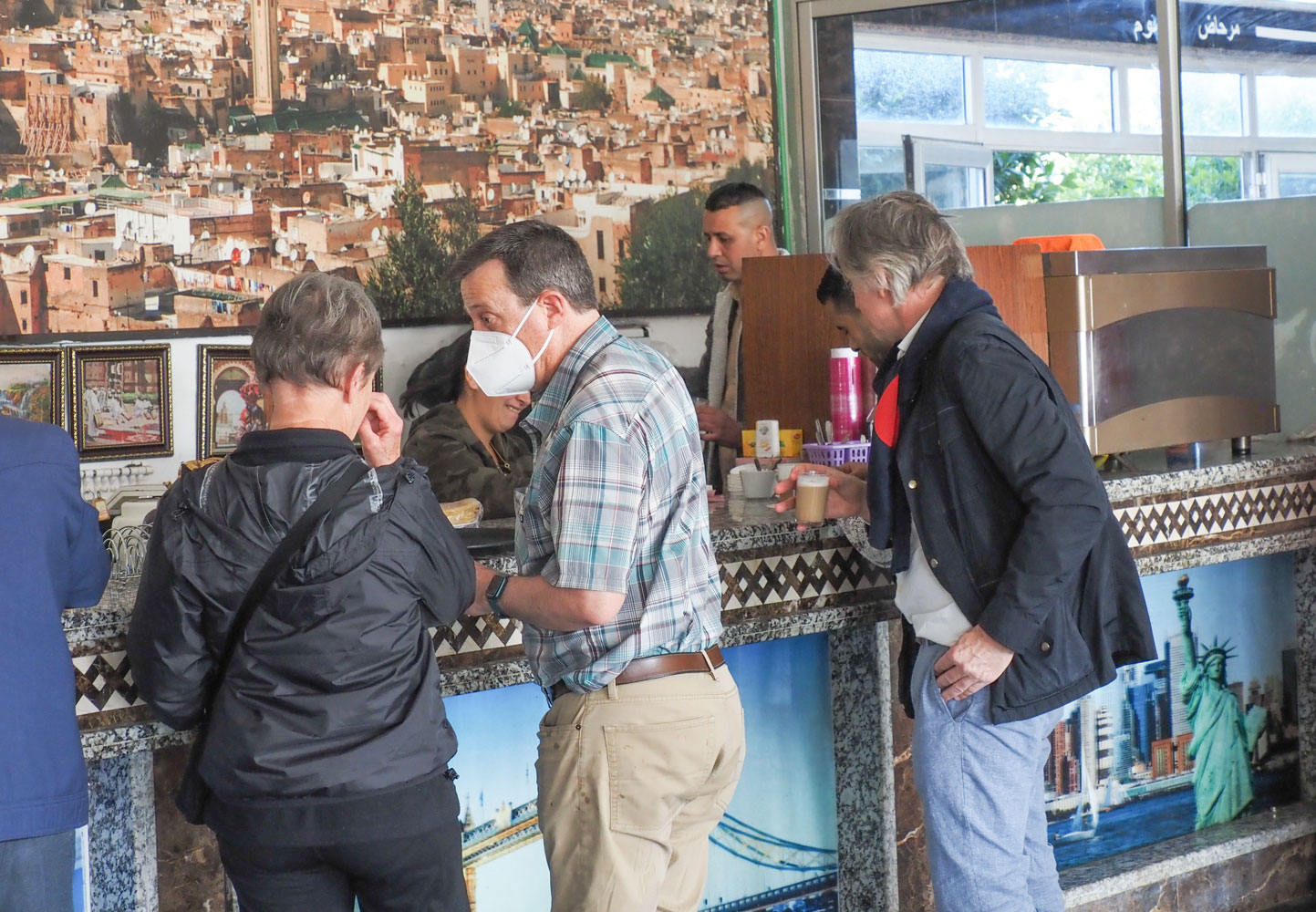
Then it was off to Volubilis. We encountered some traffic on the way.
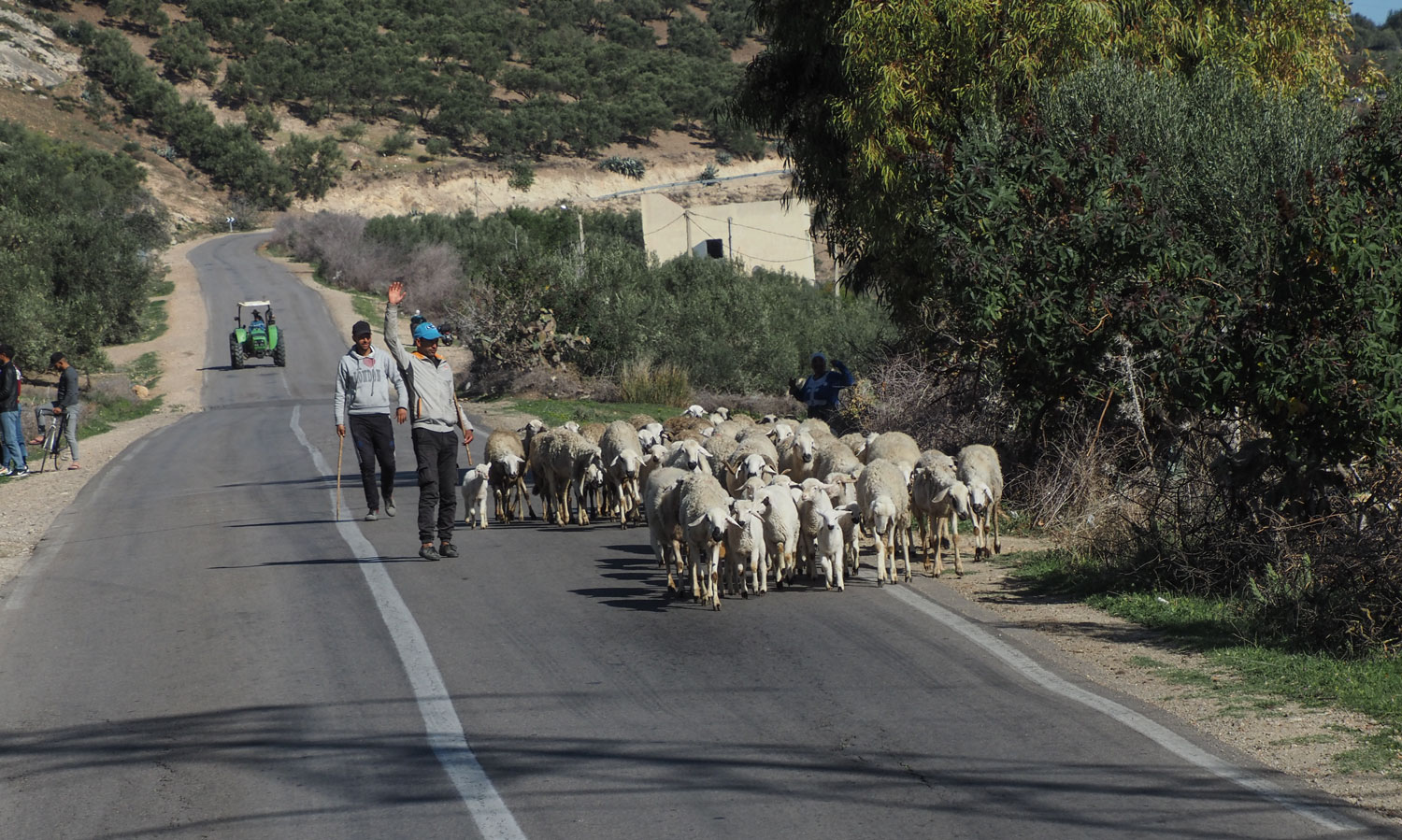
And even more traffic.

Eventually, we could see the ruins of Volubilis in the distance. This photo shows some of the vast agricultural fields we saw on the countrysides. There was much more cultivated land than we had expected to see, but much of it is rain-dependent, making things less green at this time than they should be.
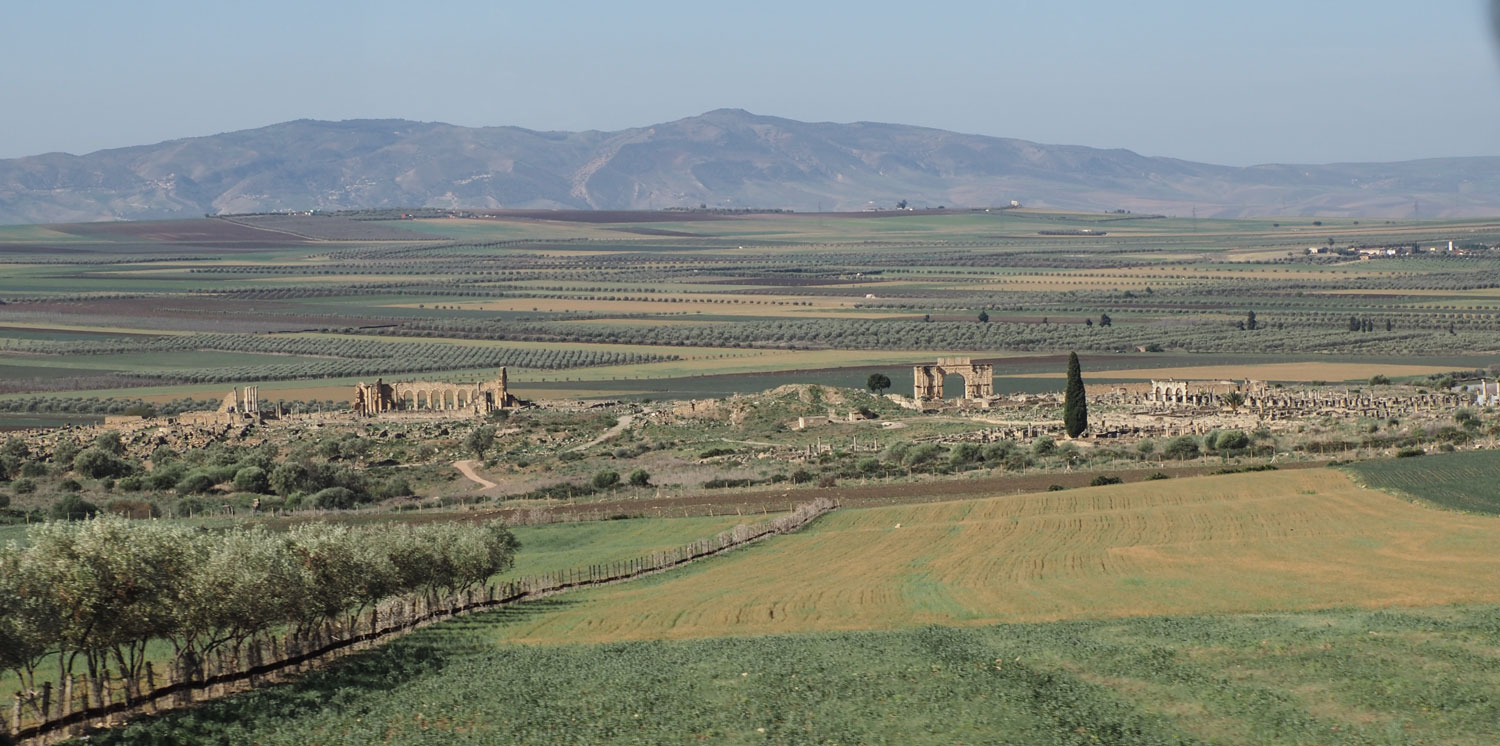
Here are Marta and Wally at the entrance of Volubilis.
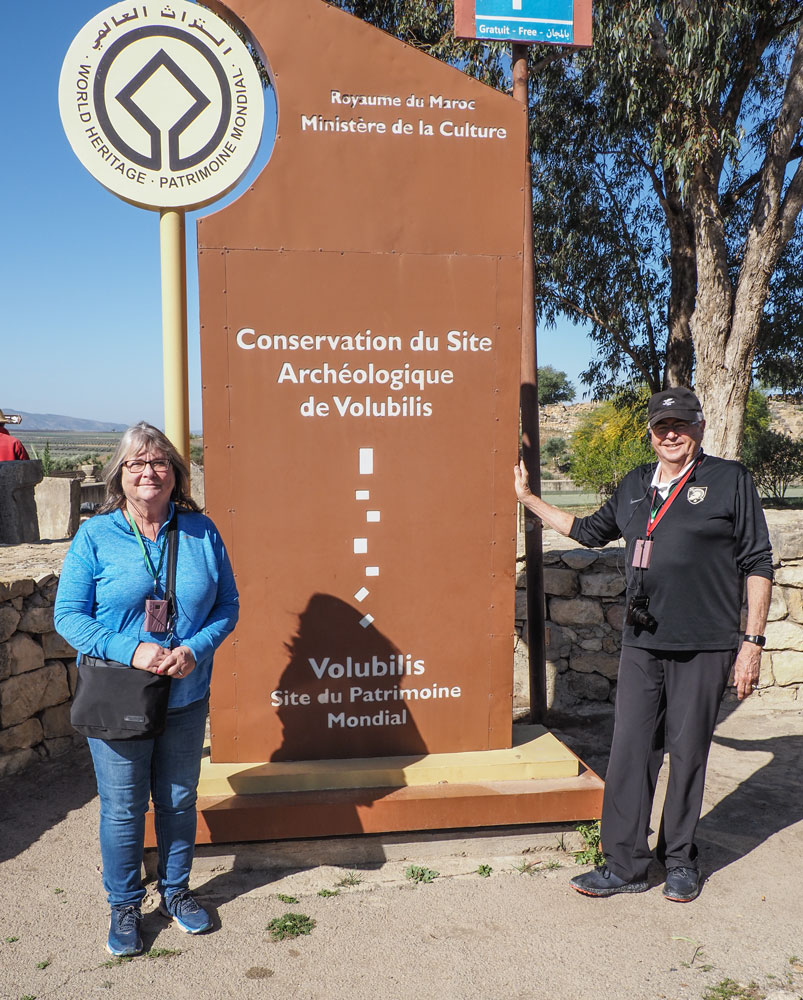
Our guide at Volubilis. Unfortunately, I don't remember his name.
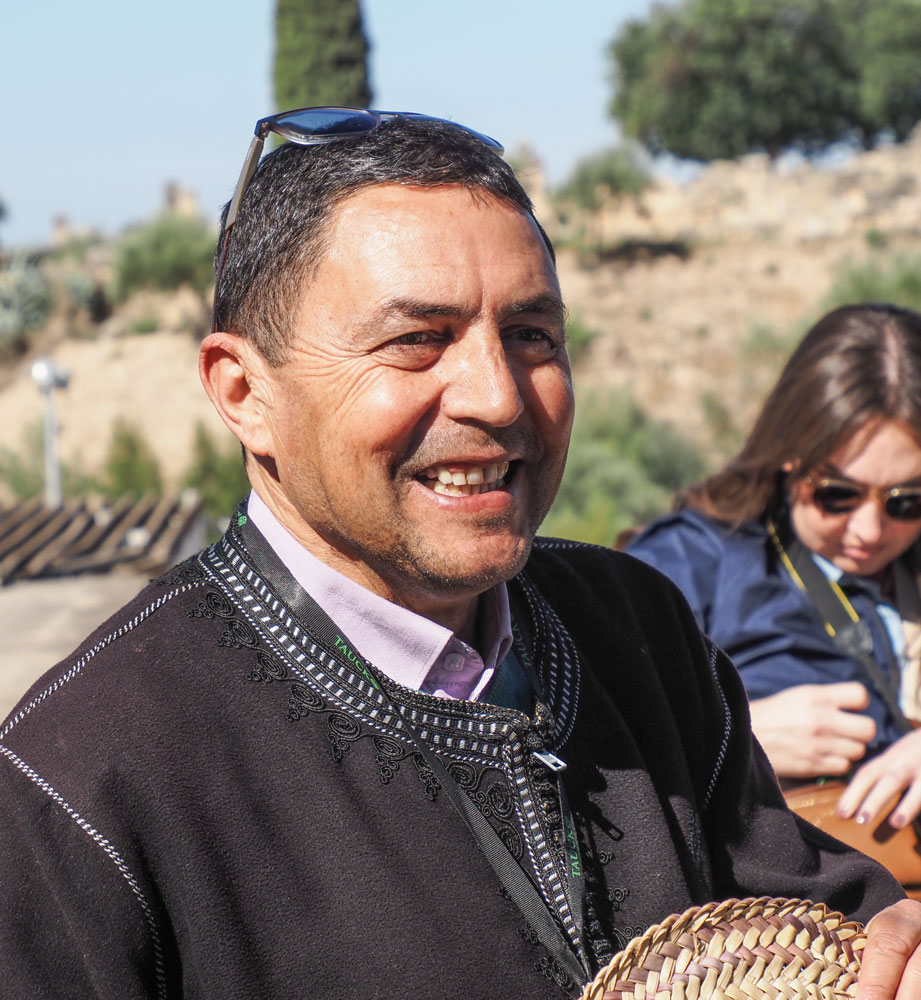
Here's a map showing the layout of Volubilis, at least the part that has been excavated.
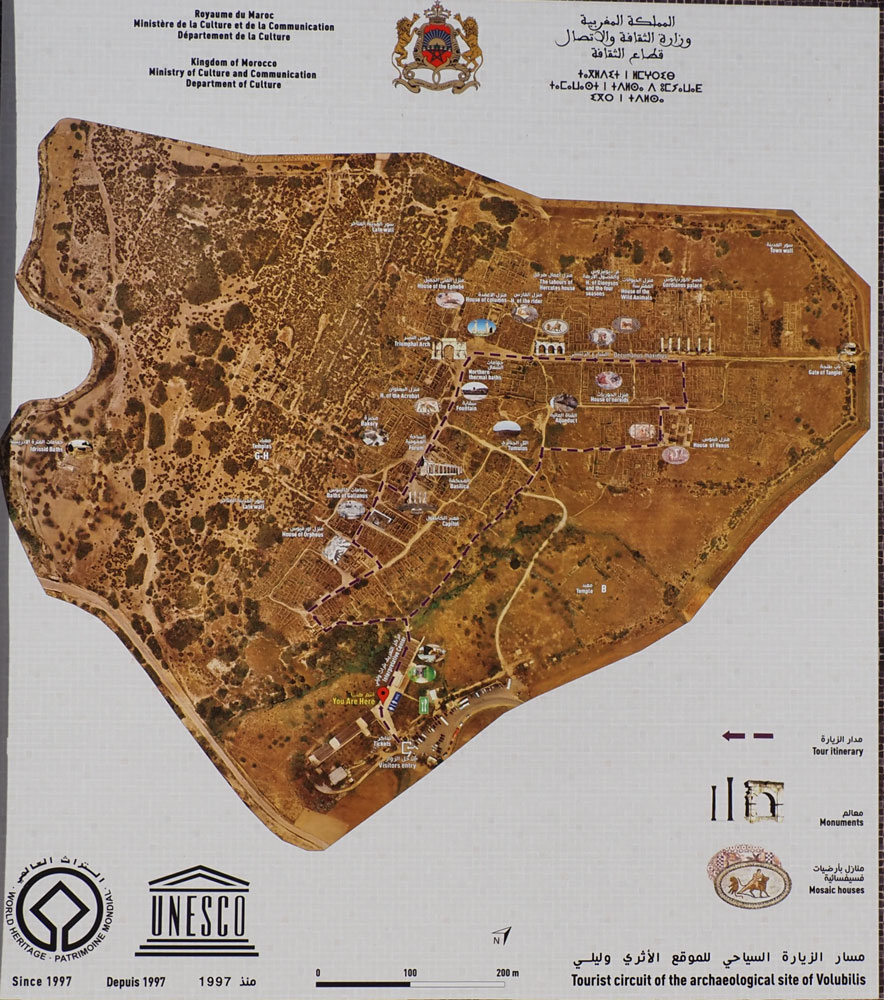
I must admit that I don't have a strong interest in Roman ruins, but I'll include a few pictures of what we saw here. If you're going to come to Fez, I suppose seeing Volubilis would be a requirement. One interesting feature was a large map displaying the entire scope of the Roman Empire. There was also a small display area for recovered small items.
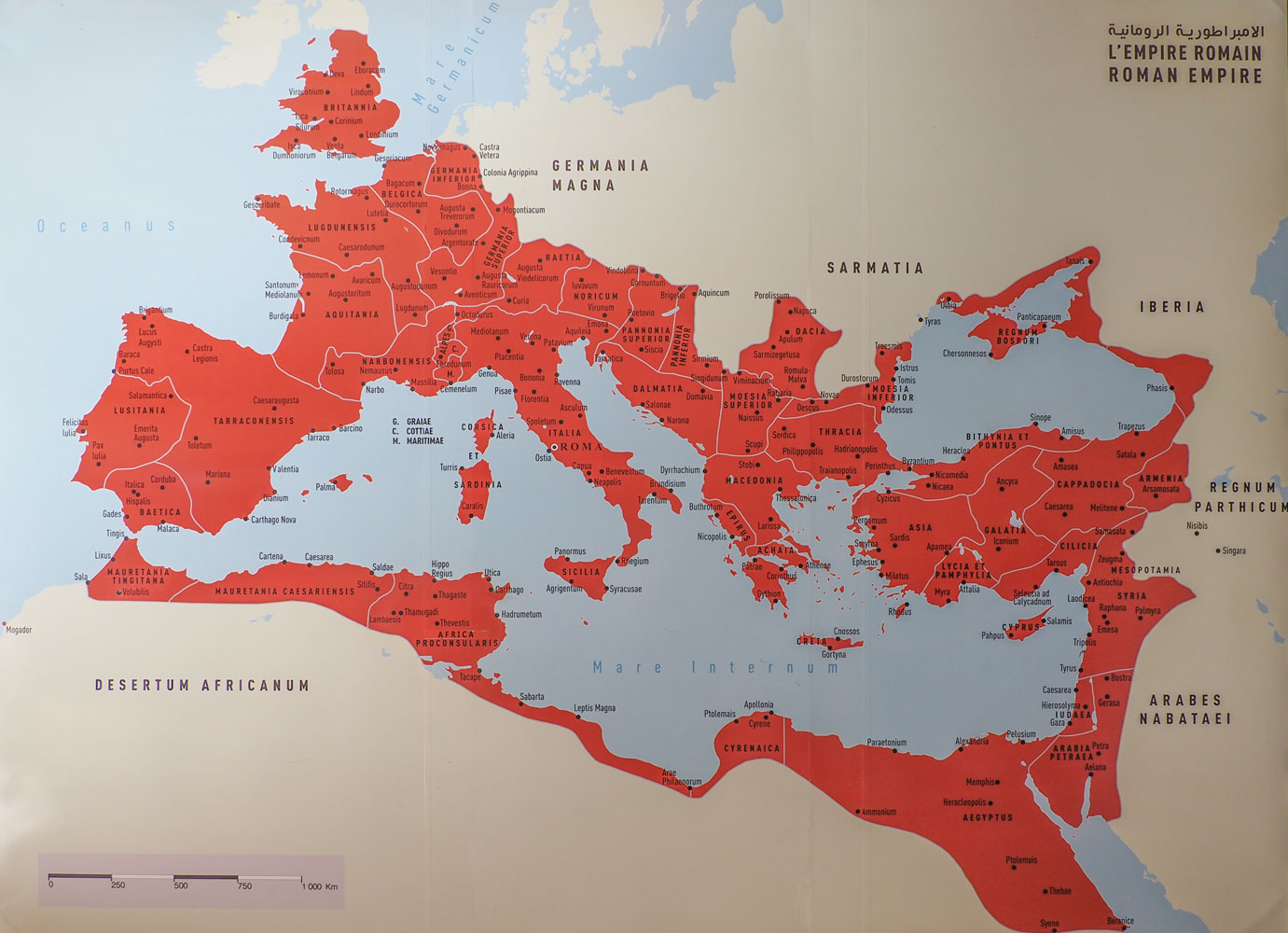
Here's a mosaic floor that was in the home of a wealthy Roman.
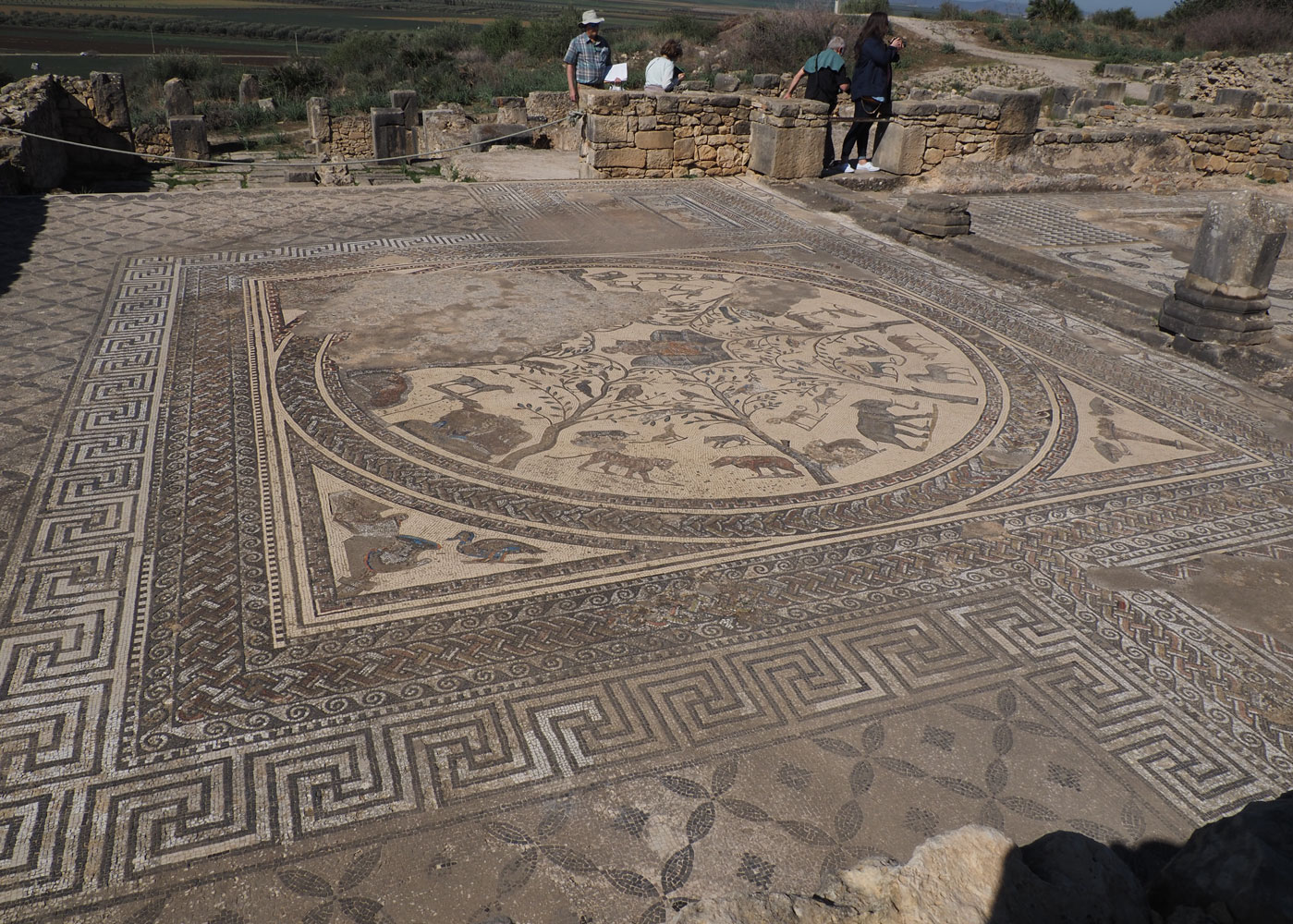
An olive processing facility. The olives would be crushed in the press shown here and that would produce the virgin olive oil. The left over material from that initial press would then be put into a "bag" and further pressed to get lesser oil. Note that the "arm" of the press is short - set up for slaves pushing it, not horses or donkeys. Its an indication that slavery flourished in the Roman Empire during this time. During Caesar's conquest of Gaul, he became rich primarily through the sale of captured Gauls as slaves.
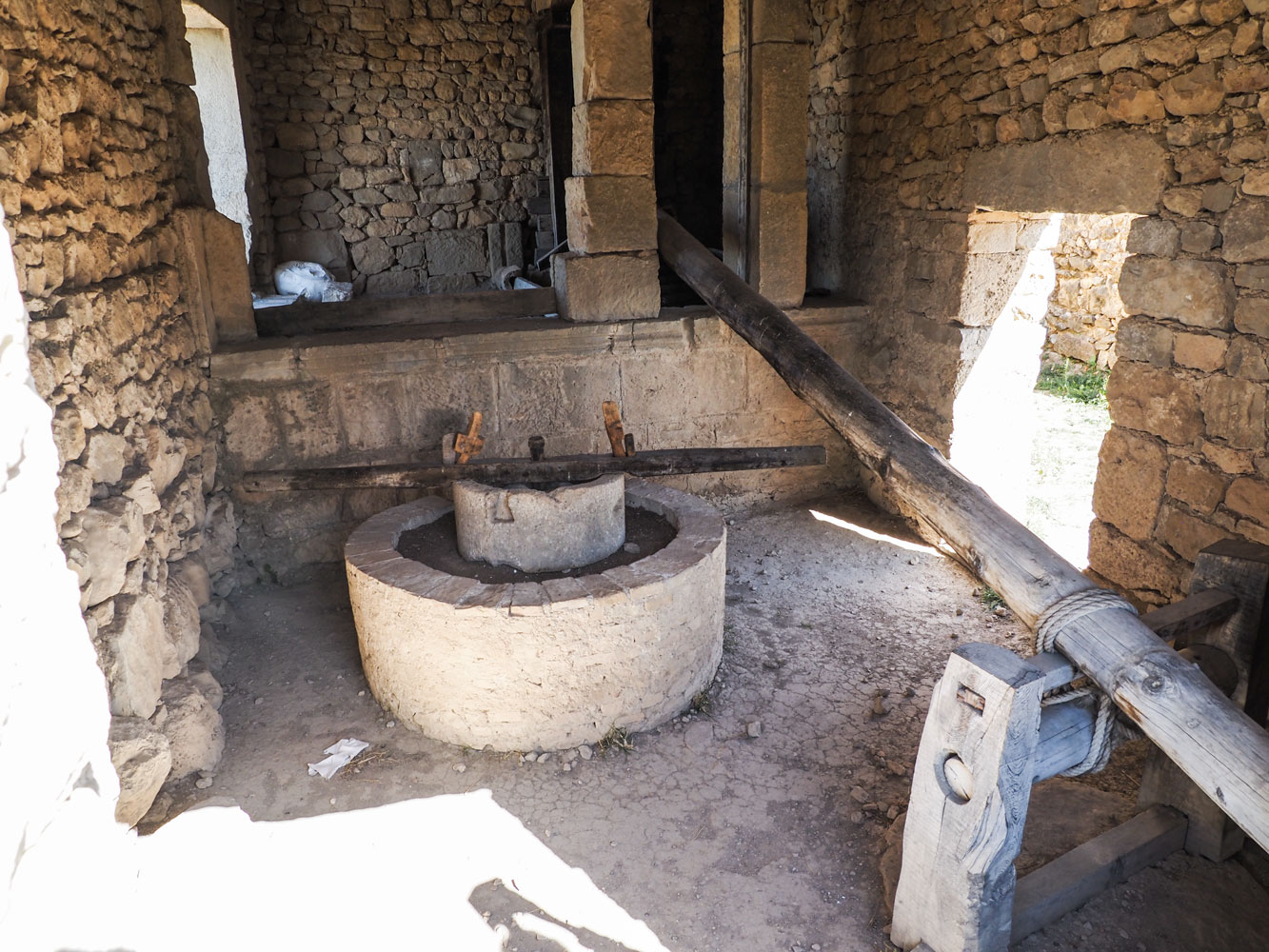
Here's a diagram of how the pressing facility worked. Note that this building and the presses were reconstructed - they were not discovered in this state.
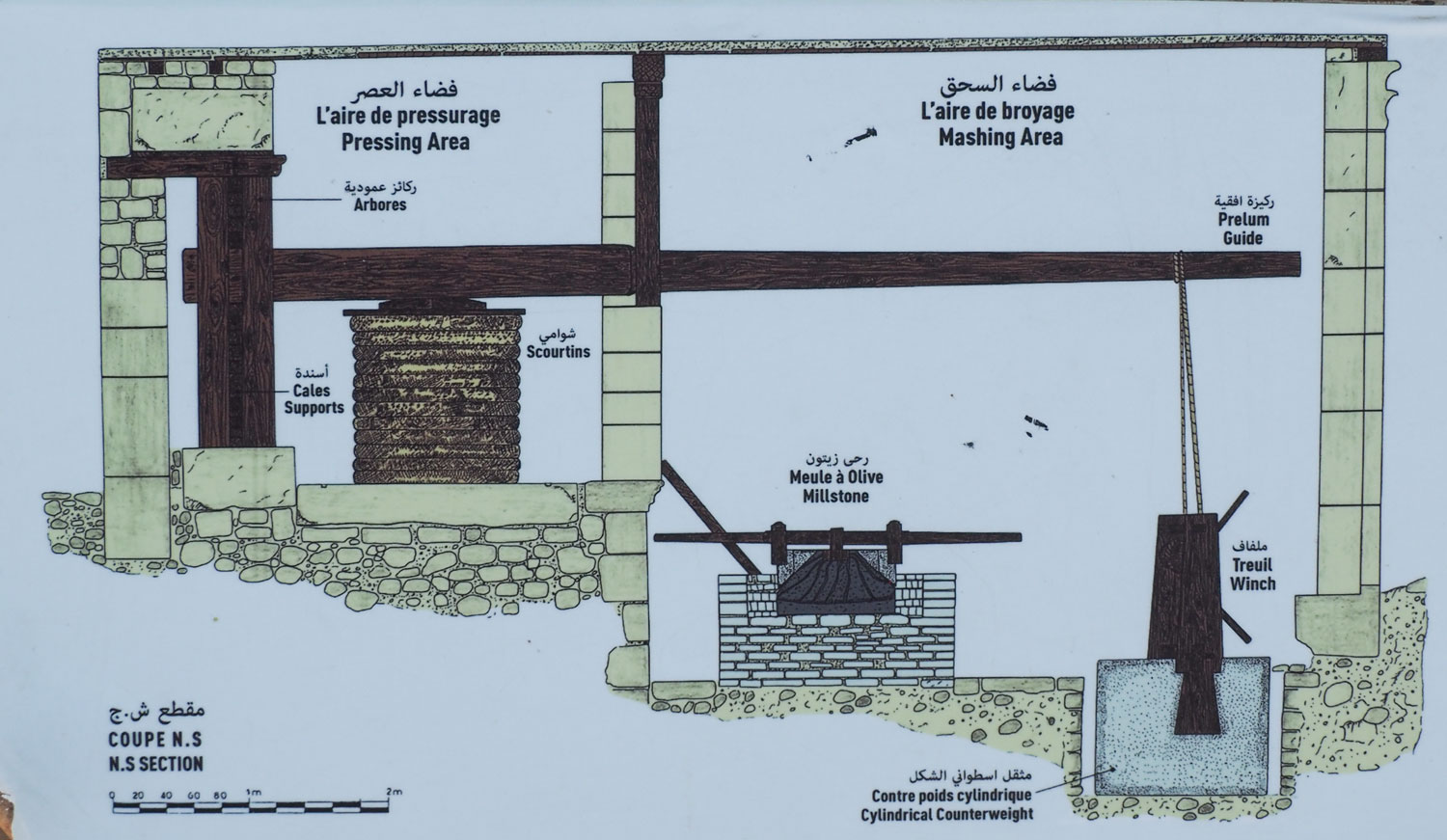
Many of the other structures were also reconstructed. If you look at the columns in this next picture, you can see the brickwork that was used to replace the sections of the columns that were lost. Note the nest of a pair of cranes on top of one of the columns.
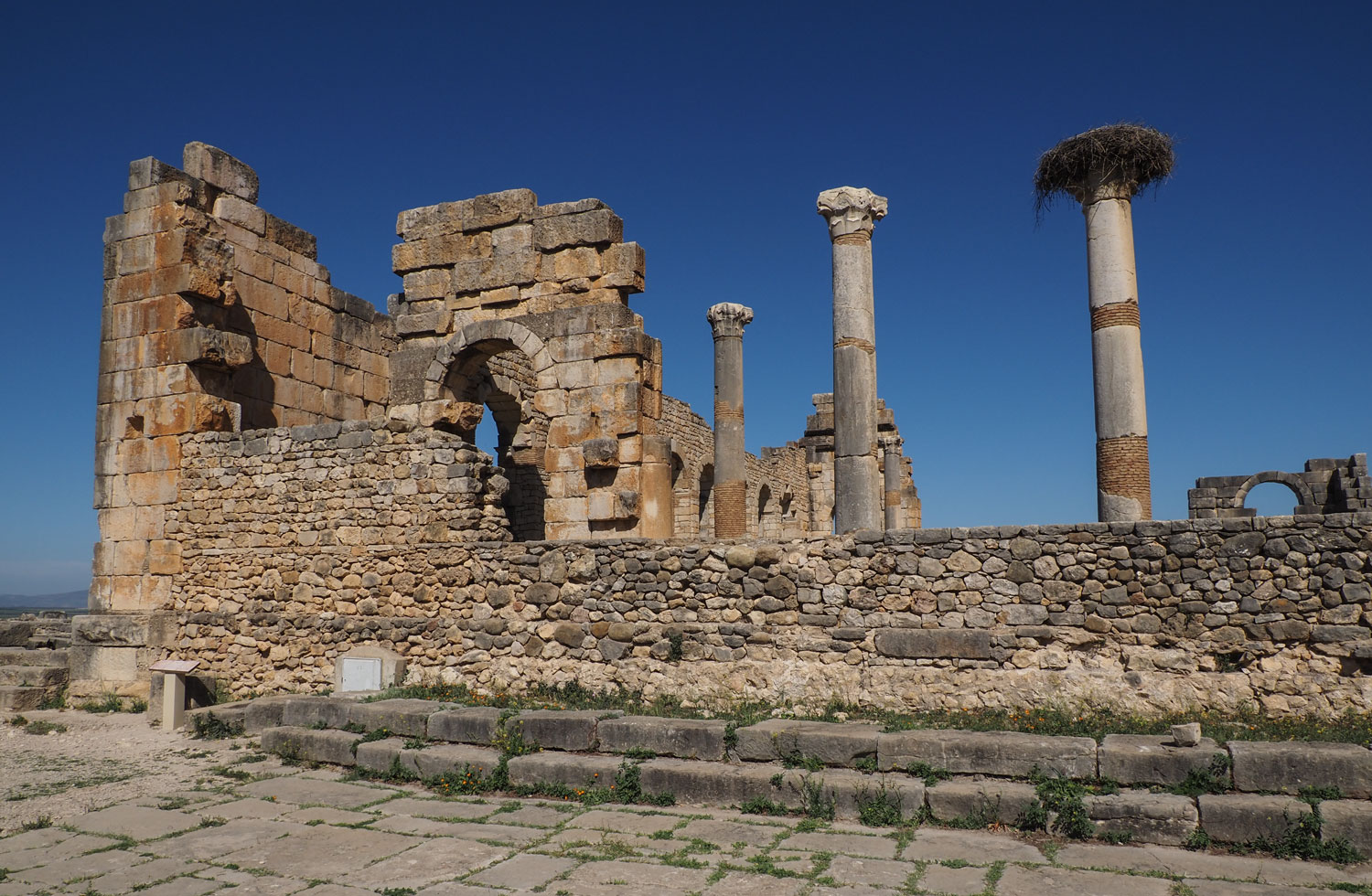
This arched structure was also reconstructed.
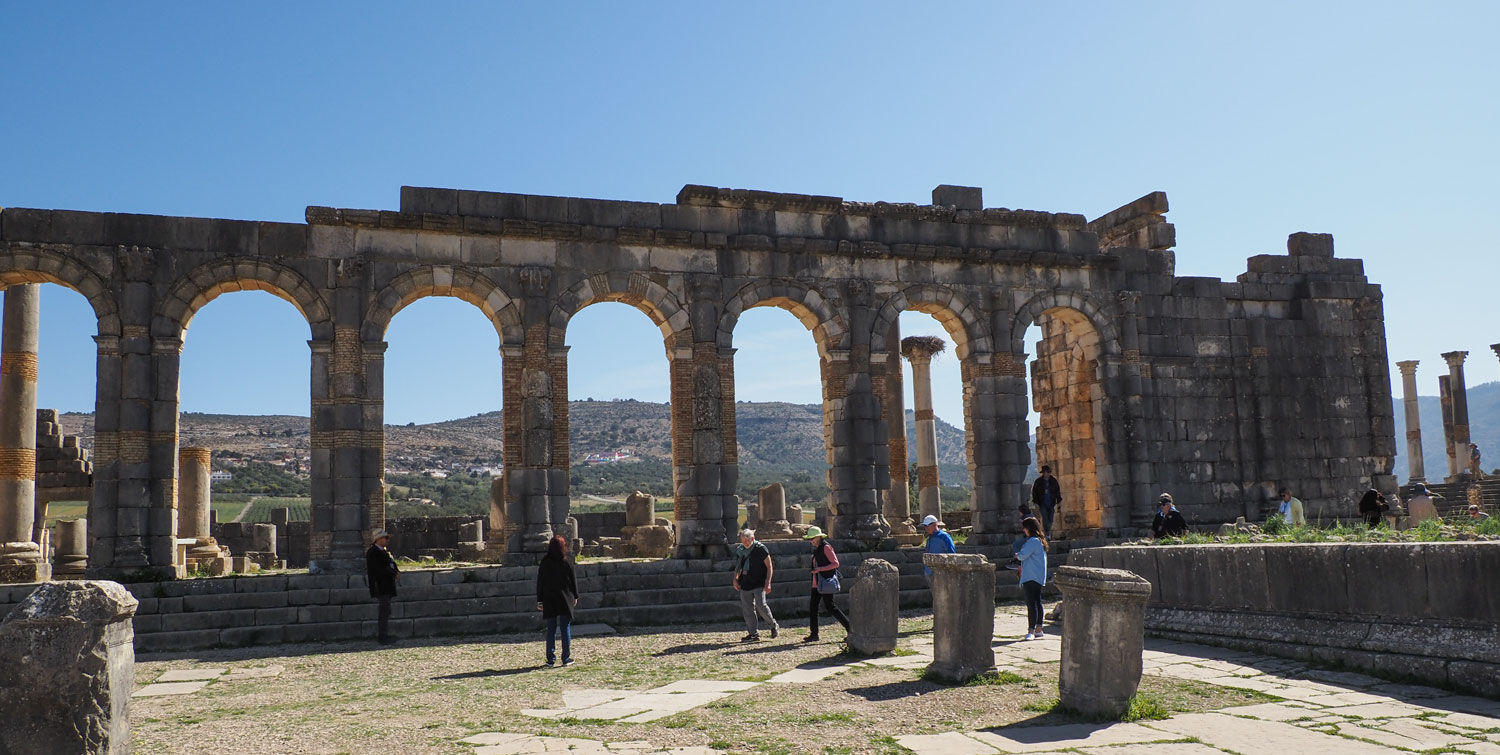
Janet and our guide at the arches.
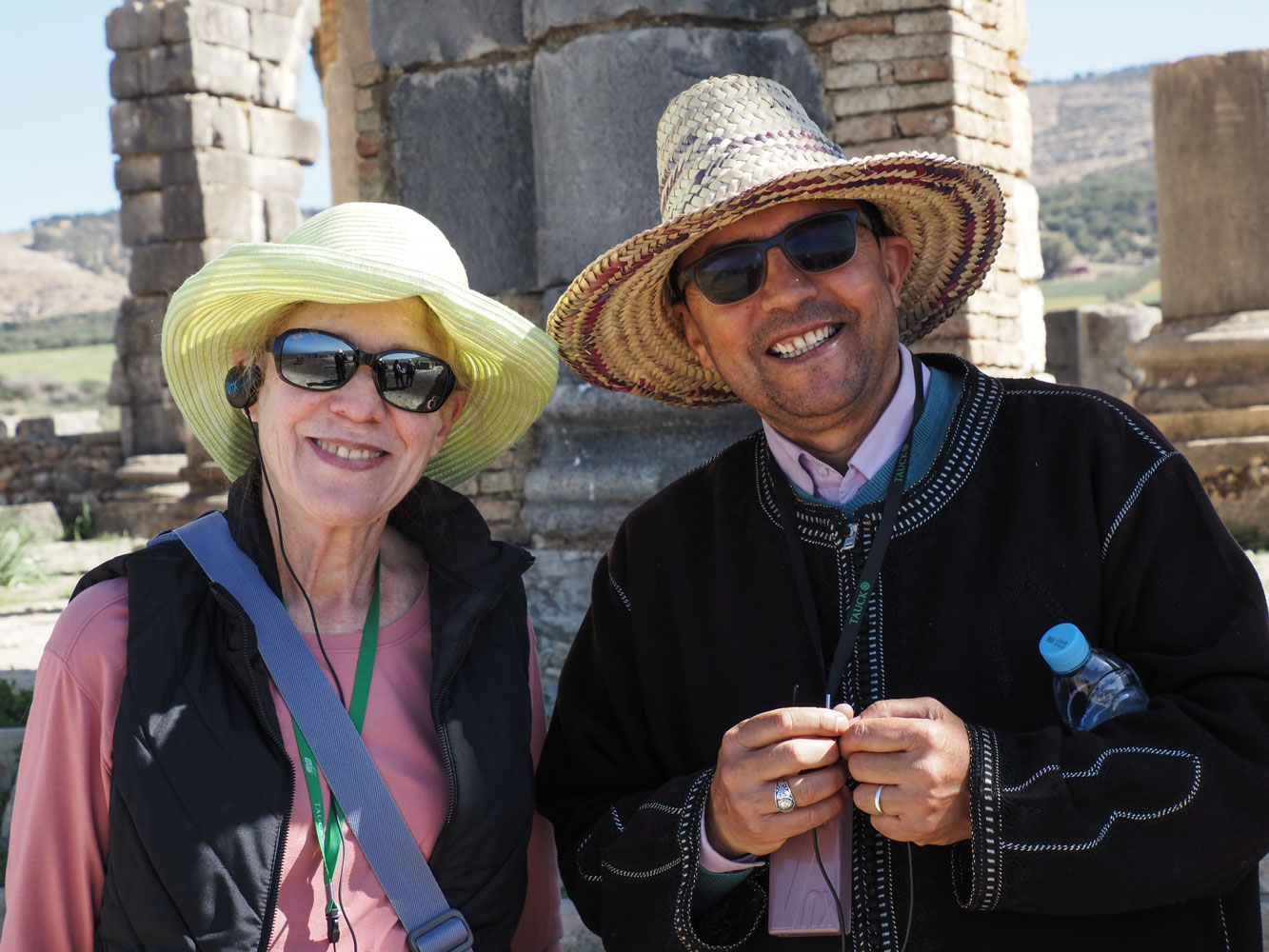
A ceremonial arch that has been reconstructed.
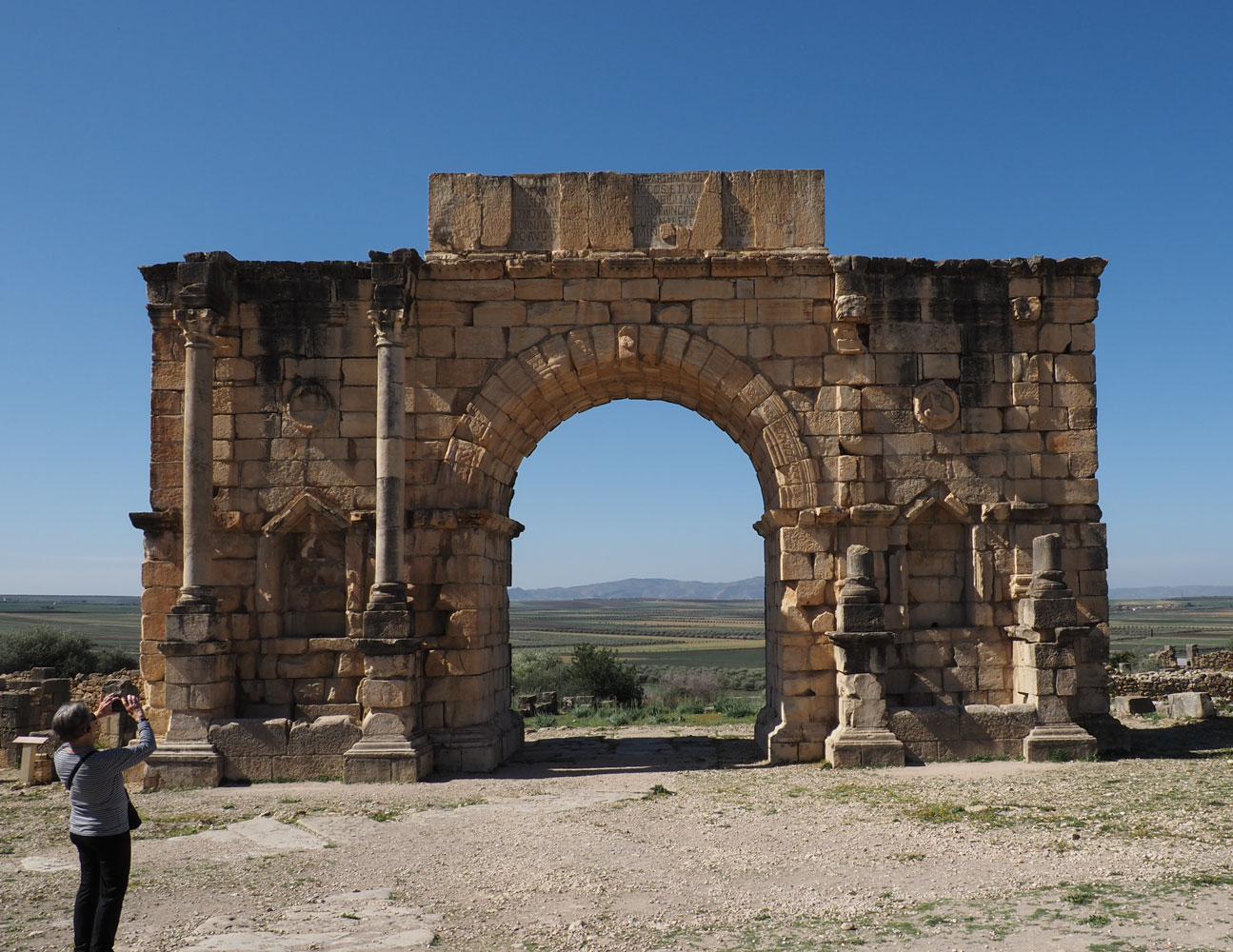
A view out over the residential part of the city.
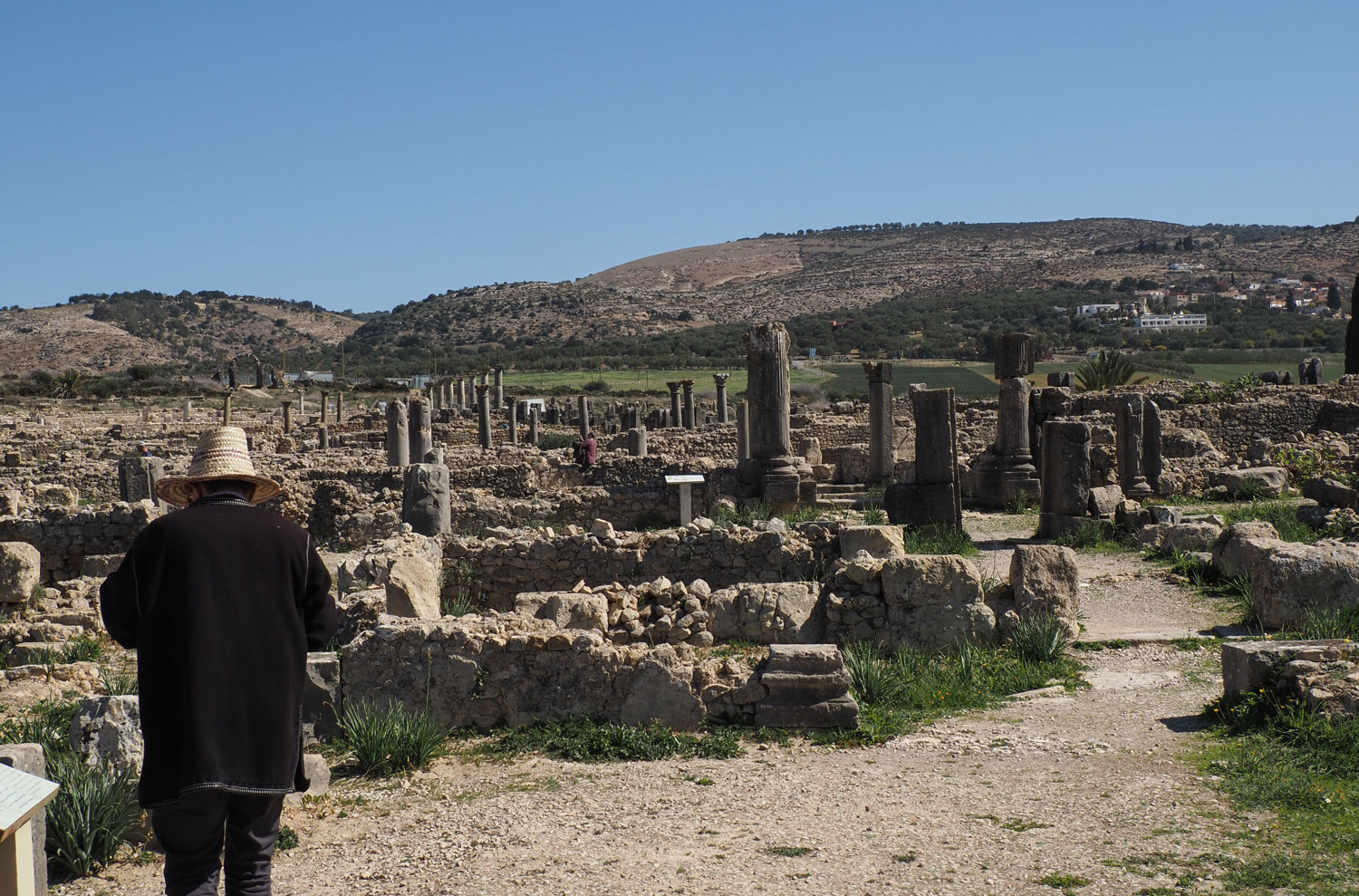
Another mosaic floor.
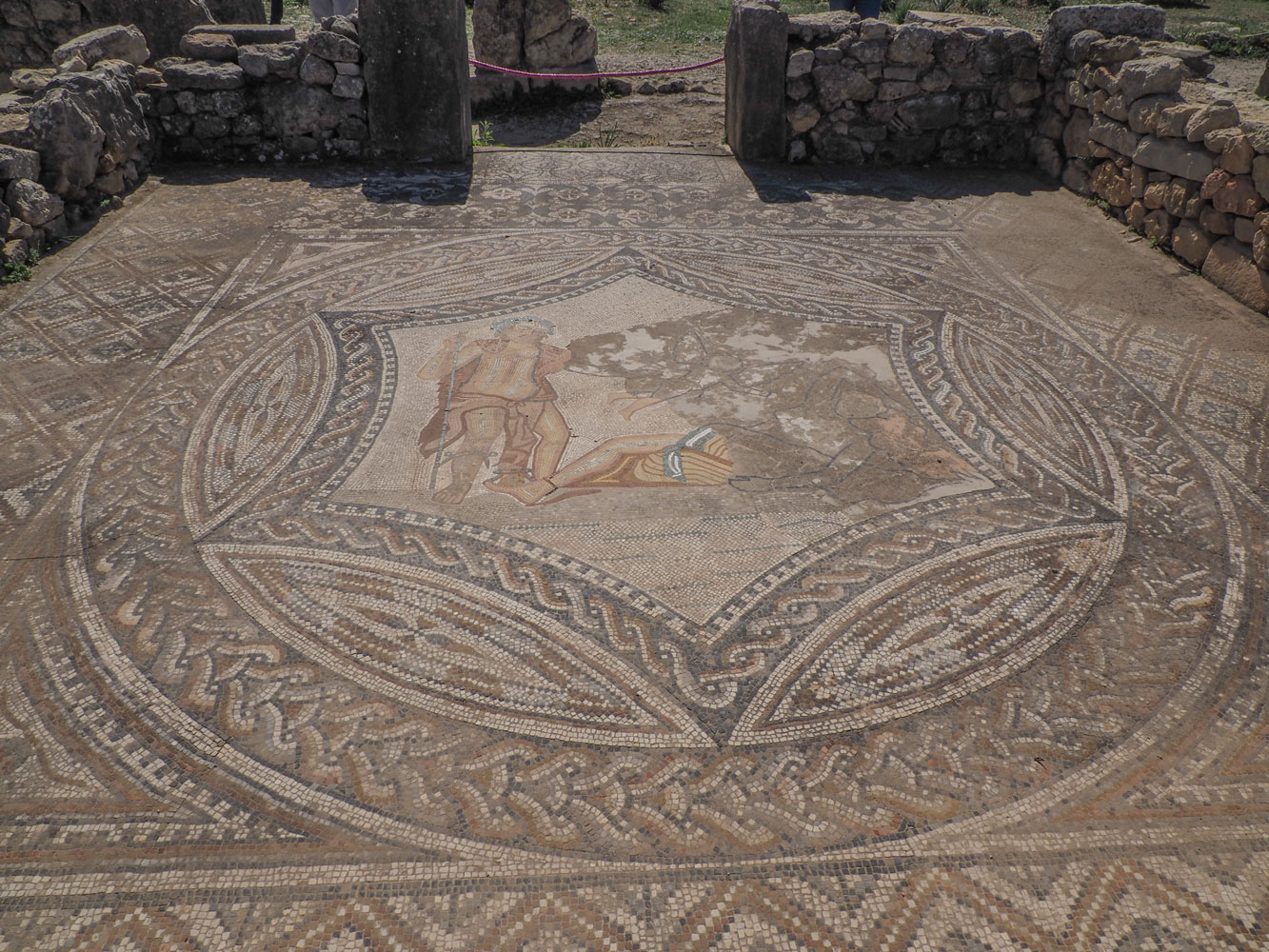
One last floor.
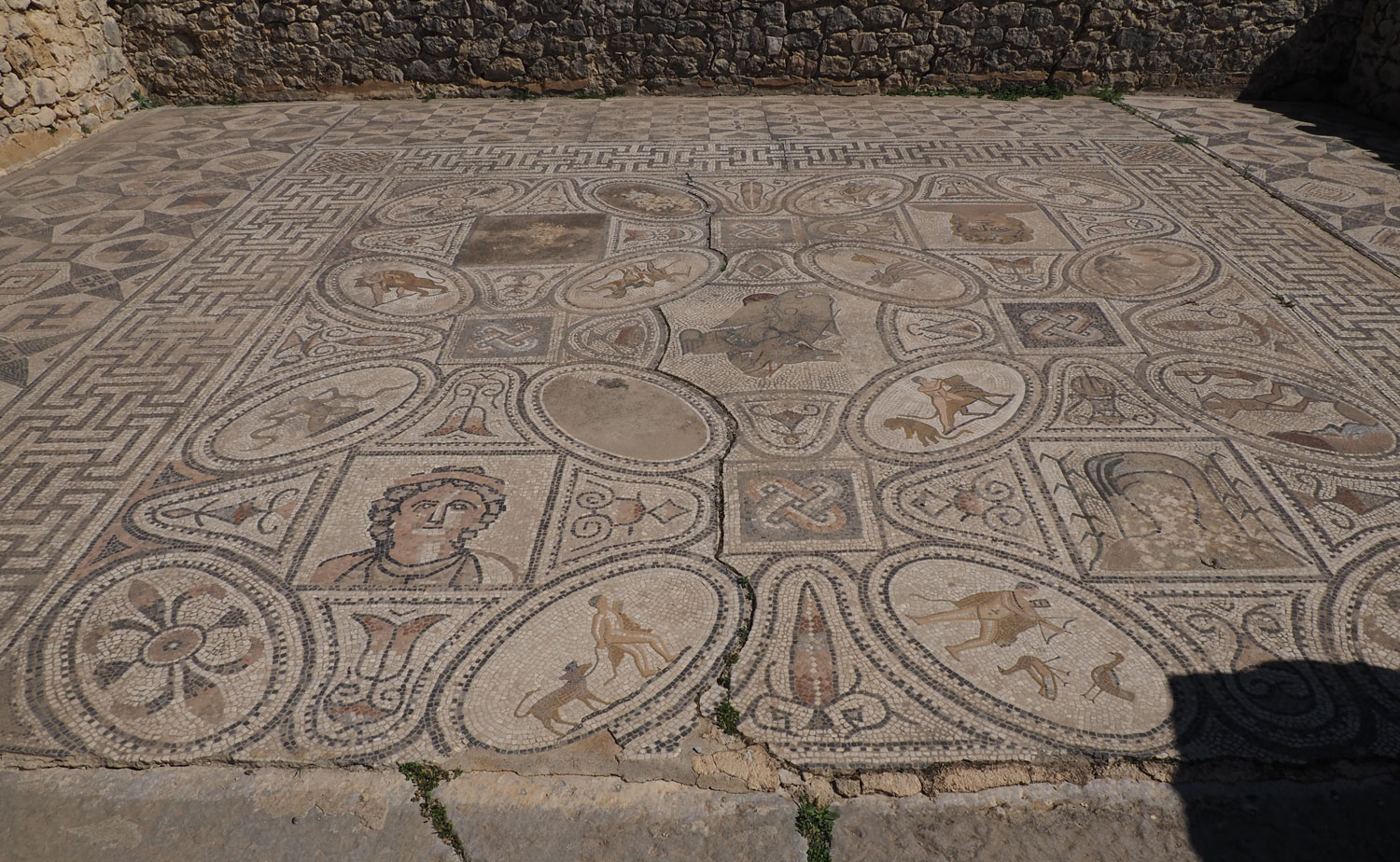
One day, they'll use virtual reality and we'll be able to walk through this ruin to see it as it was at it's peak, including with the virtual representation of the people who lived here - going through their daily lives (makes you think of "The Matrix" doesn't it?).
That was our visit to Volubilis. We headed to Moulay Idriss Zerhoun for lunch at the Scorpion House perched high on a hill overlooking Moulay Idriss. Here's Moulay Idriss as we approached it. It was less than a ten-minute drive from Volubilis. Moulay Idriss is named after Idris I who founded the Idrisid dynasty.
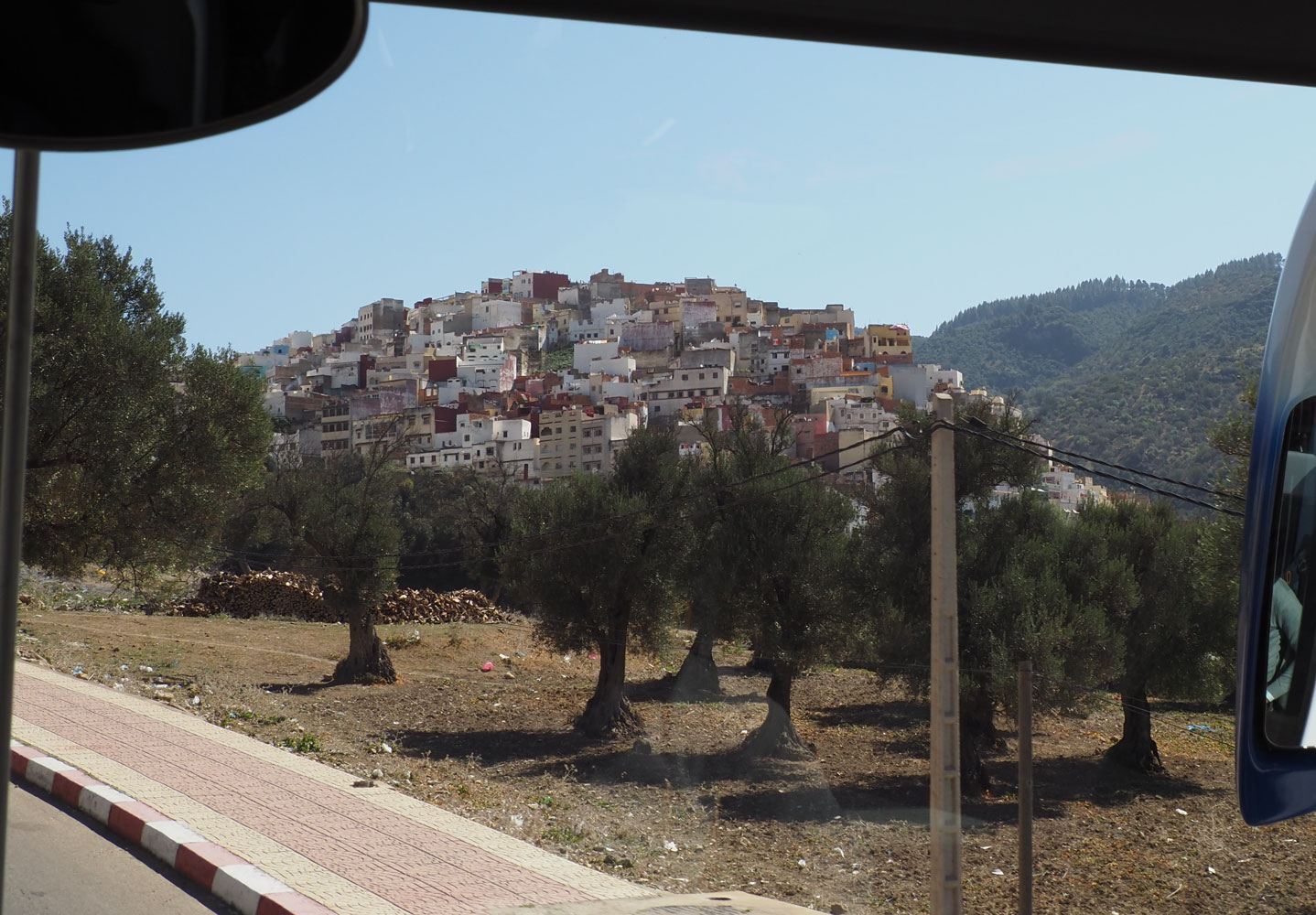
We walked to the main square and then entered the medina. Behind the archway in this picture is the mausoleum of Idris I. He is regarded as the "founder of Morocco."

Once in the medina, the narrow streets led upward. Here's one of those poor donkeys coming down. You can see how narrow the alleyway is - it's barely one donkey-load wide.
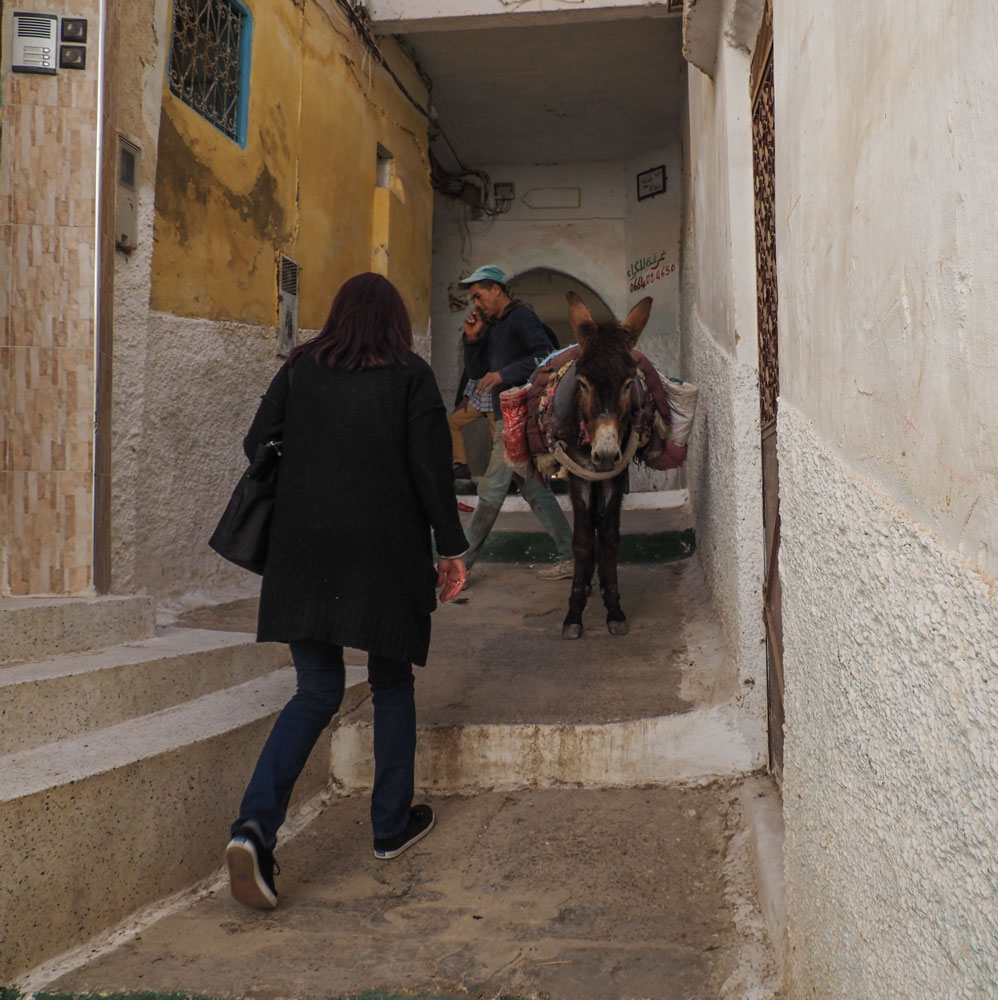
The path led up and up. Chris says 72 steps but it seemed like more. The people who live here must have strong legs:-)
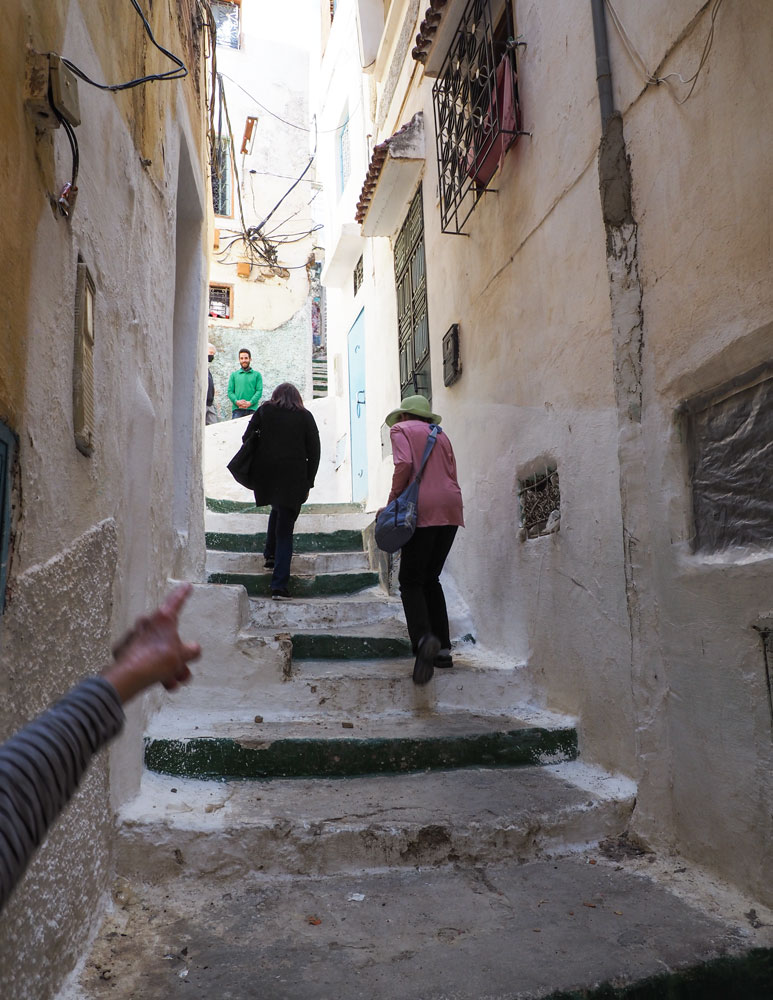
Eventually, our path lead to the doorway of the Scorpion House and we entered. The Scorpion House is the "retreat" of Mike Richardson, who owns Cafe Clock restaurant in Fez.
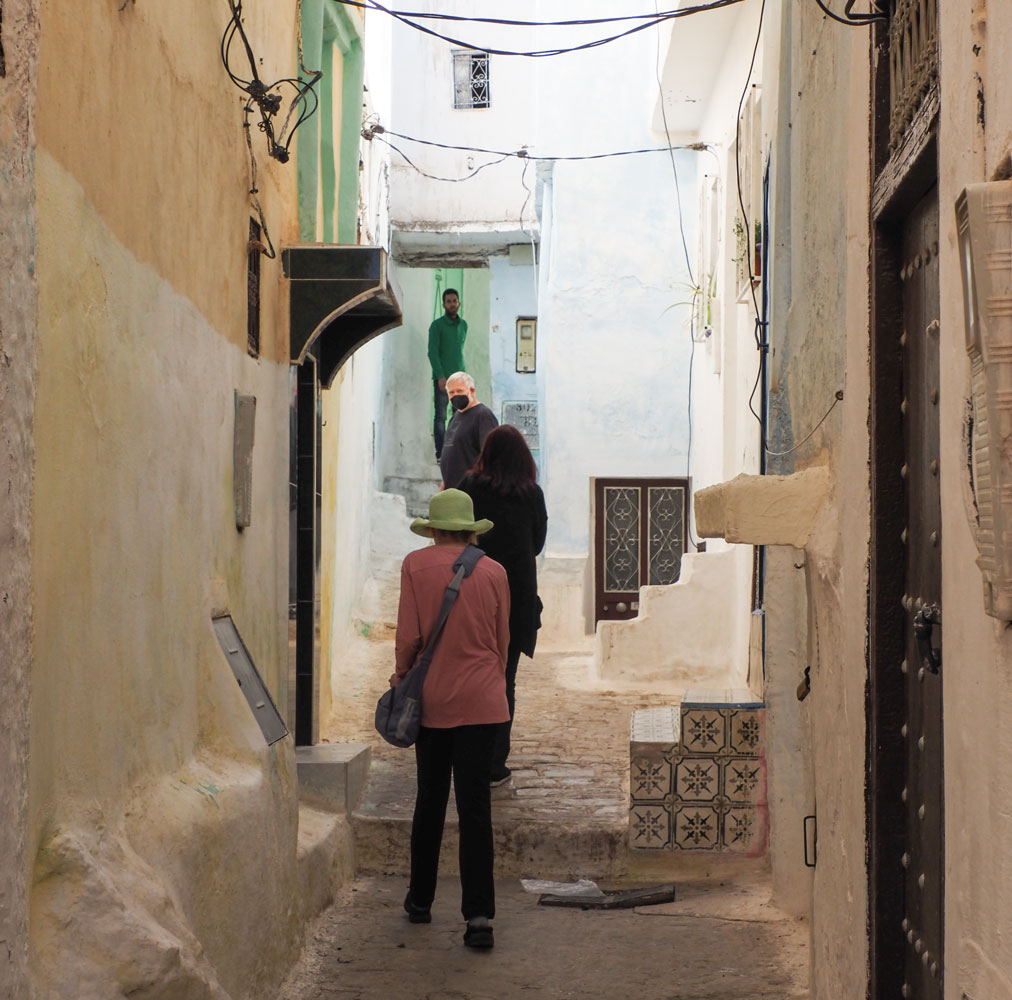
But our journey was not over - we had steps to climb in the home.
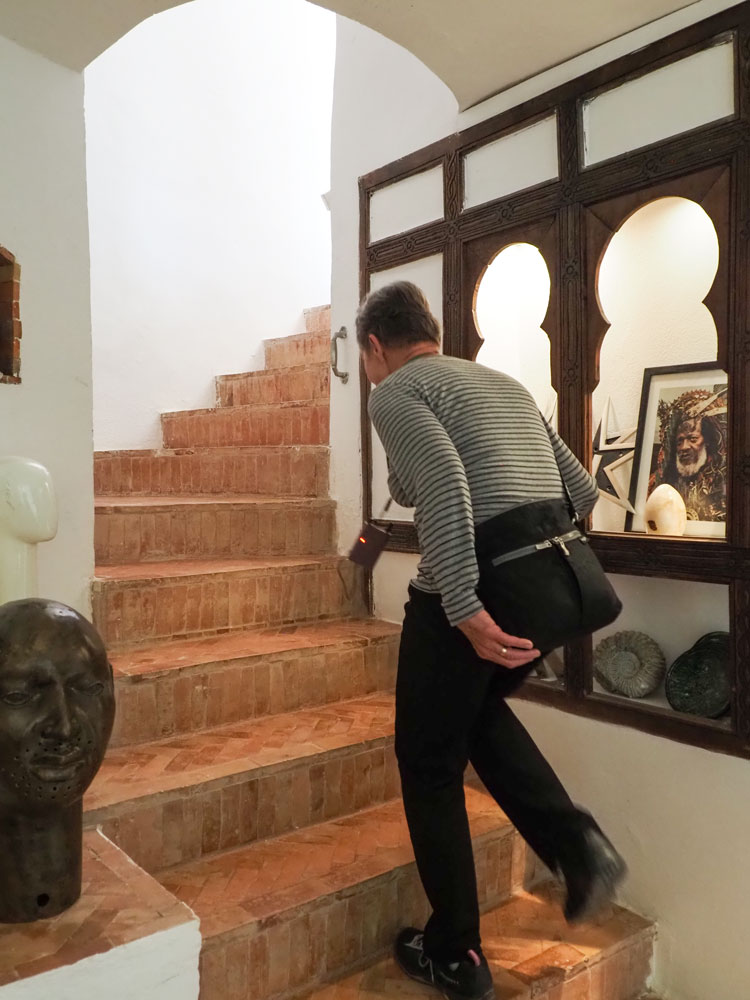
But once we reached the top, we were rewarded with a view over the town of Moulay Idriss. The green roofed buildings are the mausoleum of Idris I.
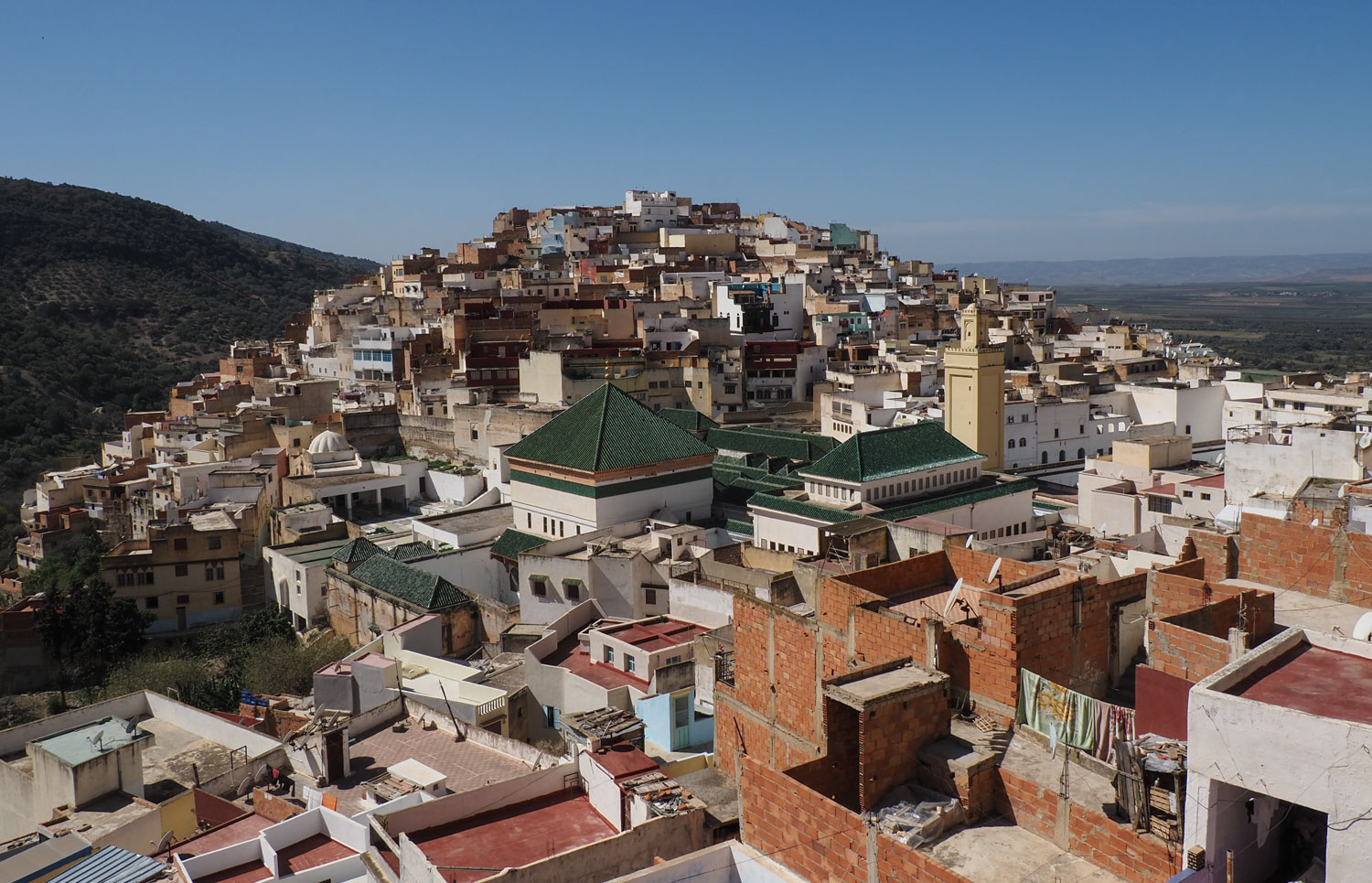
Lunch was buffet style and mostly vegetarian.
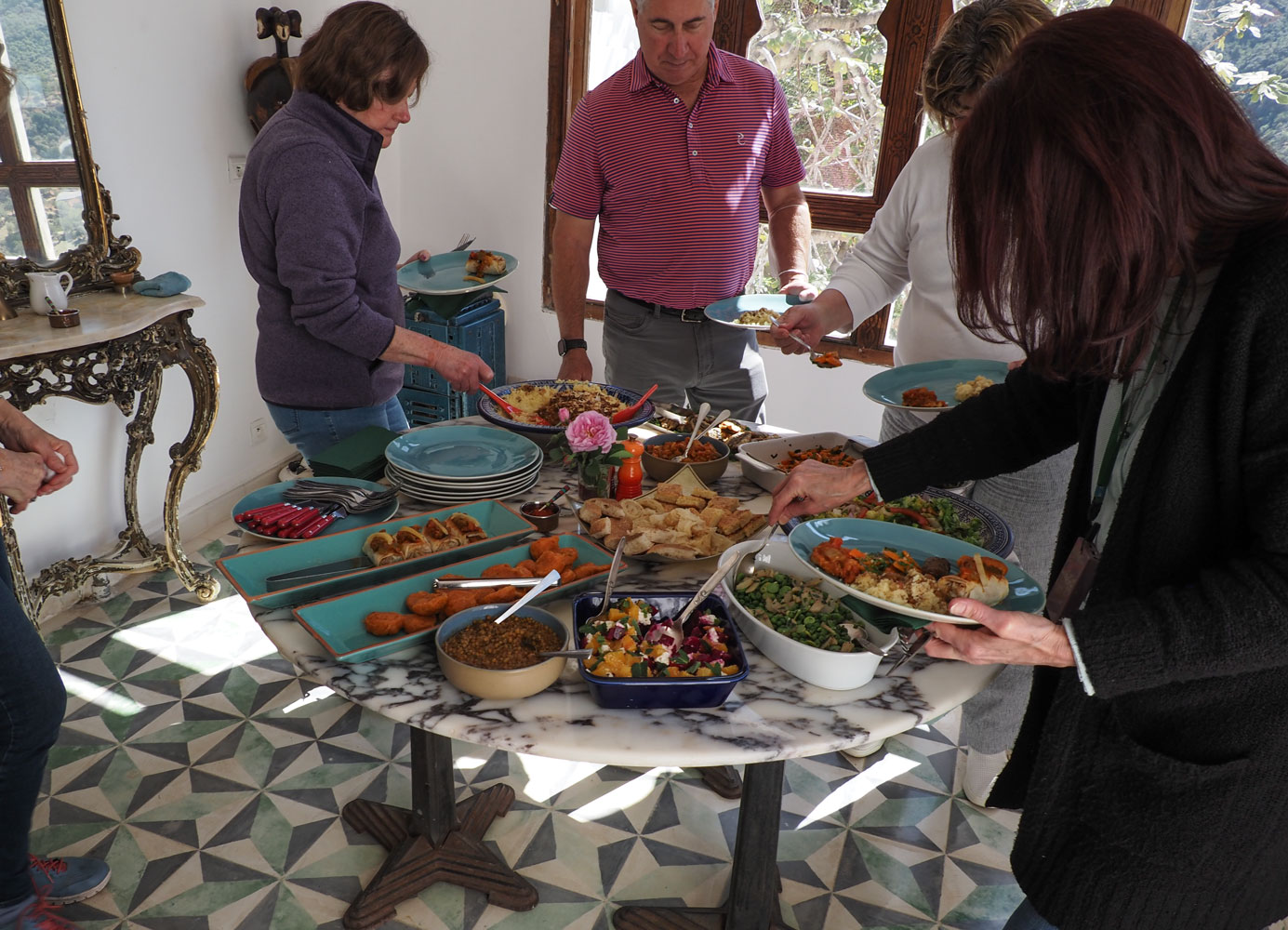
Here's a picture of our host, Mike Richardson.
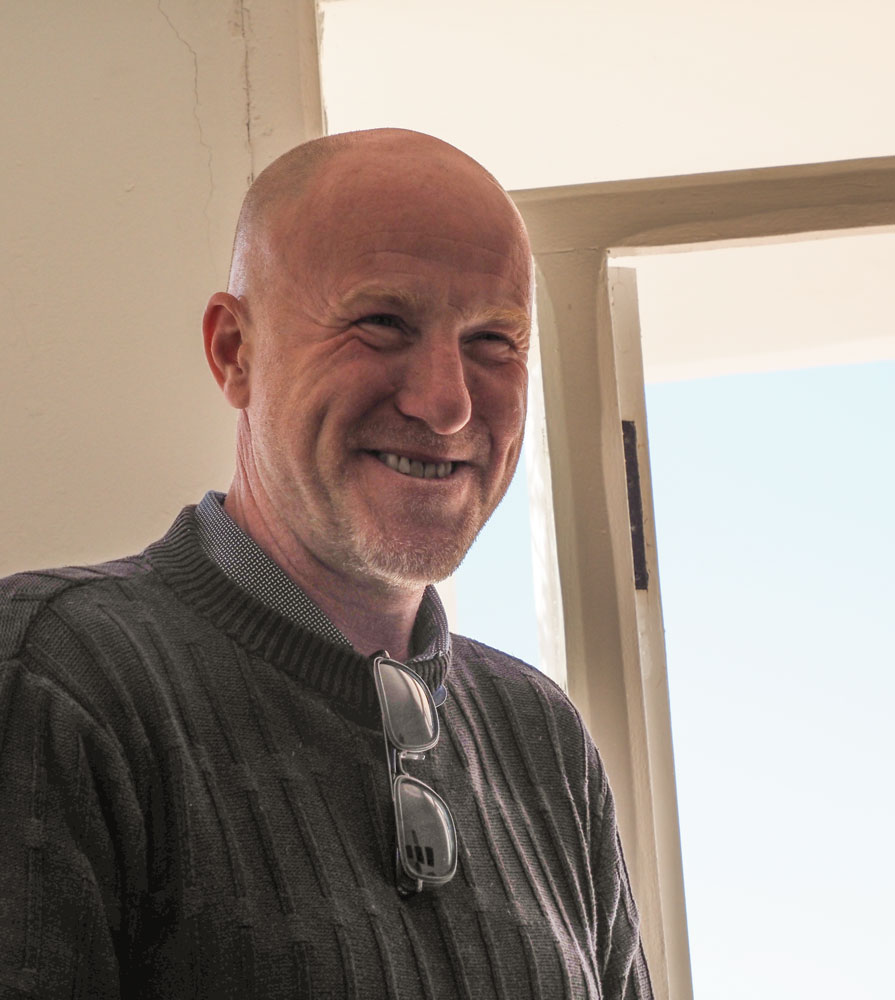
I used the bathroom in the house and was surprised to find a barber's chair in the highly-decorated room.

Chris took pictures of everyone on the patio of the house. Here we are.
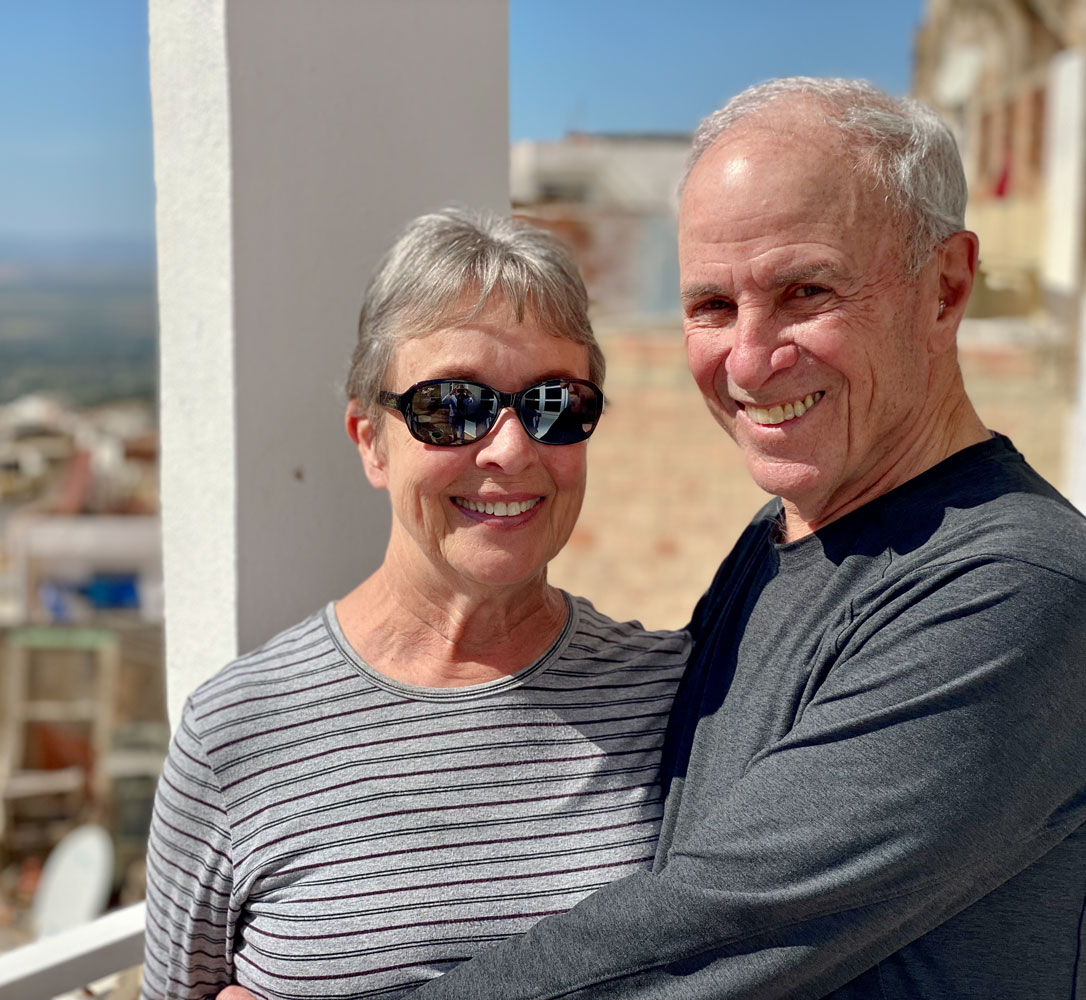
A picture of Janet with the city in the background.
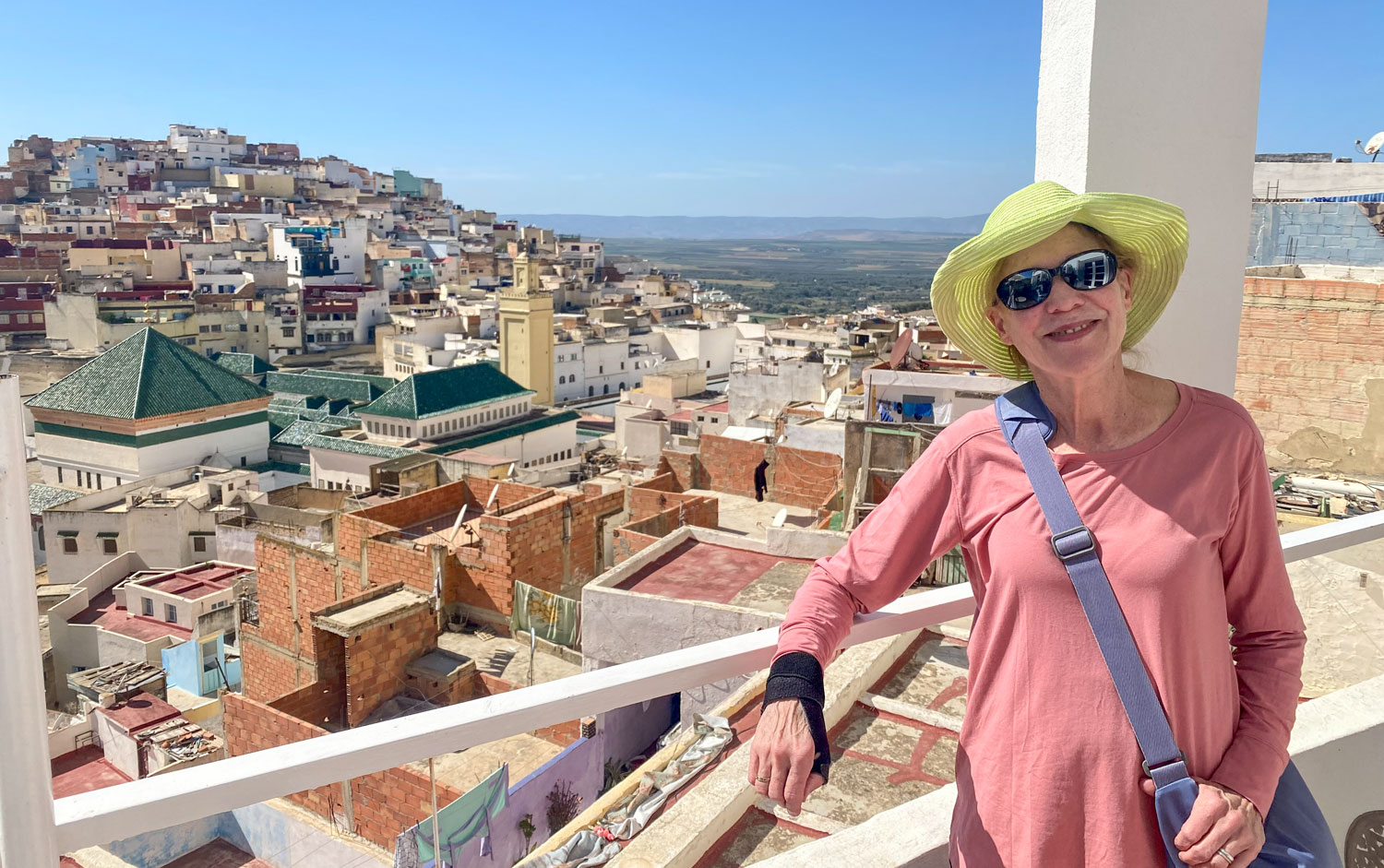
Then we drove back to Fez. But before we went to the hotel, some of us went to a pottery place to see a demonstration of how they make traditional pottery. Here's the facility.
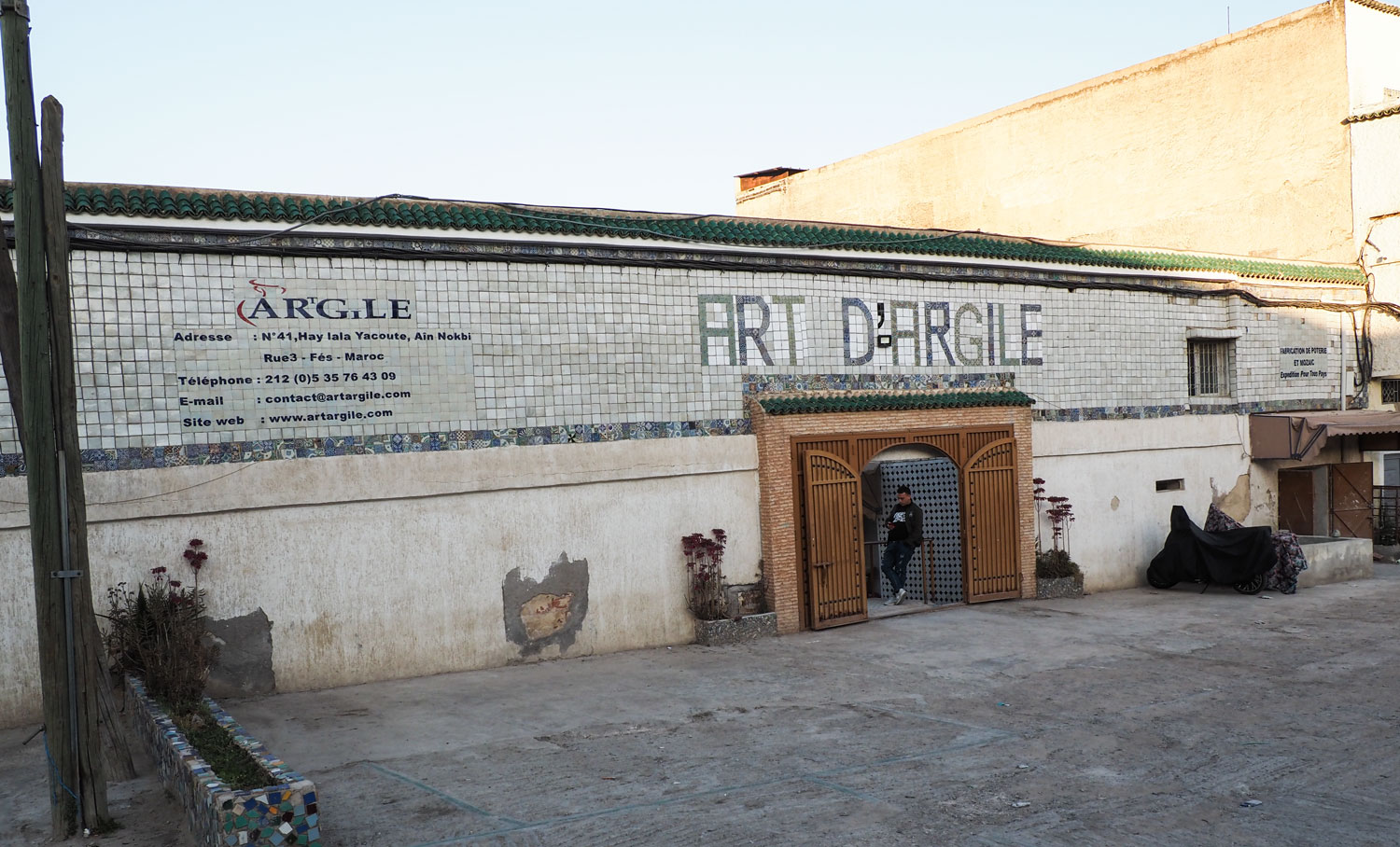
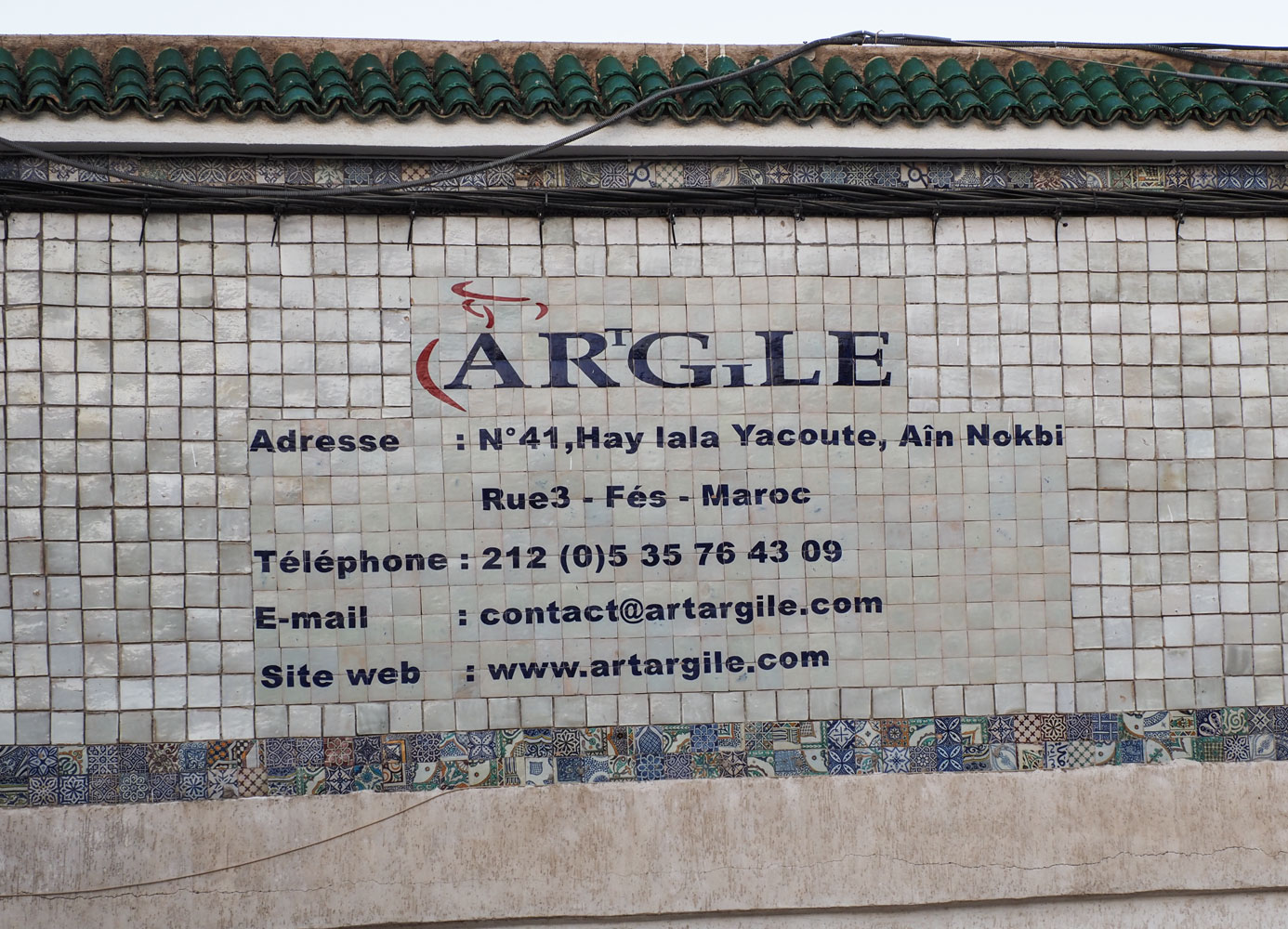
The owner began by showing us how they prepare the clay.
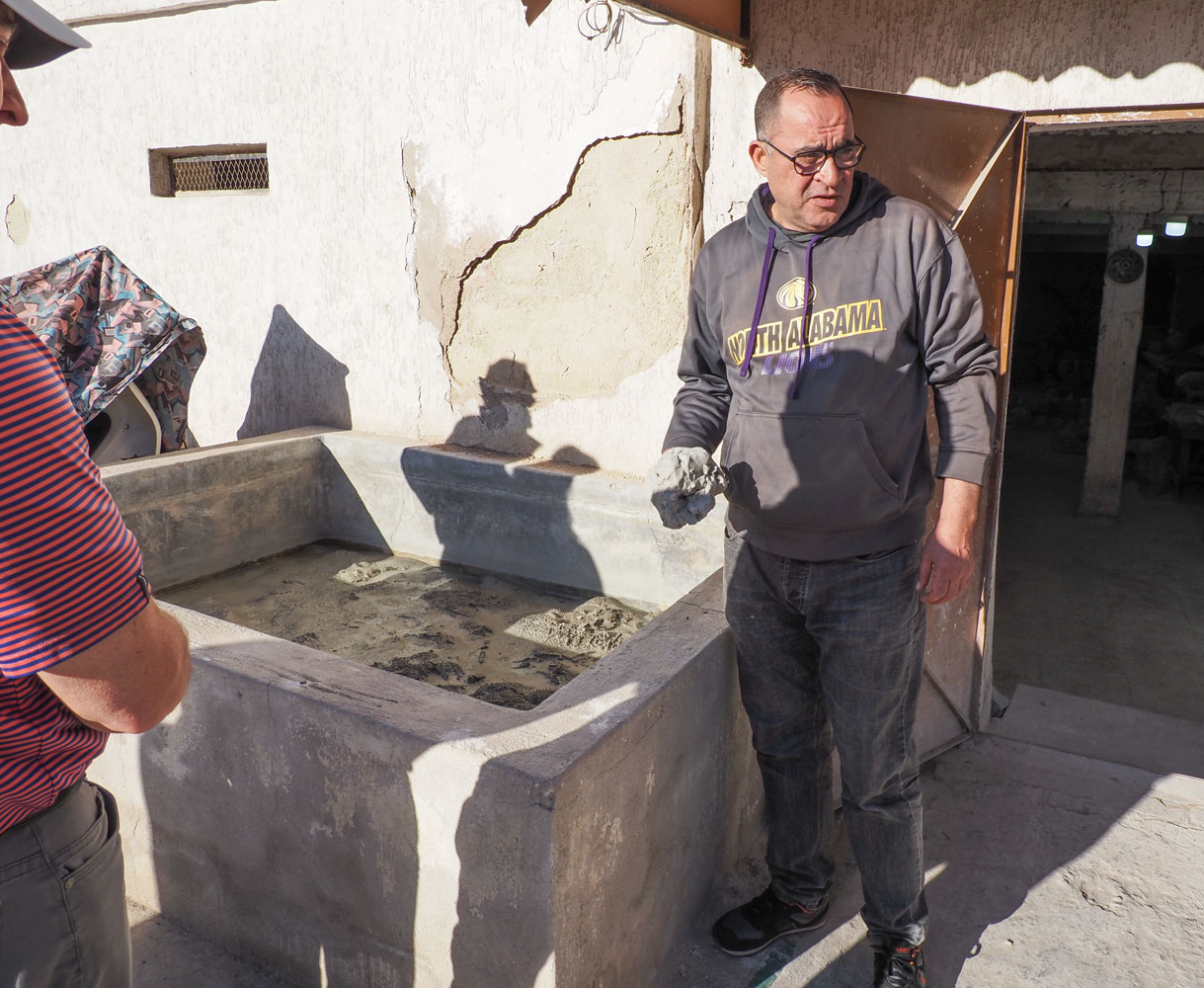
Then we went to where one of the artisans was working on a kick wheel. He demonstrated the making of a small tagine pot.
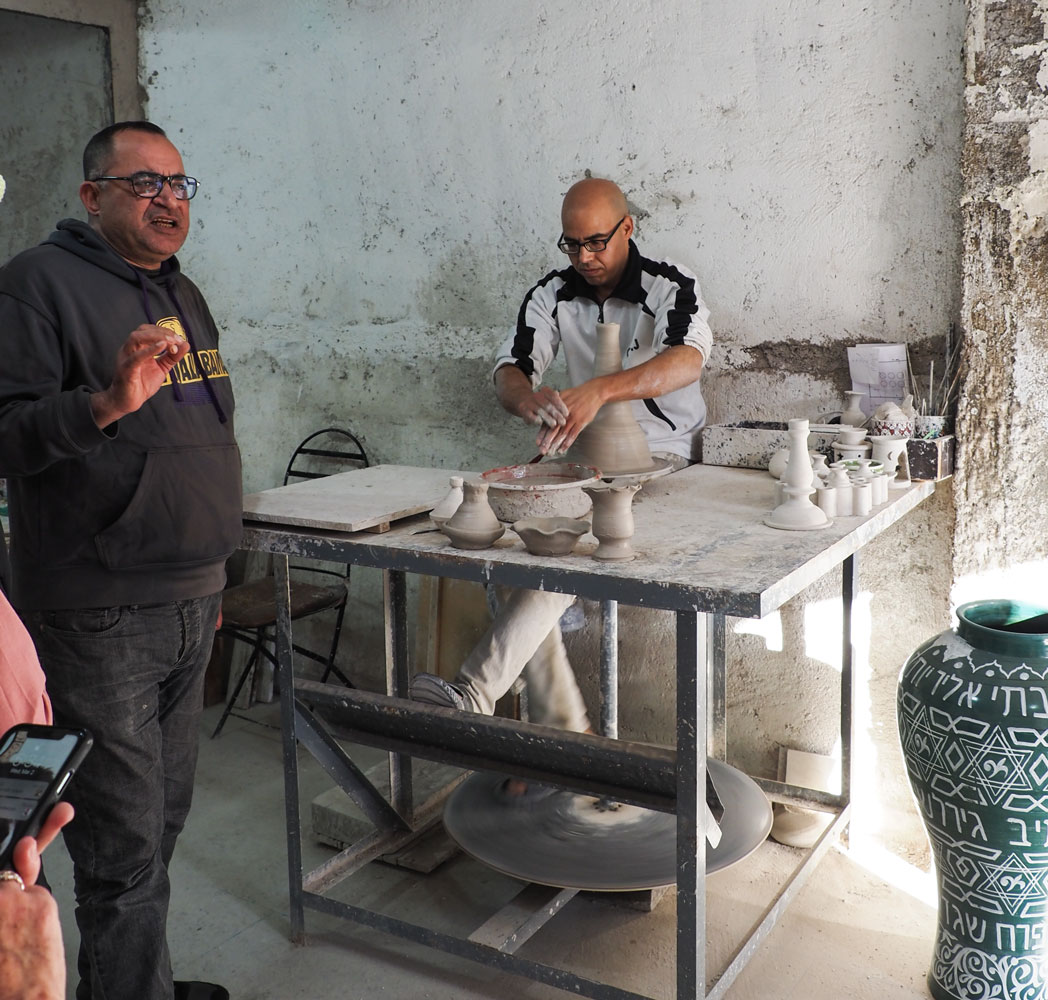
We saw the kiln they use. It's huge. I imagine it takes a lot of gas to fire it. They use the remains of olive oil processing to heat their first kiln, but since it produces so much smoke they had to move that kiln out of the city.
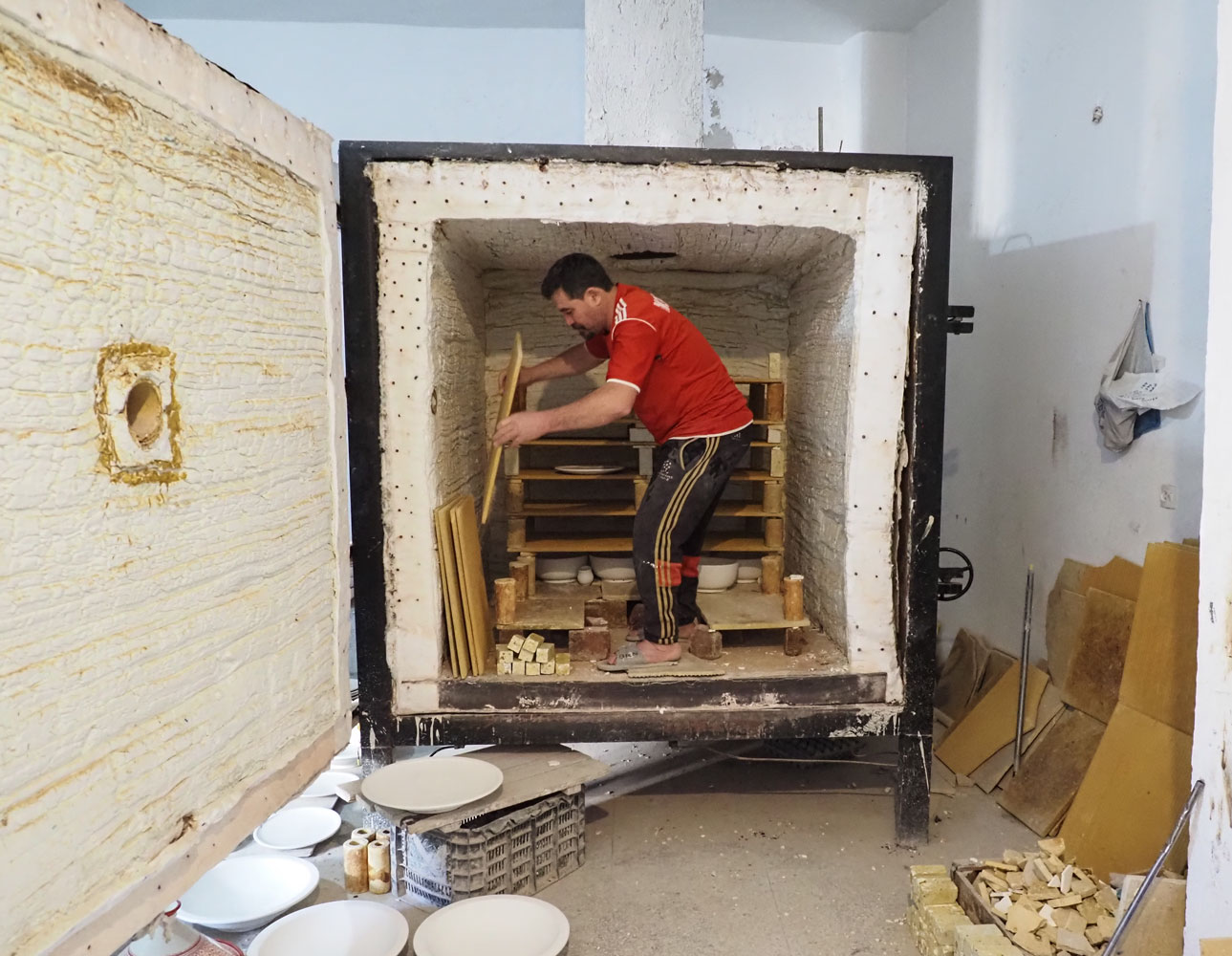
These two men are cutting colored tile pieces used in traditional mosaic designs.
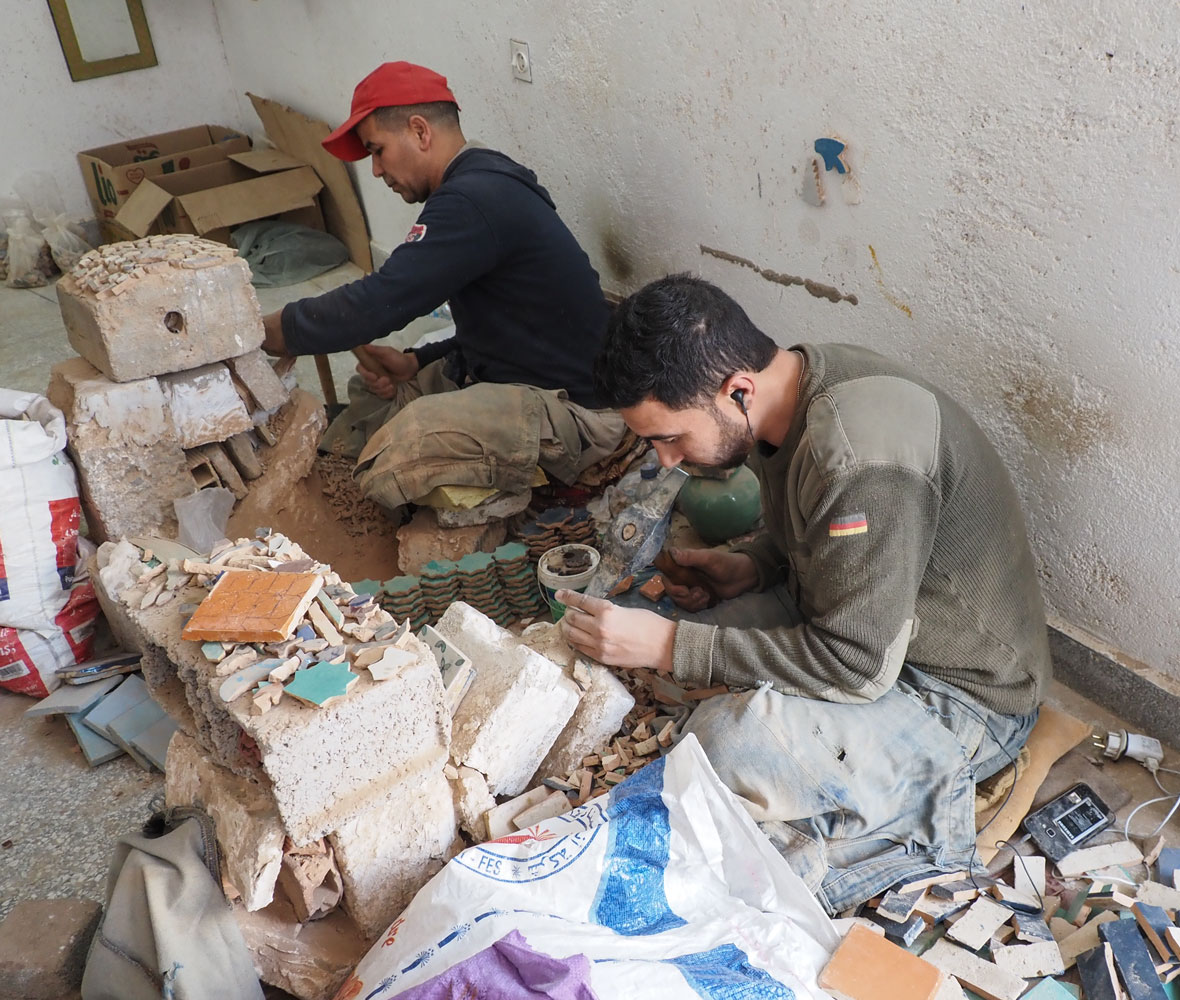
Then we saw how some of the pottery is hand-painted with color glaze.
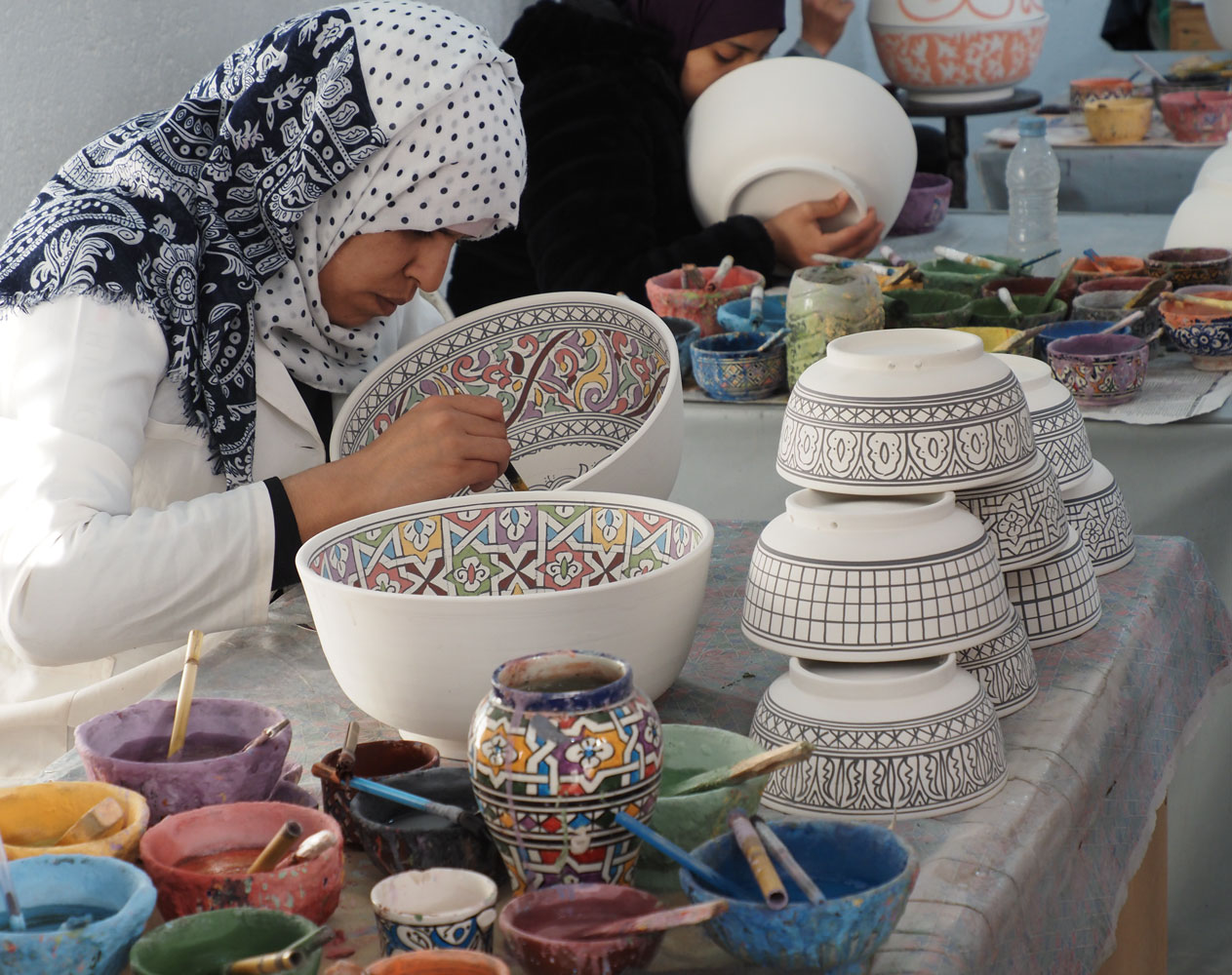
Finally, we went to the sales room, and Judy and I bought three small bowls as souvenirs of Morocco. [Unfortunately, one bowl was broken in our luggage on the way home.]
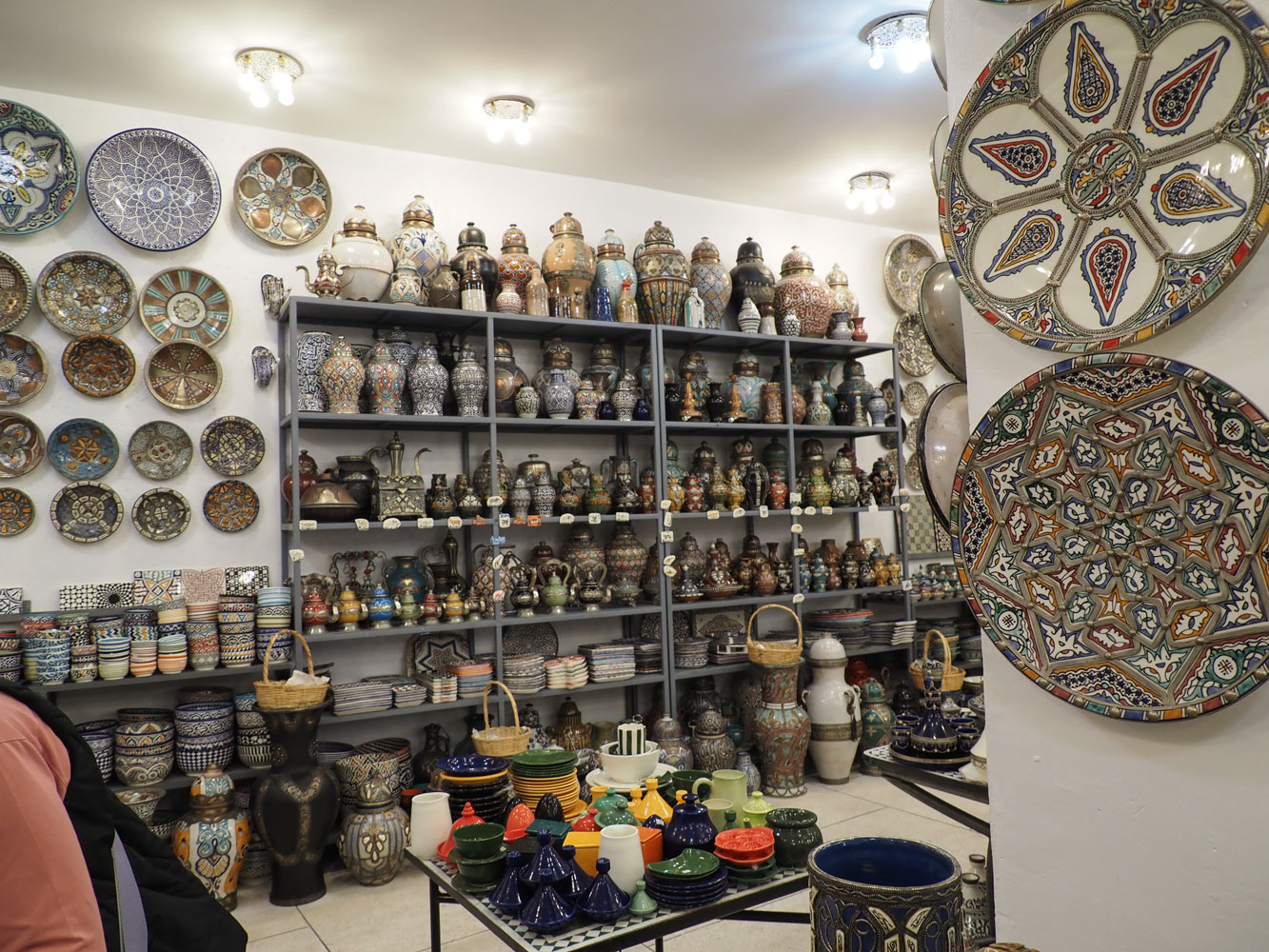
We had dinner in the hotel restaurant that night.
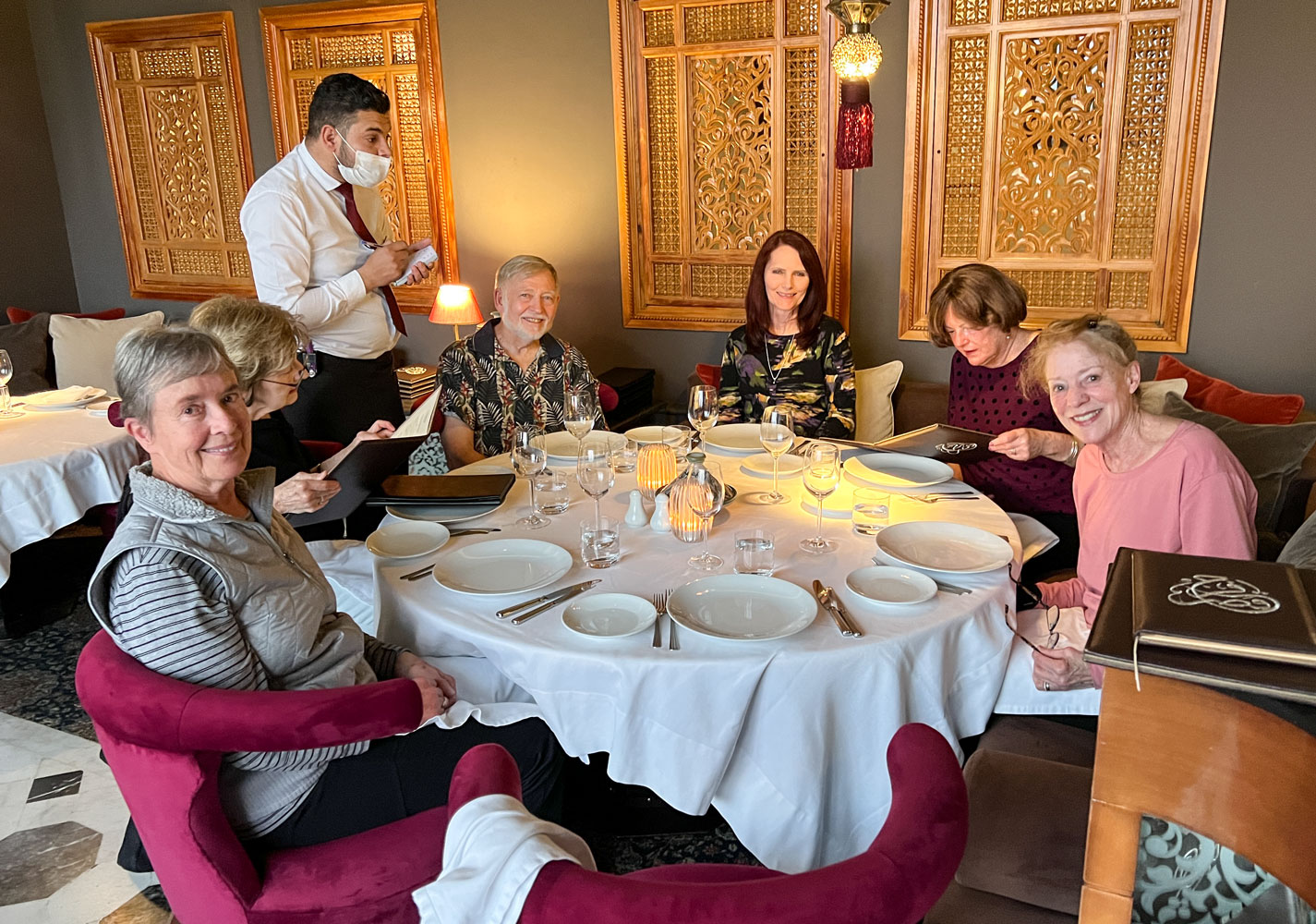
That was the end of the day. Tomorrow, we attempt to recover our luggage at the Fez airport.
++++++++++++++++++++++++++++++++++++++++++++++++
3/3/2022 (Thursday - the sixth day without our luggage). The airport baggage department didn't open until 8am, so Chris arranged for a van to take us from the hotel to the Fez airport. The cost to us for the car was 2,000 DH (about $200).
The plan was that after we recovered our baggage, the car would take us to meet up with the bus, since the group was leaving for Casablanca today. Chris has really spearheaded the effort to recover our bags.
We were up bright and early and the car met us on time. The Fez airport was only about 30 minutes from the hotel.
The Fez airport was very modern. It was a quiet time at this hour of the morning.
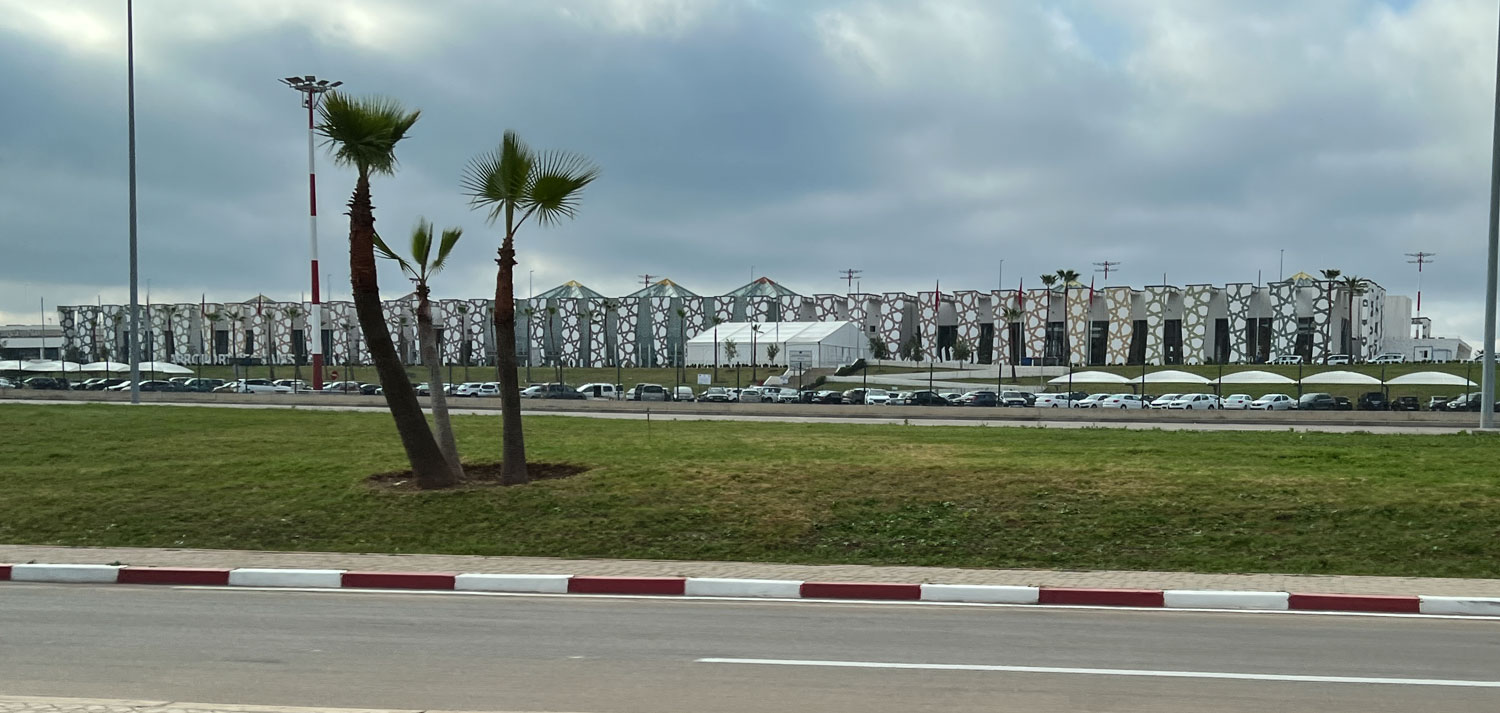
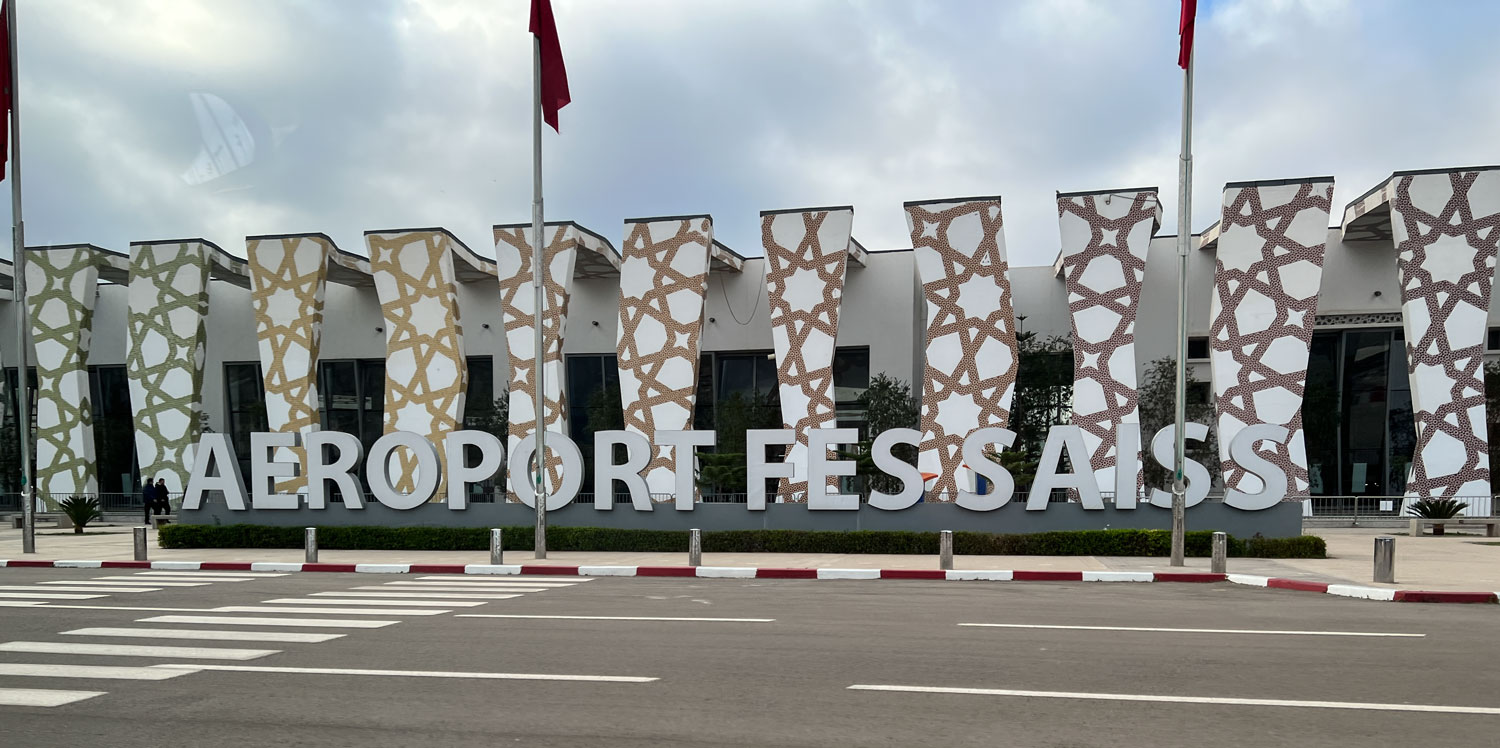
We met an airport employee who worked in the baggage department and she guided us to the proper place and helped us claim our luggage. .
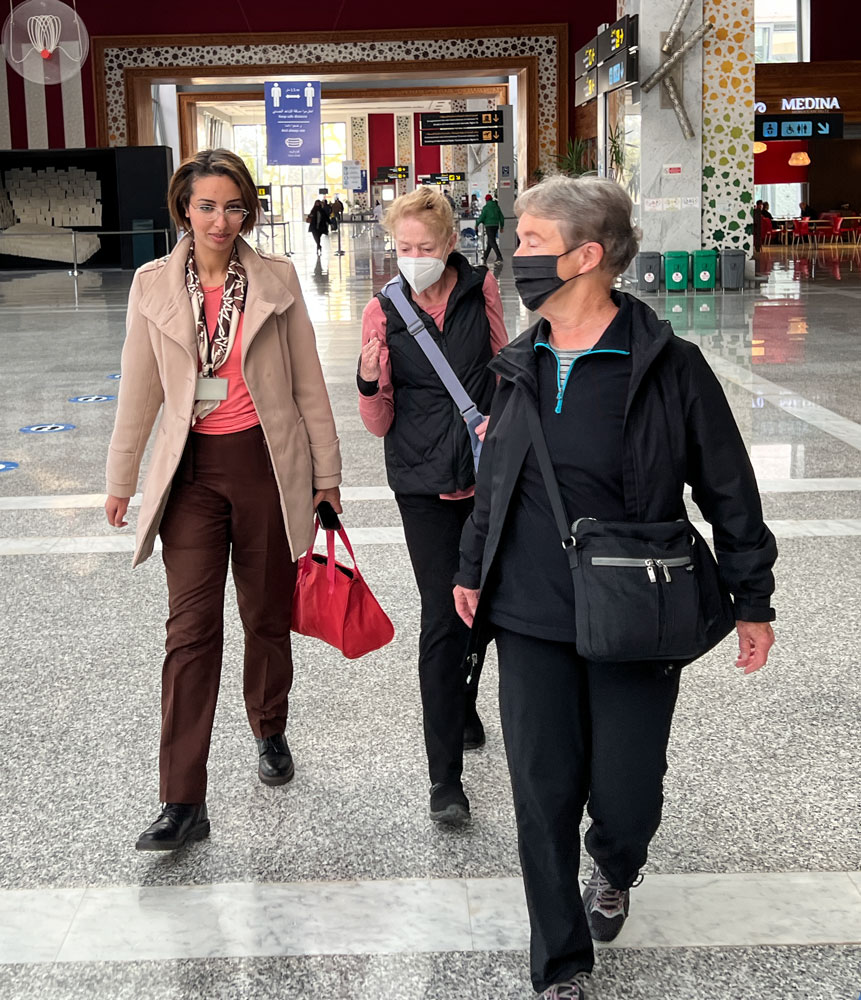
It was sitting quietly in a locked office, with a few other suitcases. We had to have our passports, and they matched the names on the luggage. We had to sign the official book to get our bags.
After we got our bags, we took a group picture with her.
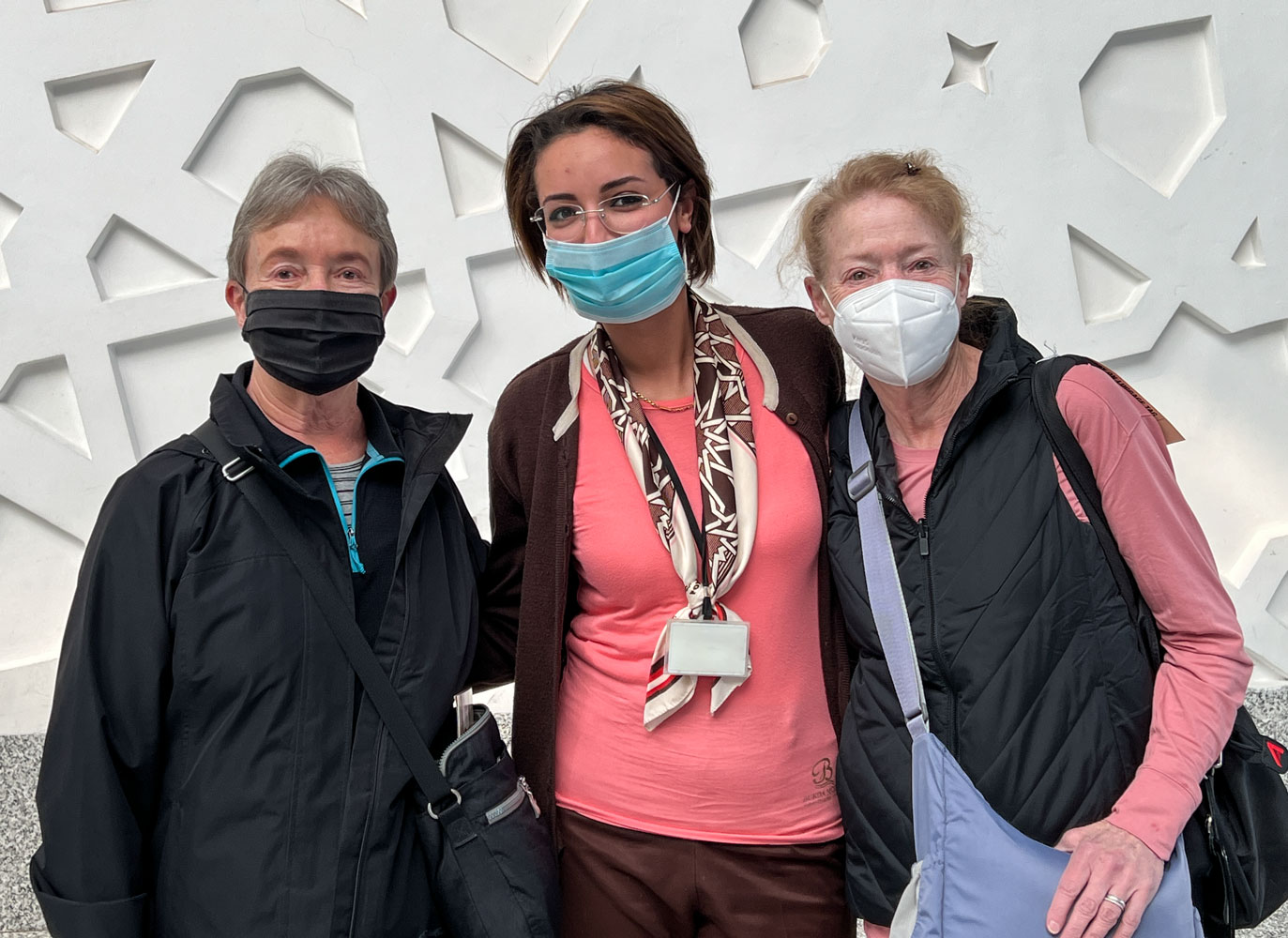
And here they are. Six days they were floating, traveling around the world without us, but they're in pretty good condition. I'm pretty sure they were all opened, but nothing is missing.
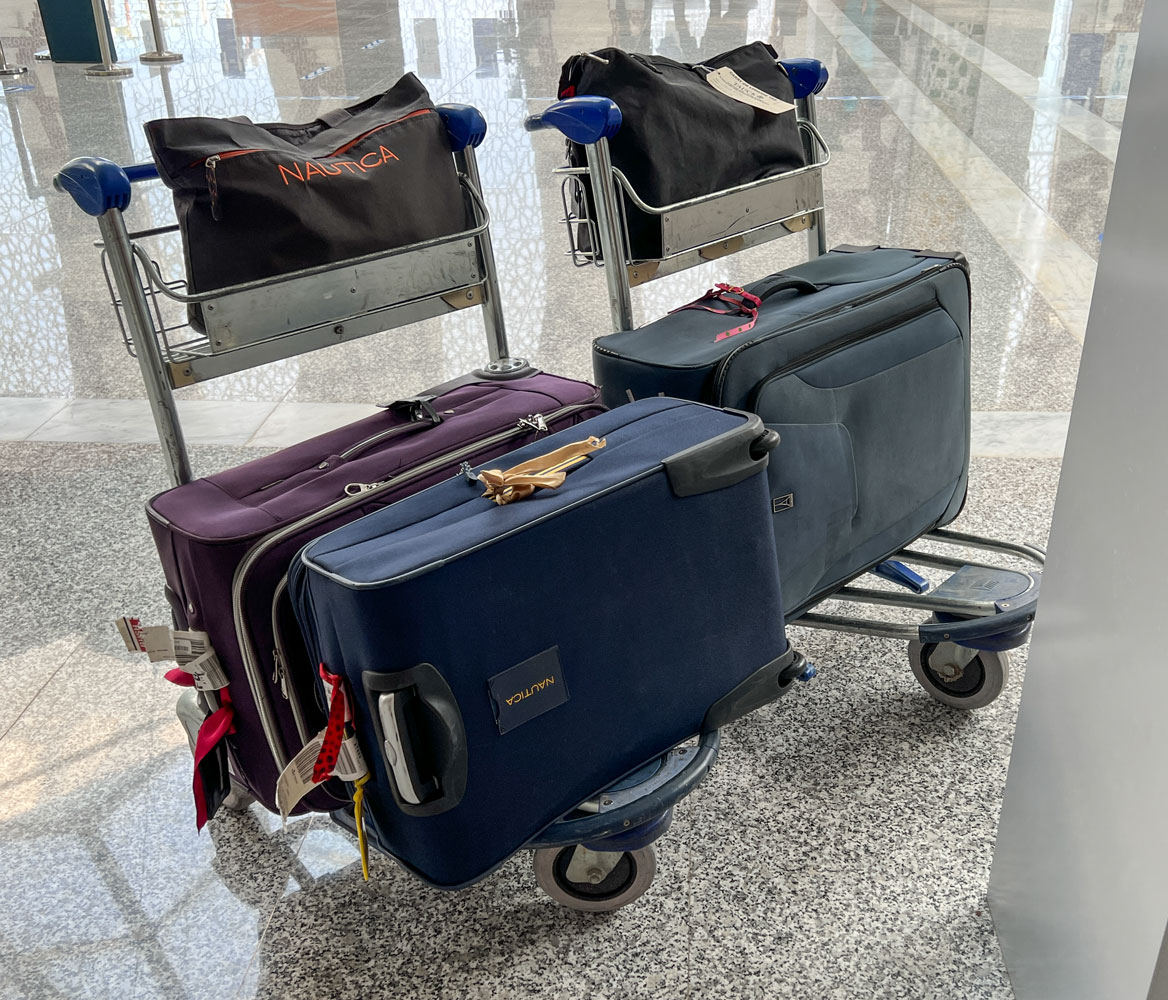
After we got out of the airport, I took a picture with our driver. I don't know if we could have recovered our luggage without Chris' efforts. His determination saved us, I'm sure.

We met the bus at a nearby truck stop and then continued on to Meknès where we met our local guide at an unusual coffee shop, Cafe Bella Citta.
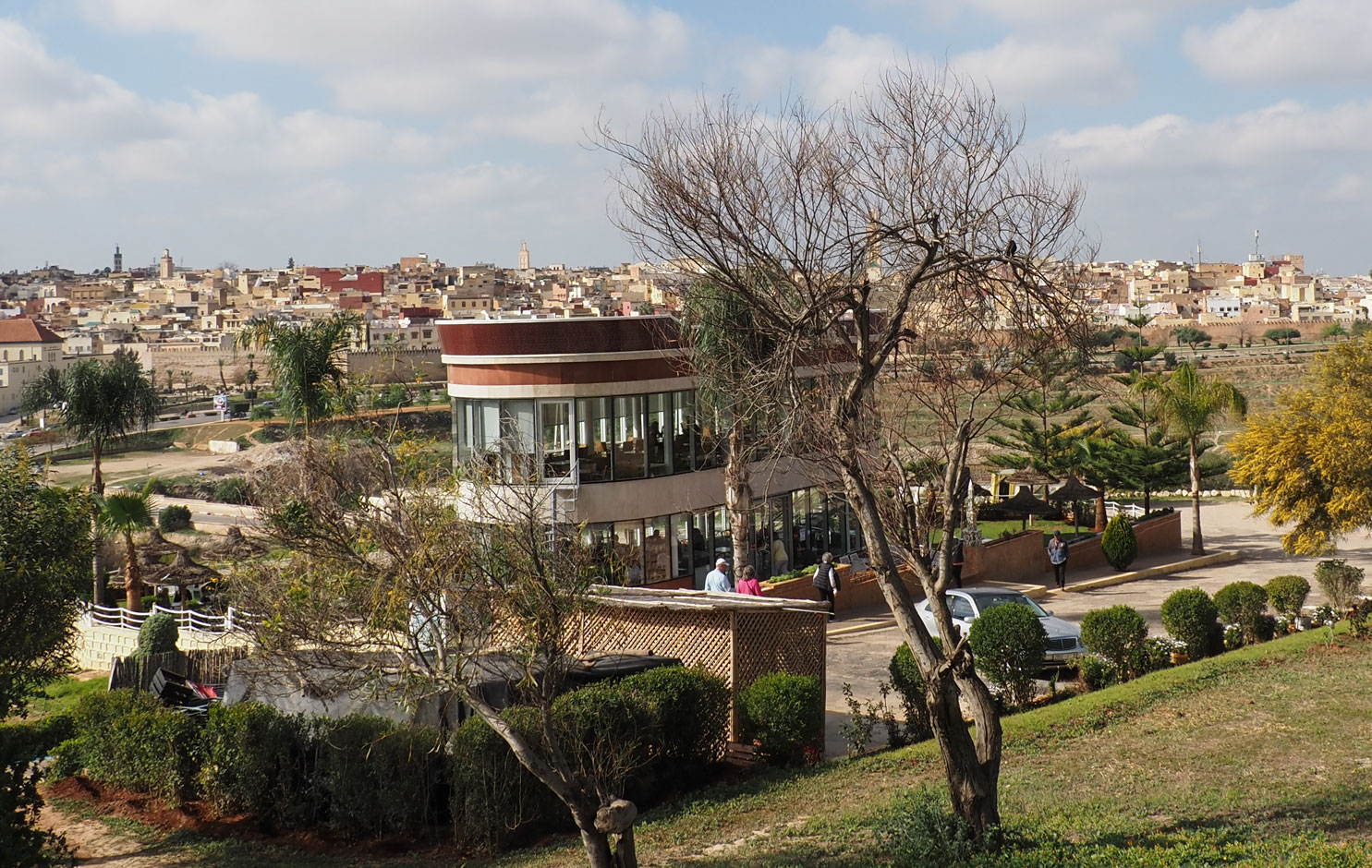
Judy took this picture of the guide and me later.
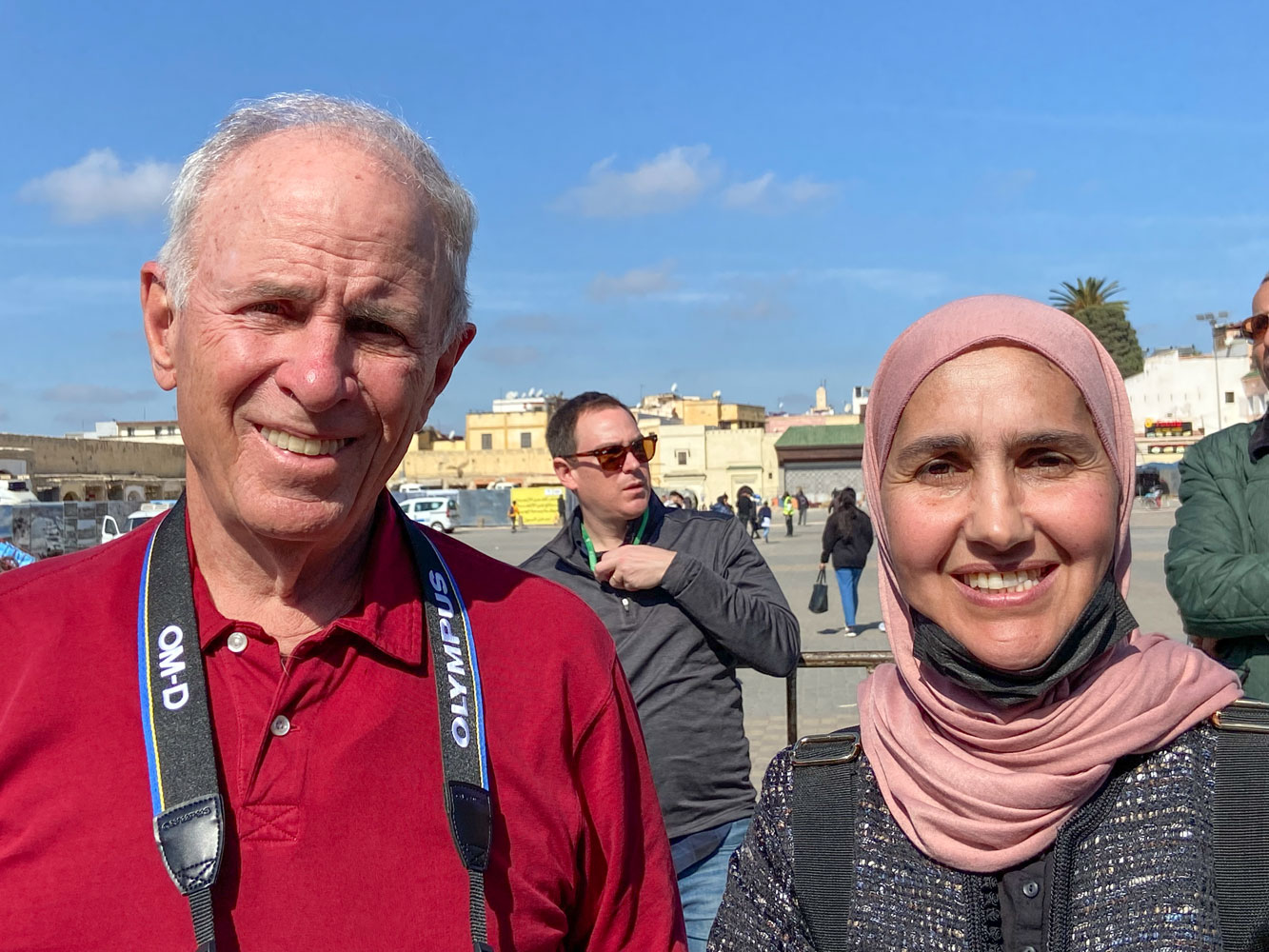
She took us to the Meknès medina. The bus stopped at a large square and we entered through one of the archways. This is the scene that met our eyes.
[Side note: The Tauck itineary said that we'd visit the stables (another link) of Sultan Moulay Ismail in Meknès but I didn't hear anything relating to that - but with my hearing loss, I miss a lot. The itineary also says that we'd visit a historic madrasa in the city. It doesn't say which one, but it may have been the Bou Inania Madrasa.
It may be that the souk we entered used to be the Kasbah of the Moulay Ismail. We moved fairly quickly through the souk and medina until we got to lunch. Maybe we were running late.]
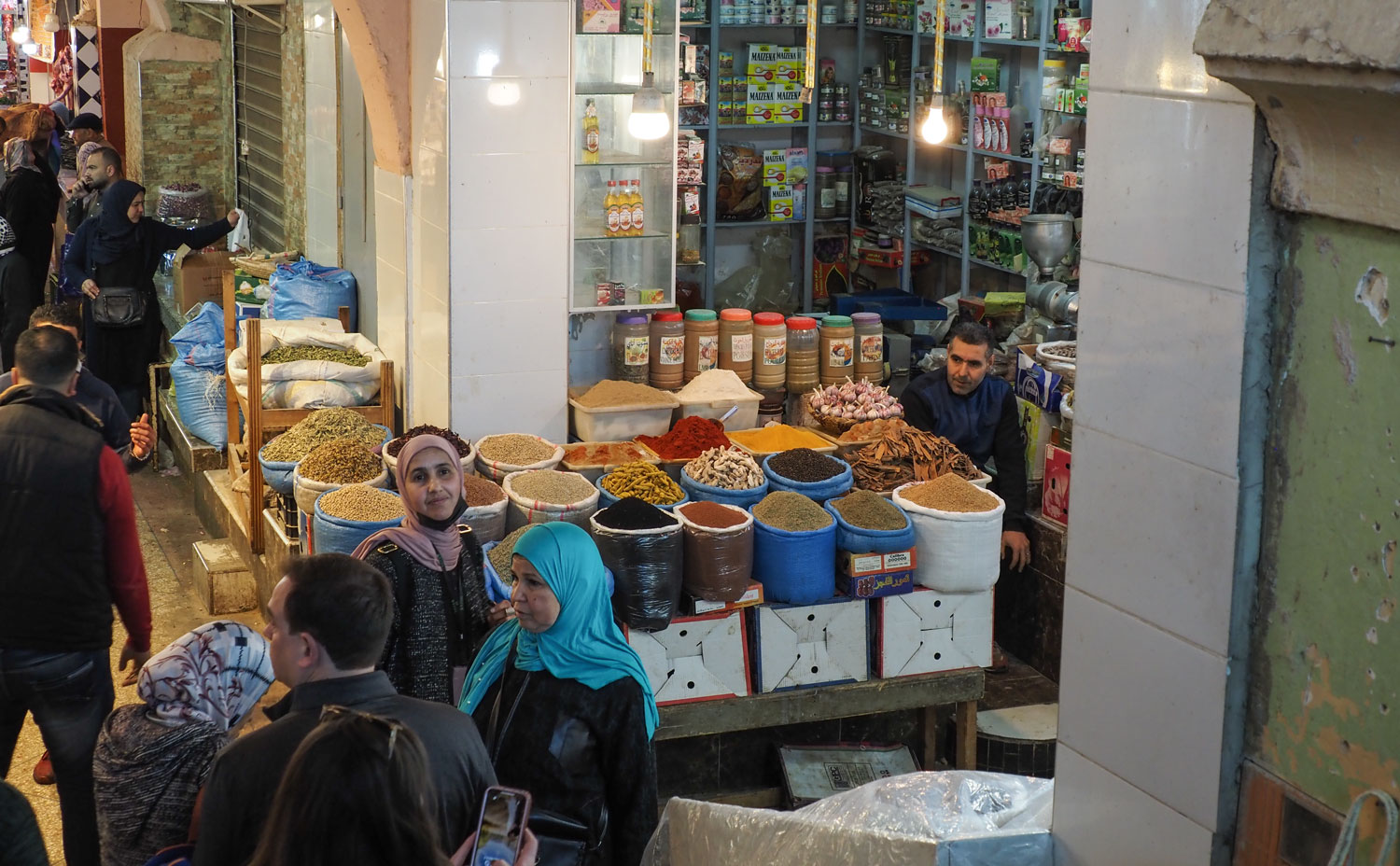
The displays were very well laid out and orderly. A lot of effort went into these displays.
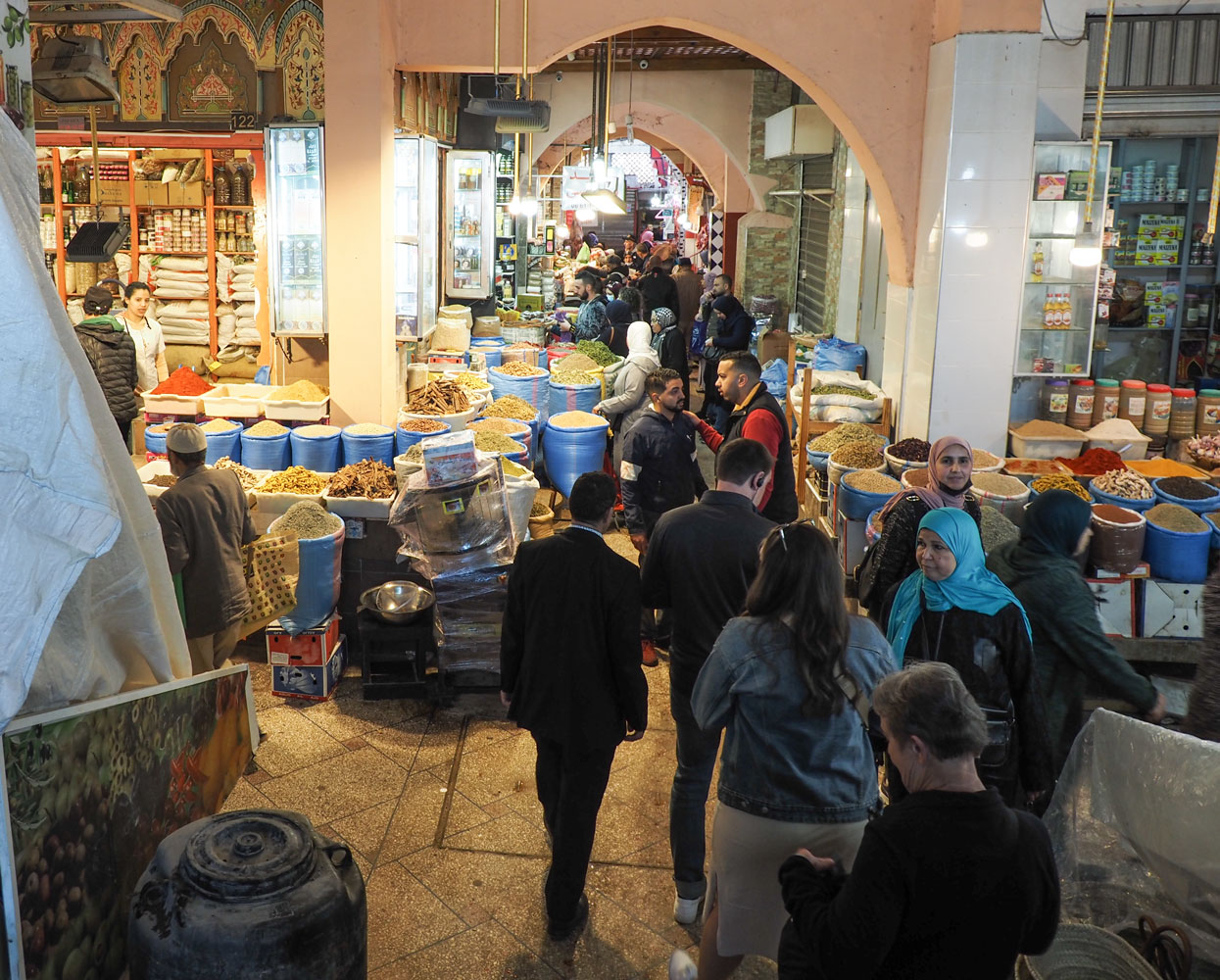
Look at these olives. Perfectly stacked.
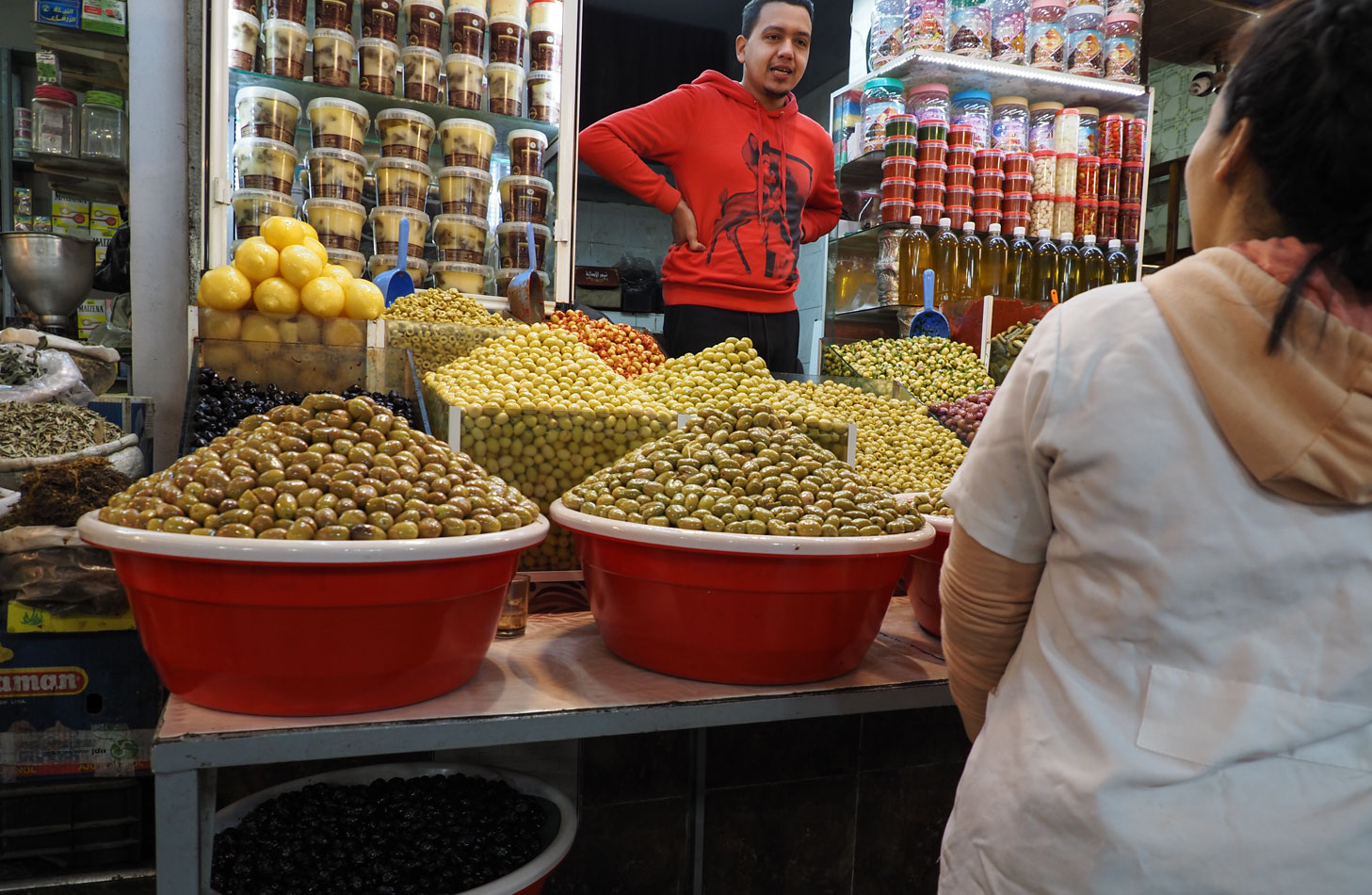
And these spices. How they made that patchwork, I have no idea.
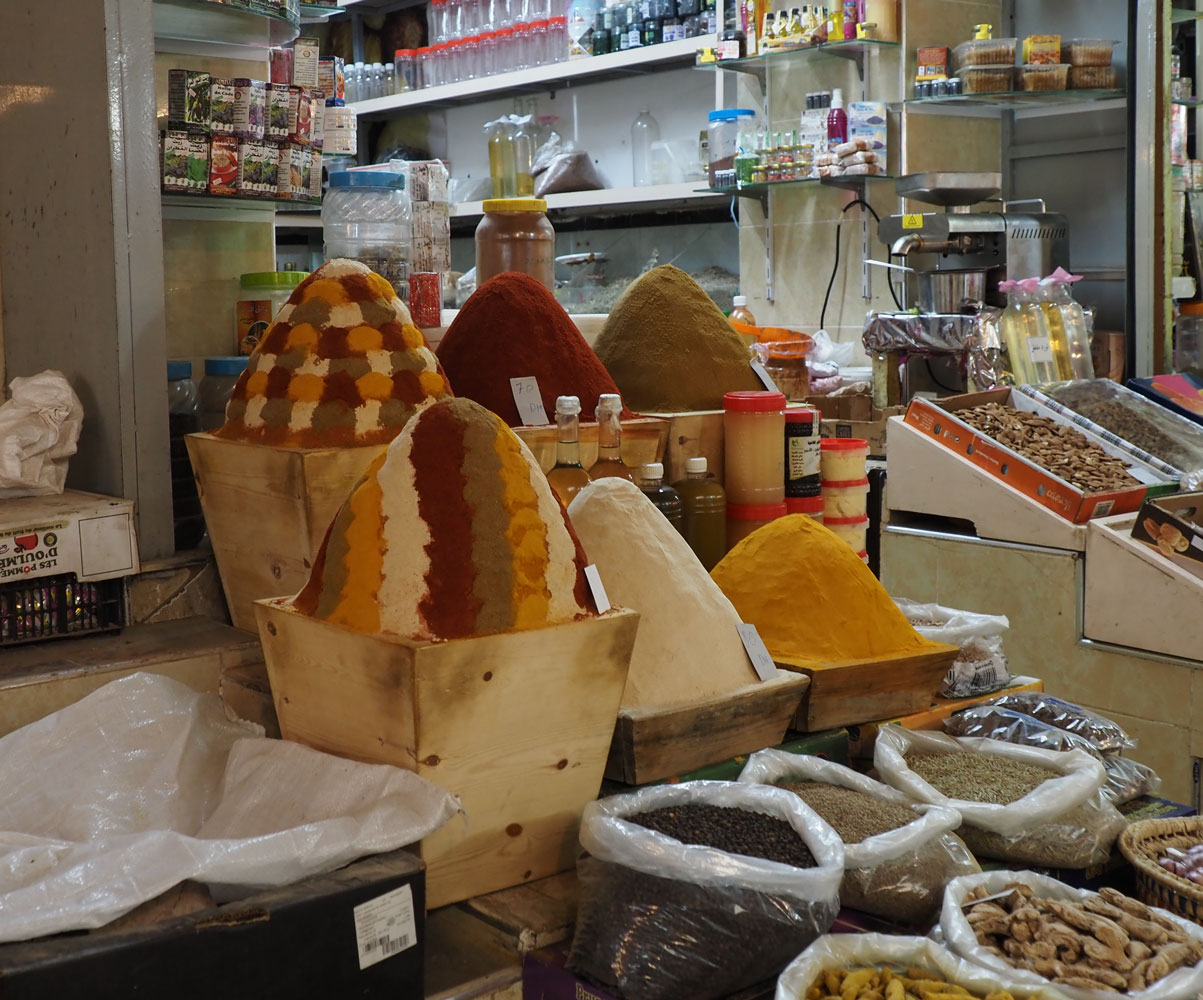
Look how nicely these olives and lemons are displayed. It would put Whole Foods to shame.
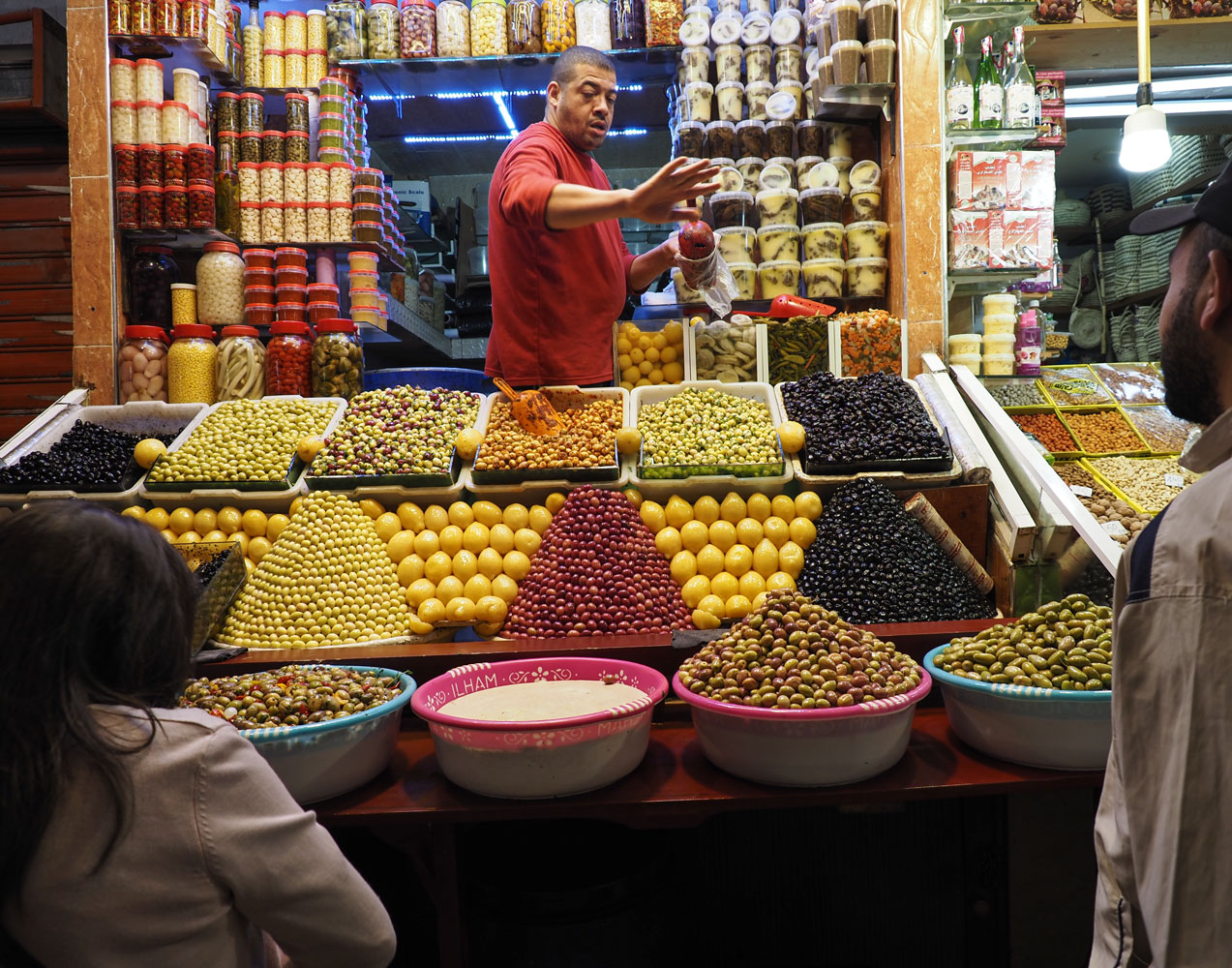
We walked through more of the medina until we came to Ryad Bahia, which turned out to be the home of our guide. The home has been in her family for four generations.
Her house has an interior courtyard, open to the sky.

On the left side of the above picture, behind the arches, there were two tables she had set up for us.
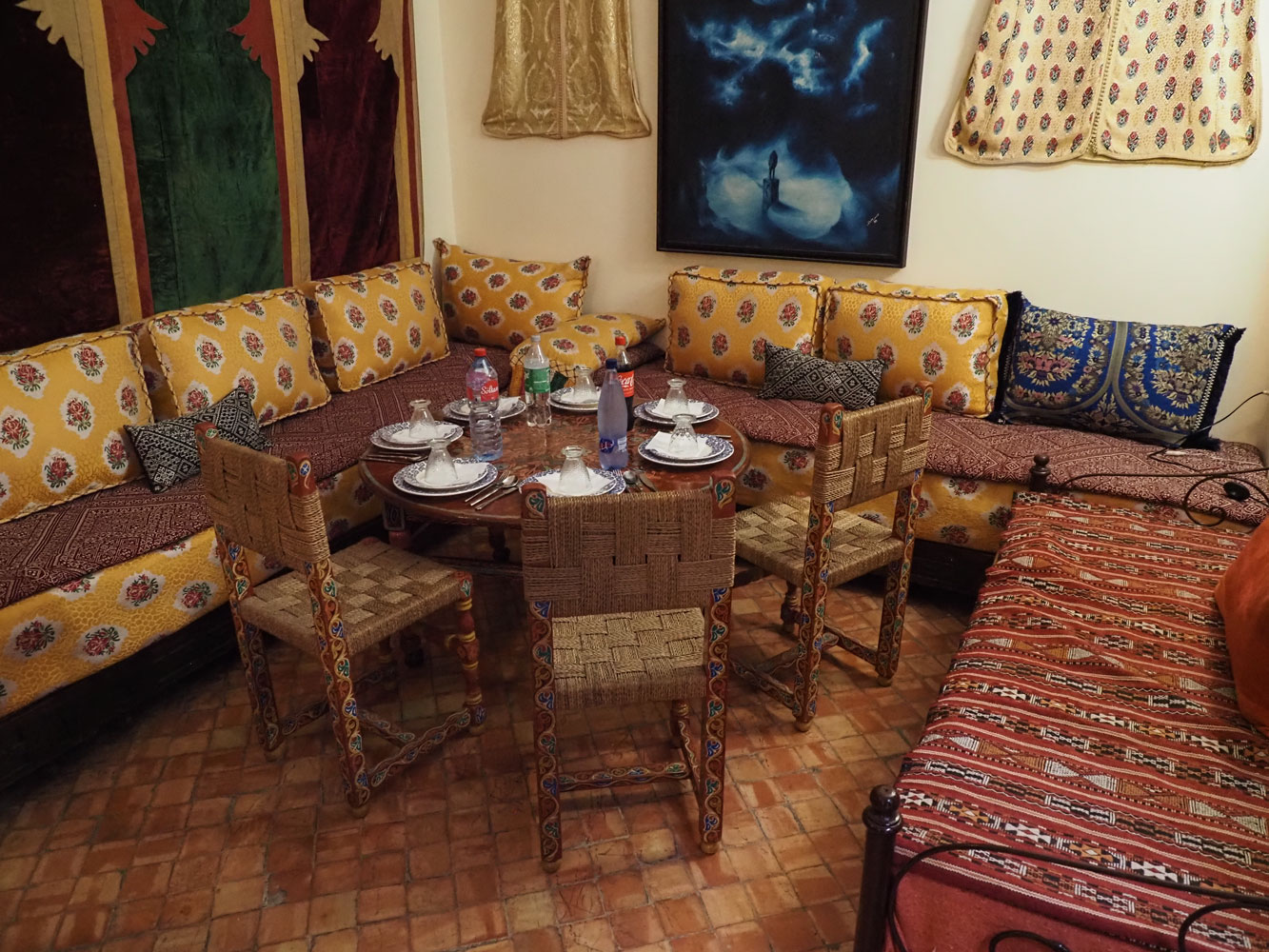
Lunch consisted of a number of Moroccan dishes, served family style. There was plenty to eat.
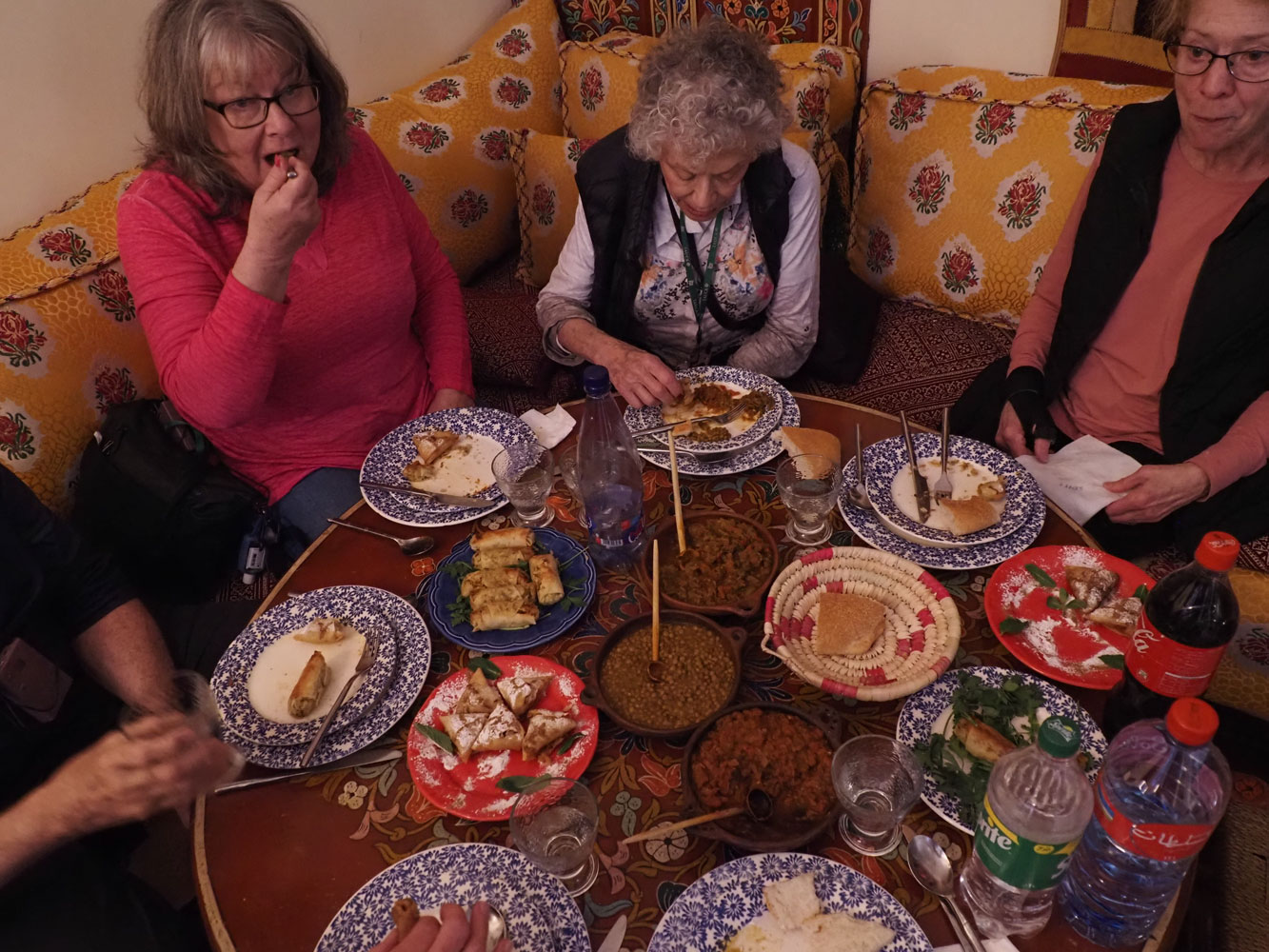
After lunch we returned to the bus and continued to Casablanca. It was about a three hour drive, and during the drive Chris played the movie "Casablanca" on the TV in the bus. I was thankful to Chris that he set the movie to subtitles so I could better understand the dialog. He began the presentation by giving each of us a little red-and-white striped popcorn holder, filled with popcorn. Another surprise!
While on the road to Casablanca we crossed the Mohammed VI cable-stayed bridge. I think it's the only cable-stayed bridge in Morocco. I tried to take a picture out the front window of the bus but I didn't get a good view.
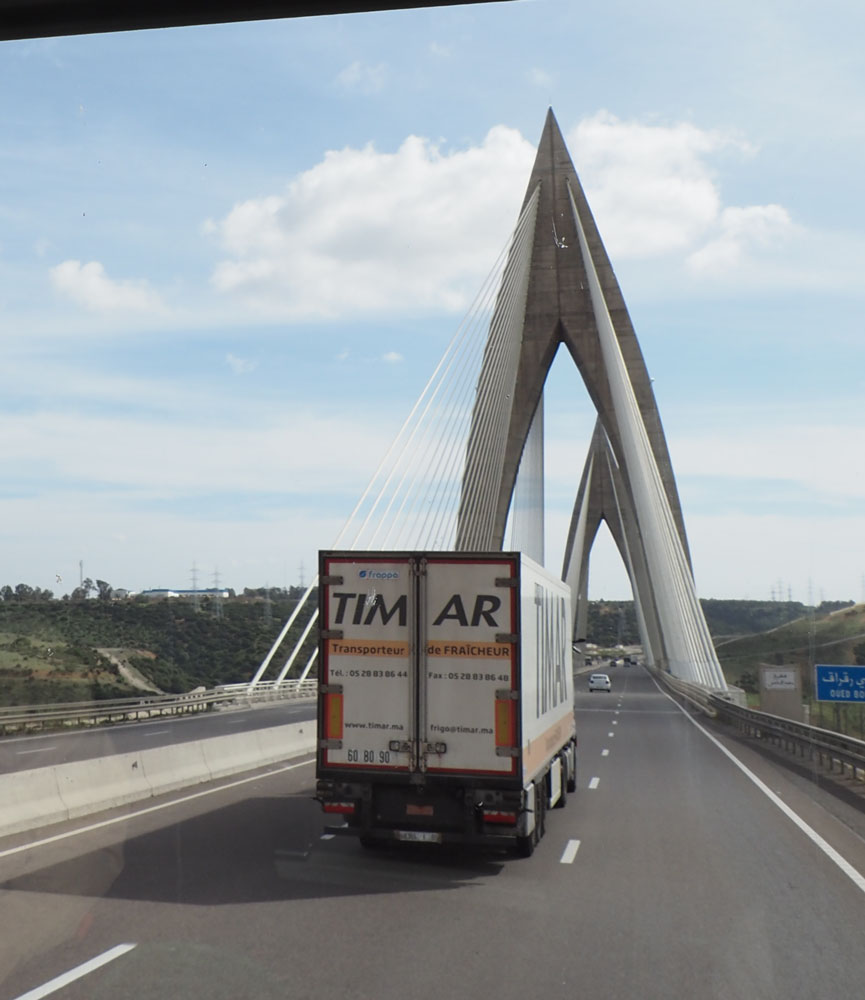
Here's a view of the bridge taken from the web.
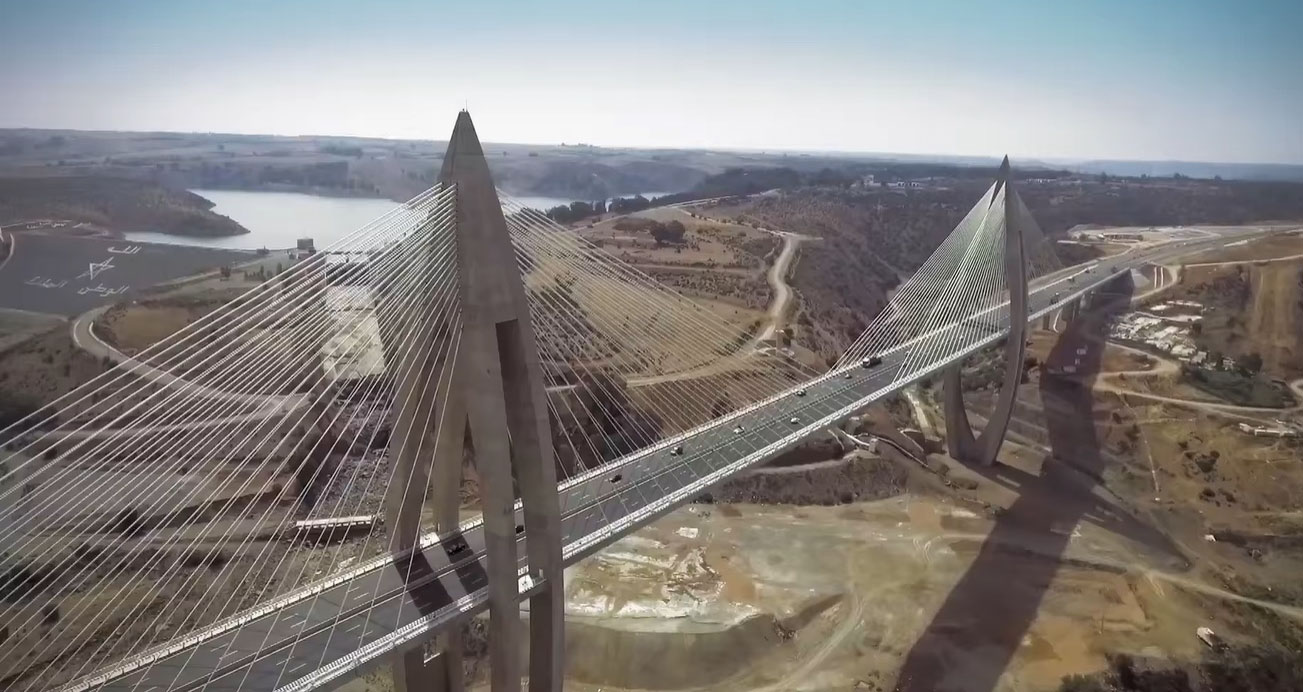
Eventually, we arrived at the Four Seasons Hotel in Casablanca. It's a beautiful hotel, built right on the ocean. I didn't get a good picture of the entrance so I took this picture from the web.
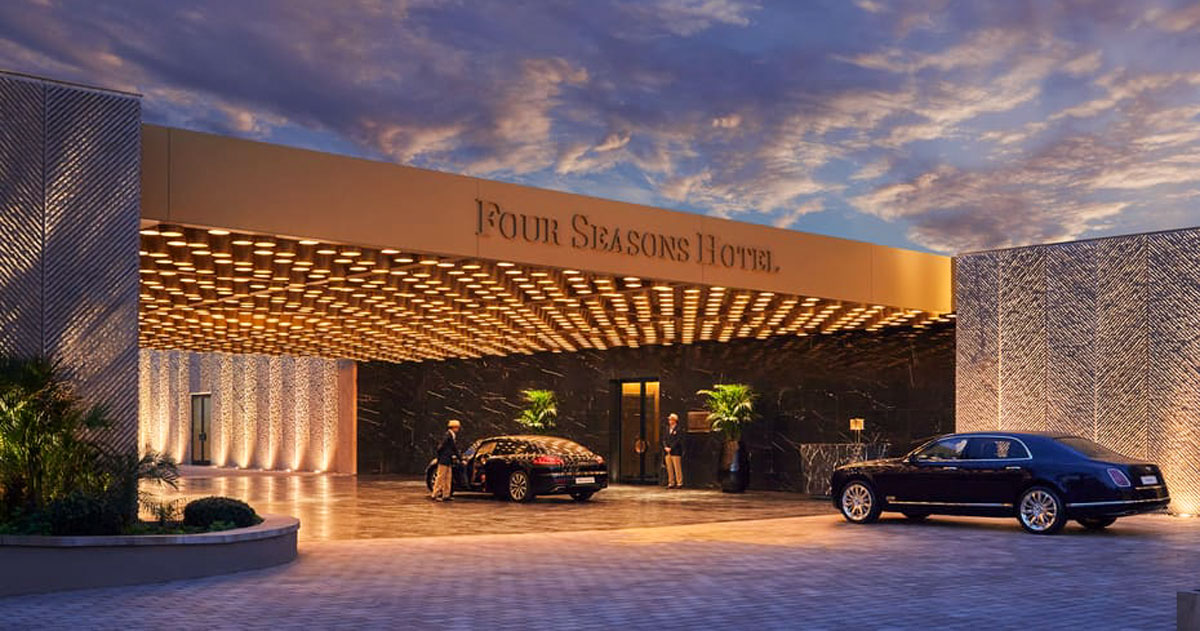
The view of the ocean from our hotel room.
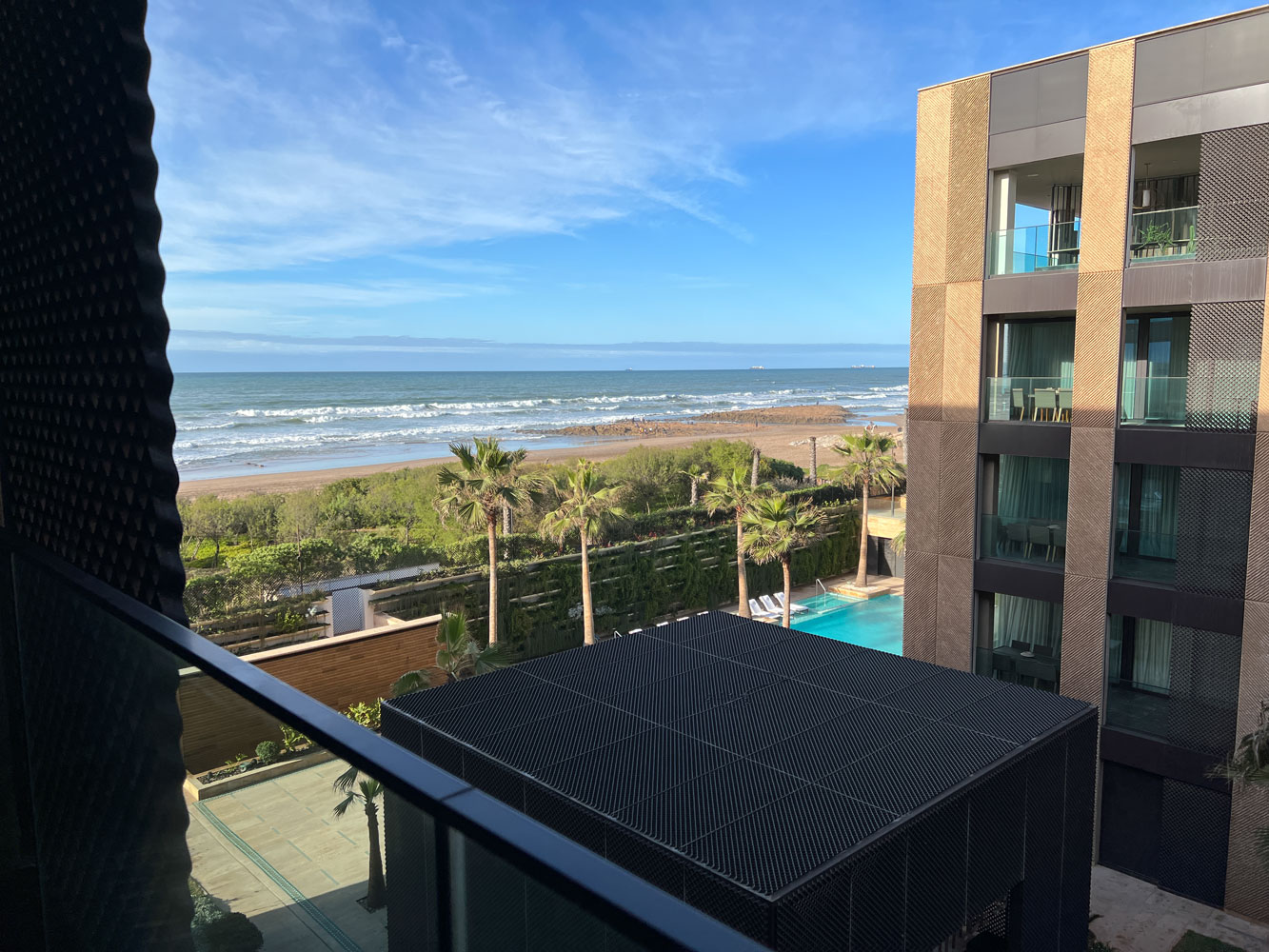
We had dinner in the hotel restaurant that evening. This particular Four Seasons does not have a liquor license because it is close to the Great Mosque of Casablanca (the Hassan II Mosque) and Islam prohibits consumption of alcohol. The staff does make some very good non-alcoholic drinks and we sampled a couple of them at dinner. This was the first time we were able to enjoy a change of clothes! We felt great.
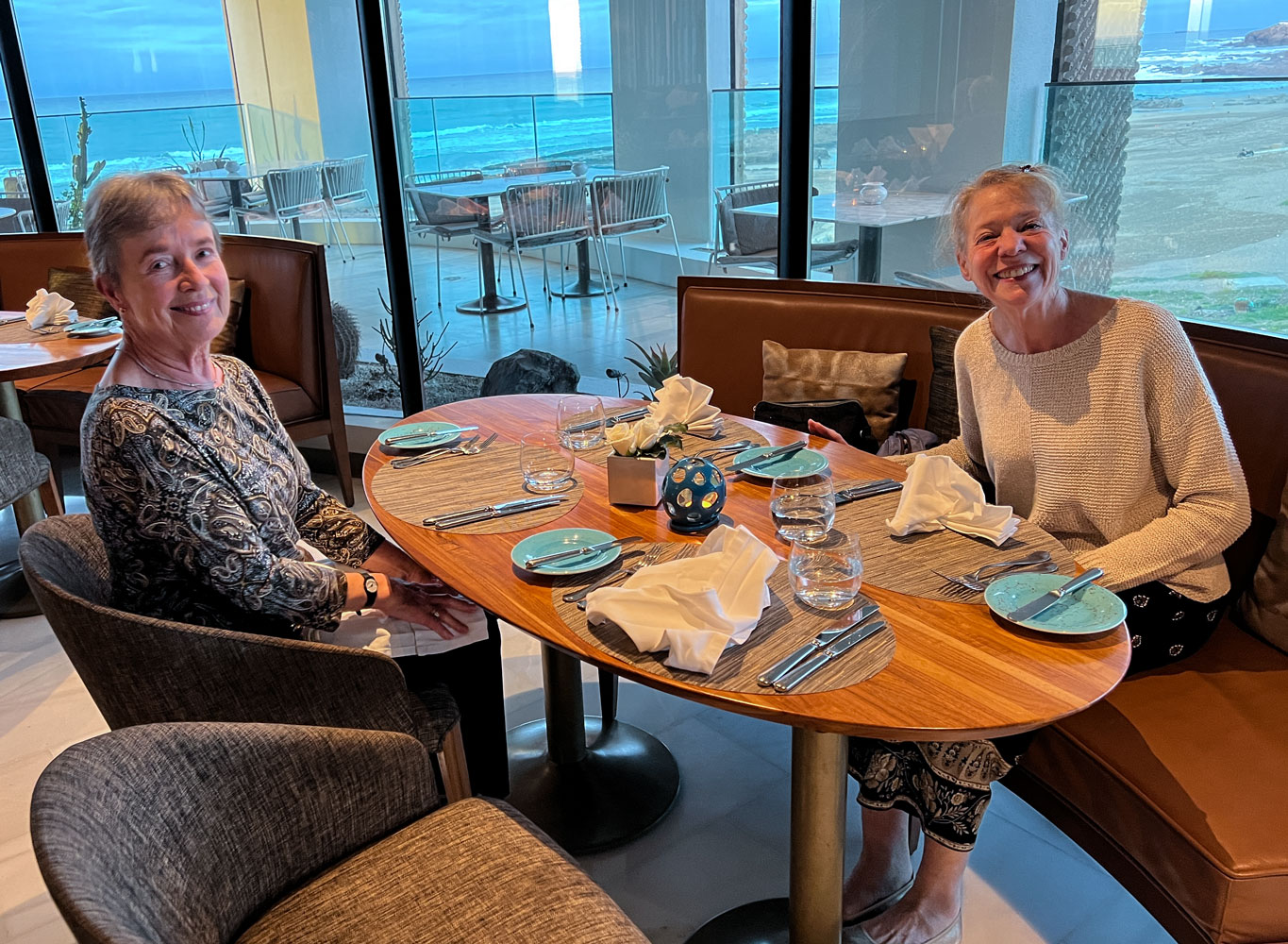
That was the end of our day. It was nice to have some clean clothes to put on for dinner.
++++++++++++++++++++++++++++++++++++++
3/4/2022 (Friday) Today, we visit the Great Mosque in Casablanca - the Hassan II mosque. We were told that it is the third largest mosque in the world, but when I researched it on the Internet I found a list of larger mosque. I suppose it depends on your criteria. Perhaps this mosque has the third largest covered area. The mosques in the list are ordered by the total amount of space that can be used for prayer, including outdoor space.
As we approached the mosque on the bus, I took this picture through the bus window.
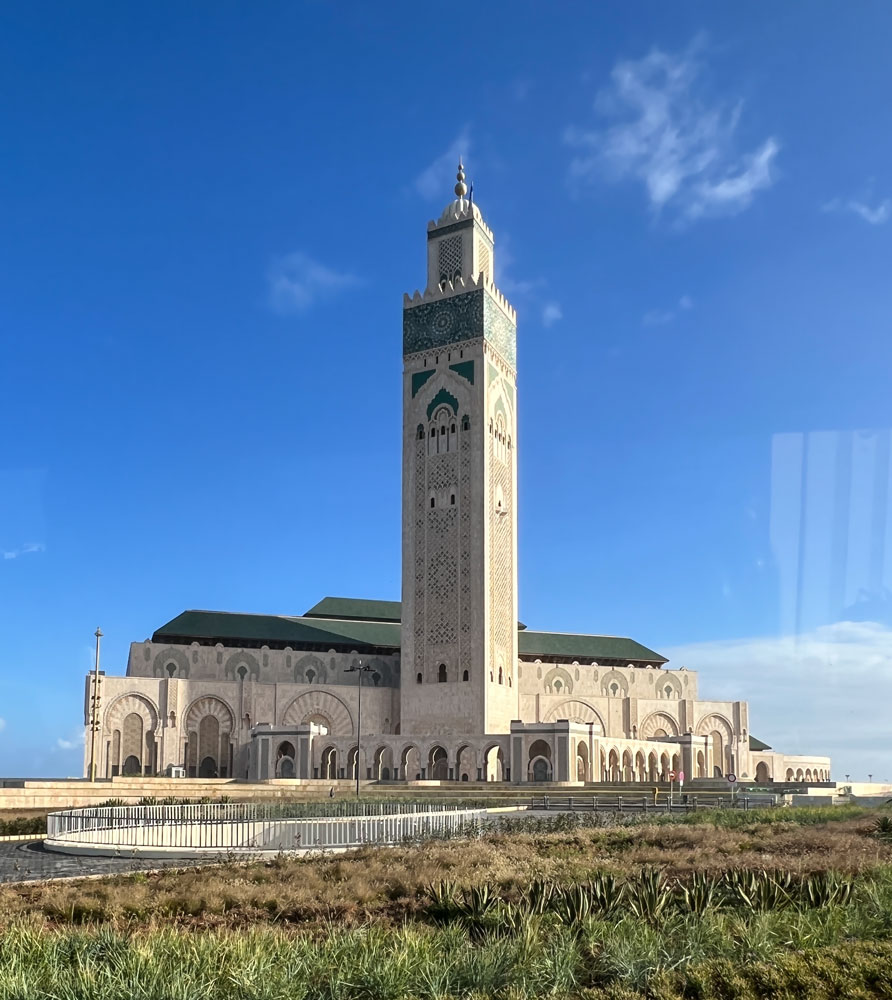
The mosque was financed by public subscription, but I was told that there was a lot of pressure put on people, especially wealthy people, to donate funds to its construction.
A view of the mosque from the courtyard. The minaret is 210 meters high. It is the second highest minaret in the world, after one in Algeria. I expect there's an elevator in this minaret:-) But the muezzin doesn't have to climb the minaret any more to call the faithful to prayer (Salah). There are loudspeakers at the top of the minaret and the muezzin uses a microphone at the base of the minaret. Some mosques use a recording but we were told that this mosque always uses a person to make the call. I expect being selected to do Salah would be an honor and members of the congregation might be granted the privilege of doing it a single time.
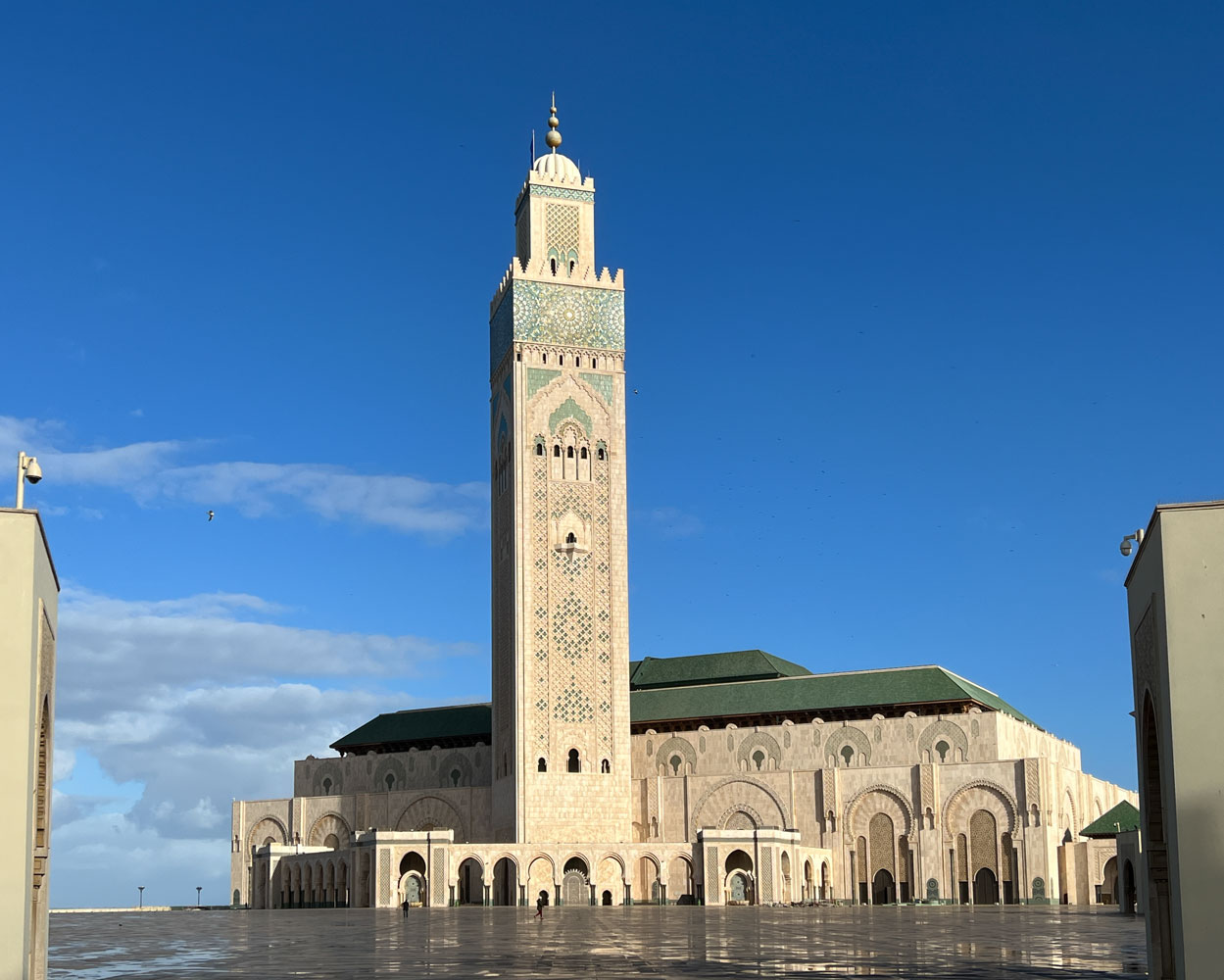
Here's one of the entrances to the mosque. The building is highly decorated with geometric patterns. Islam generally prohibits (haram) the depiction of sentient beings. See here. In everyday life, this is generally taken to mean that you can't take a picture of a person's face. Pictures of a person walking away from you would be okay. Many people in Morocco have smartphones and I would not be surprised if they take a lot of pictures of themselves and of their friends, especially the younger people.
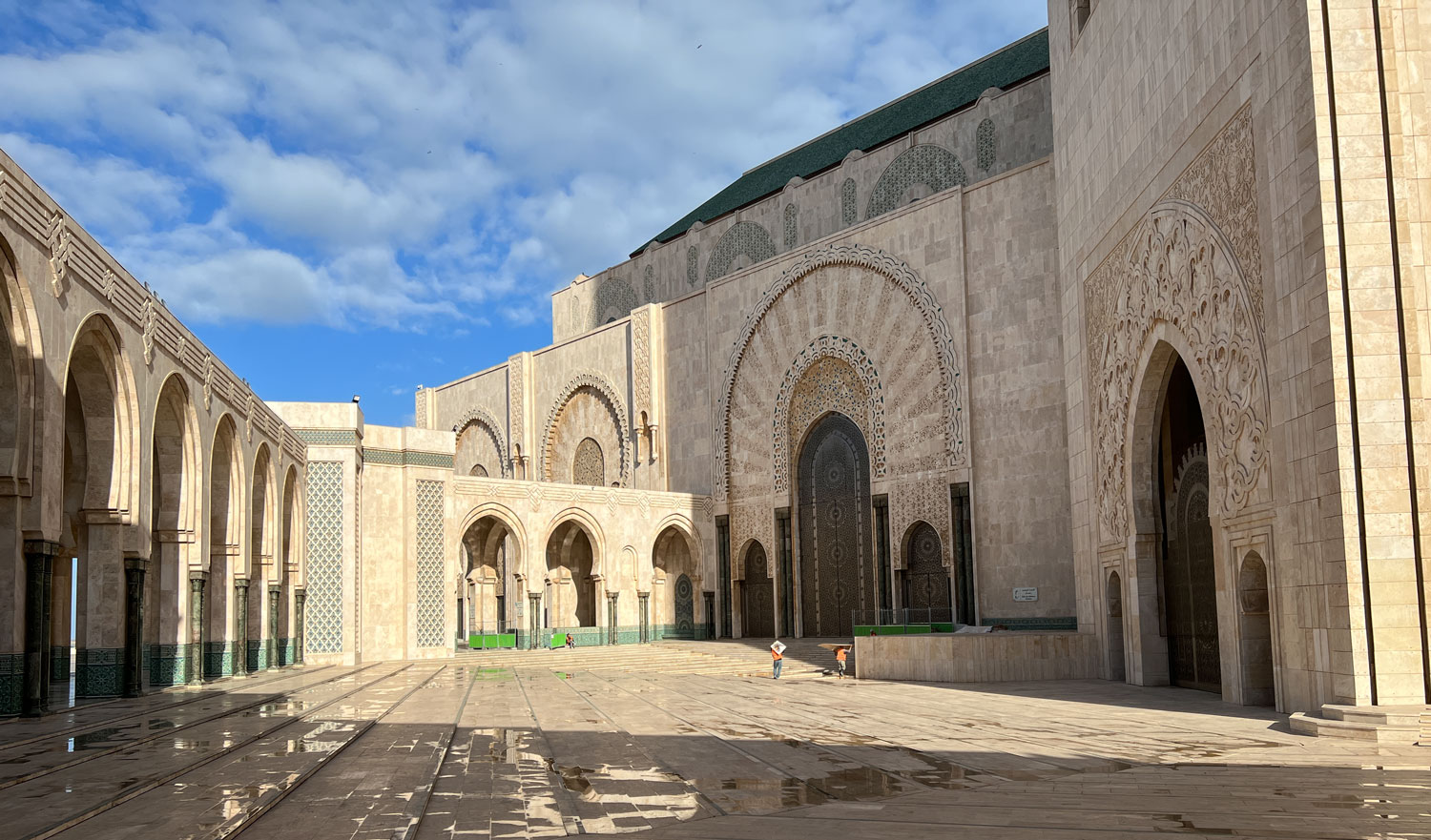
The mosque is carpeted, so we removed our shoes. They don't want you tracking dirt on their rugs. We carried our shoes in bags that were provided for us.
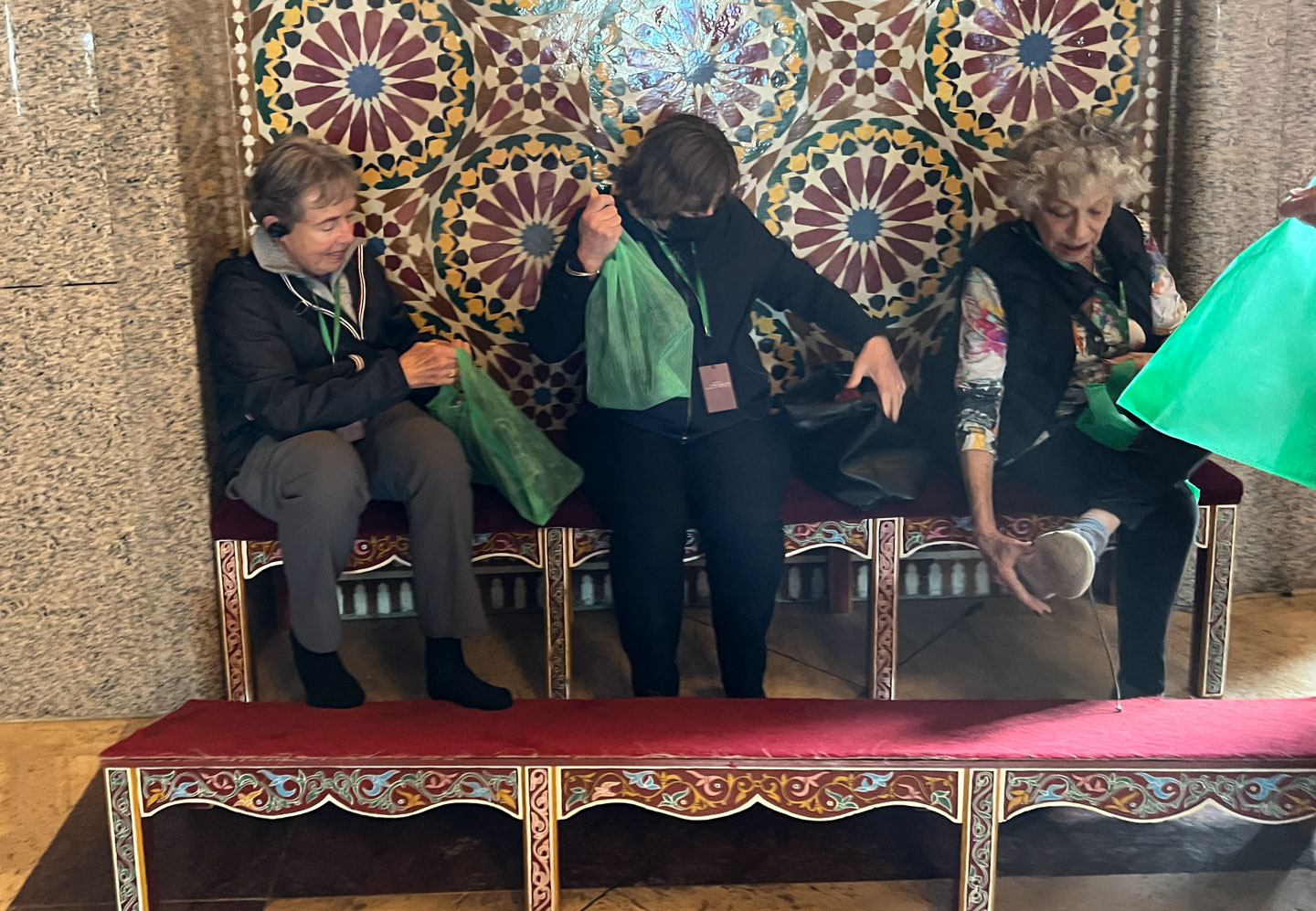
It's very difficult to show the size of the interior of the mosque in pictures. This view is down the central area of the mosque. The "doorway" looking feature at the end of the central area is the Mihrab, which indicates the quiba, the direction towards the Kaaba in Mecca. Muslims should face towards Mecca when praying. There are smartphone apps now which will give you the direction towards Mecca no matter where you are located.
There is no requirement for a mosque to be oriented towards Mecca, but the Mihrab will always be positioned on the wall so that the worshipers are facing Mecca when praying. This mosque is oriented towards Mecca so the Mihrab is located in the center of the wall at the end of the central area. Note that there's no prayer rug in this area. I asked if this area was off limits to the congregation. It's not, but a worshiper must bring a personal rug and use it when praying. Even on the carpeted area, I'm told, people bring their own prayer rugs to use. A worshiper in Islam puts his/her forehead on the rug so some people don't like to do that on public rugs.
Over time, the forehead of the worshiper may develop a callus where it comes in contact with the rug. Called a zabiba, it distinguishes an observant Muslim.
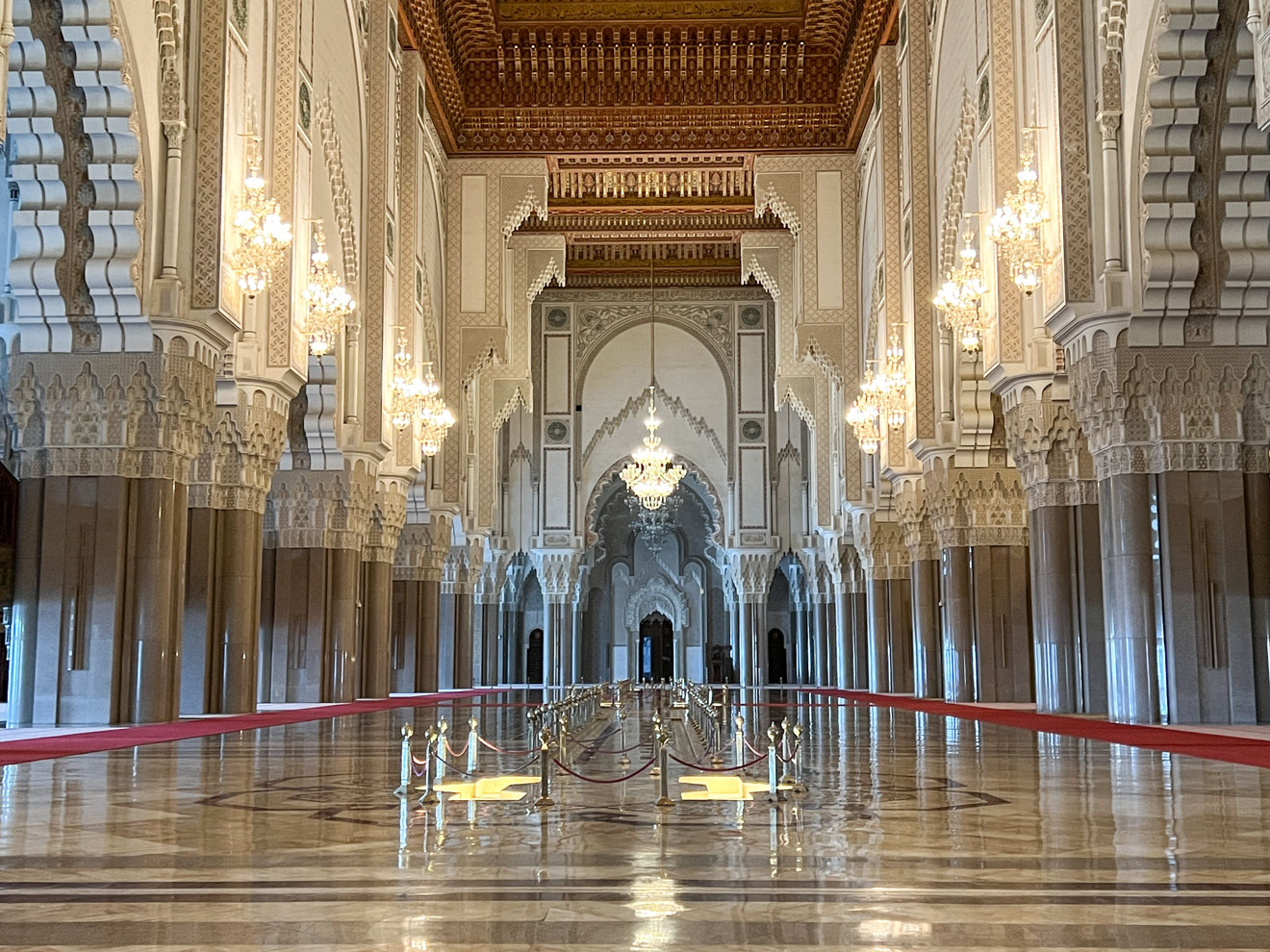
Men and women pray separately in a mosque. There were two balconies in the mosque, one on either side of the main area, where women pray. Here's a view of one of them.
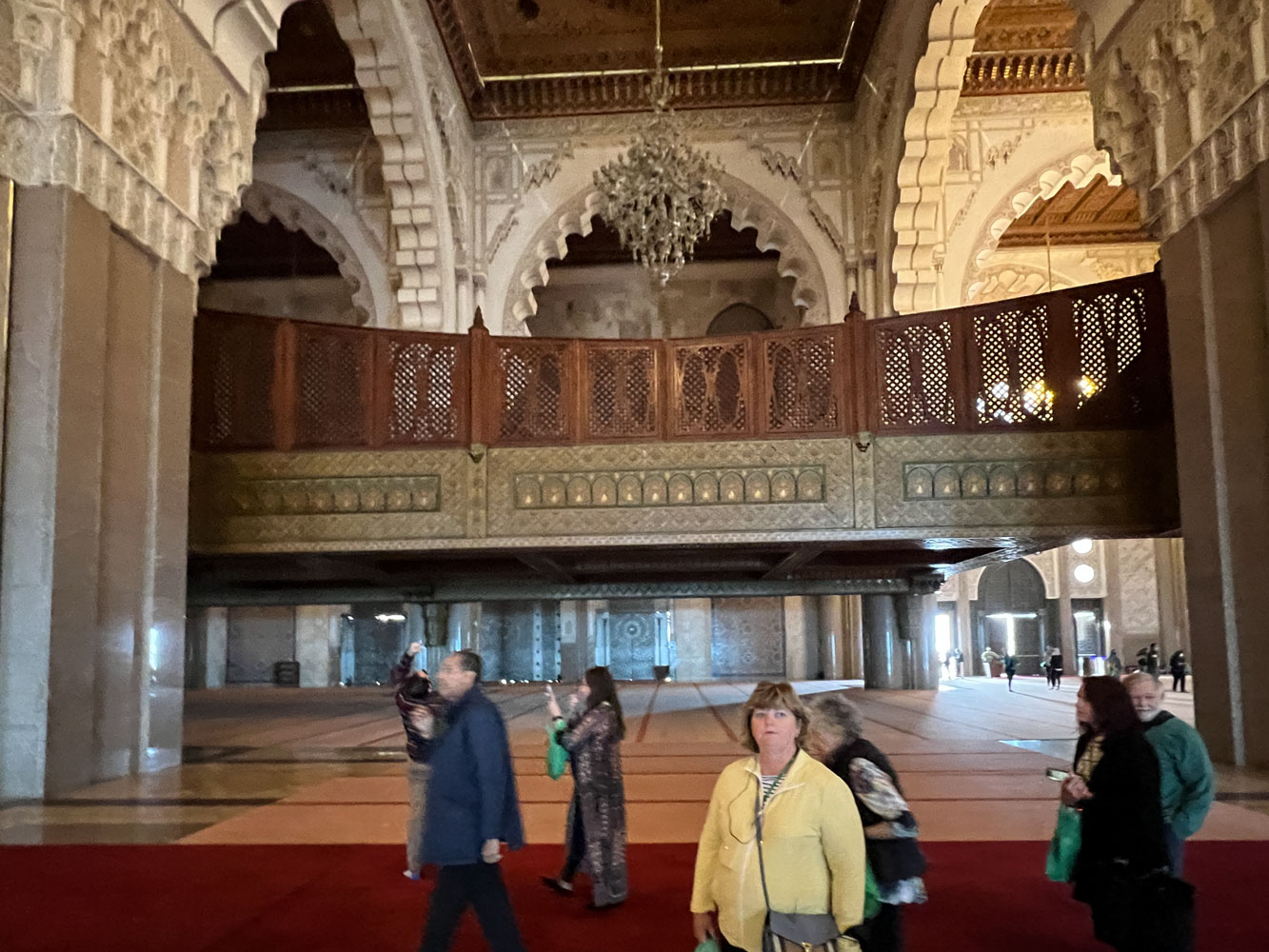
A closer view of the Mihrab. Next to it is the minbar, or pulpit, from where the imam delivers the sermon. Note the lines on the carpet in front of the Mihrab. This is for the worshipers to use to align their prayer rugs. So when the congregation is praying , they are in neat rows.
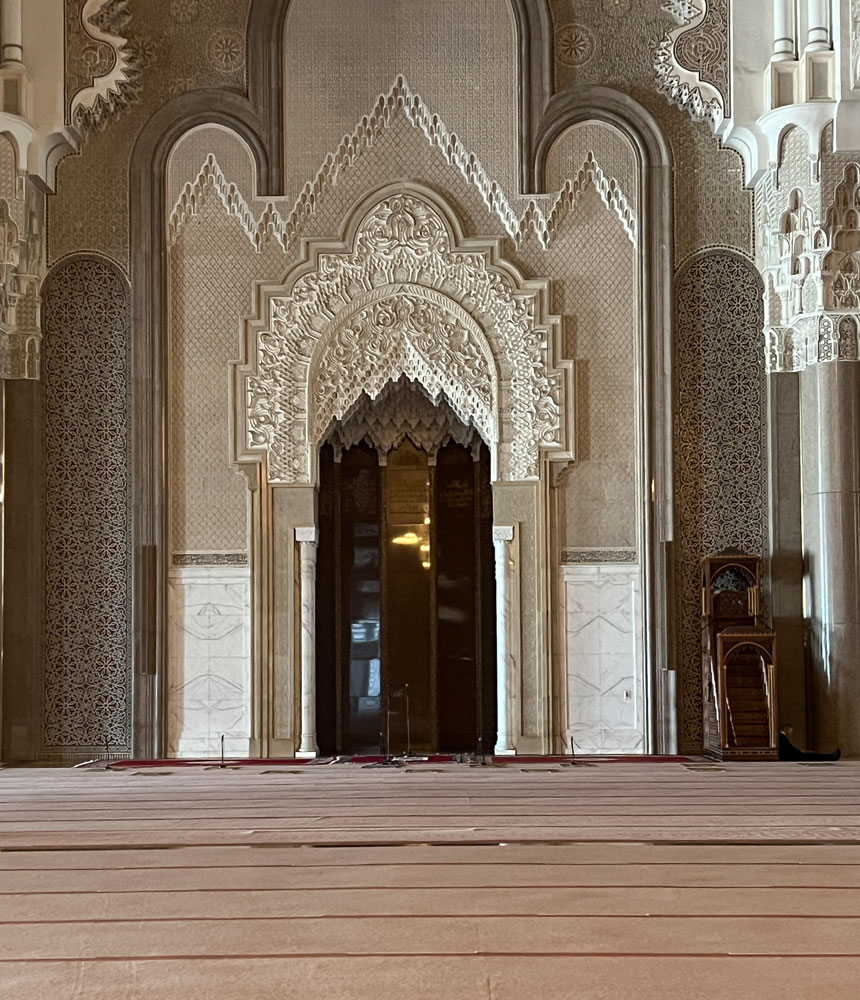
After we left the main part of the mosque, we put on our shoes and went to the floor below the main prayer hall, where there were fountains for the ritual of Wudu, cleansing before prayer. This picture only shows a few of the fountains. I don't know how many there were, but it was a lot. There's no water running because the area is closed due to Covid. People are instructed to purify at home before coming to the mosque.
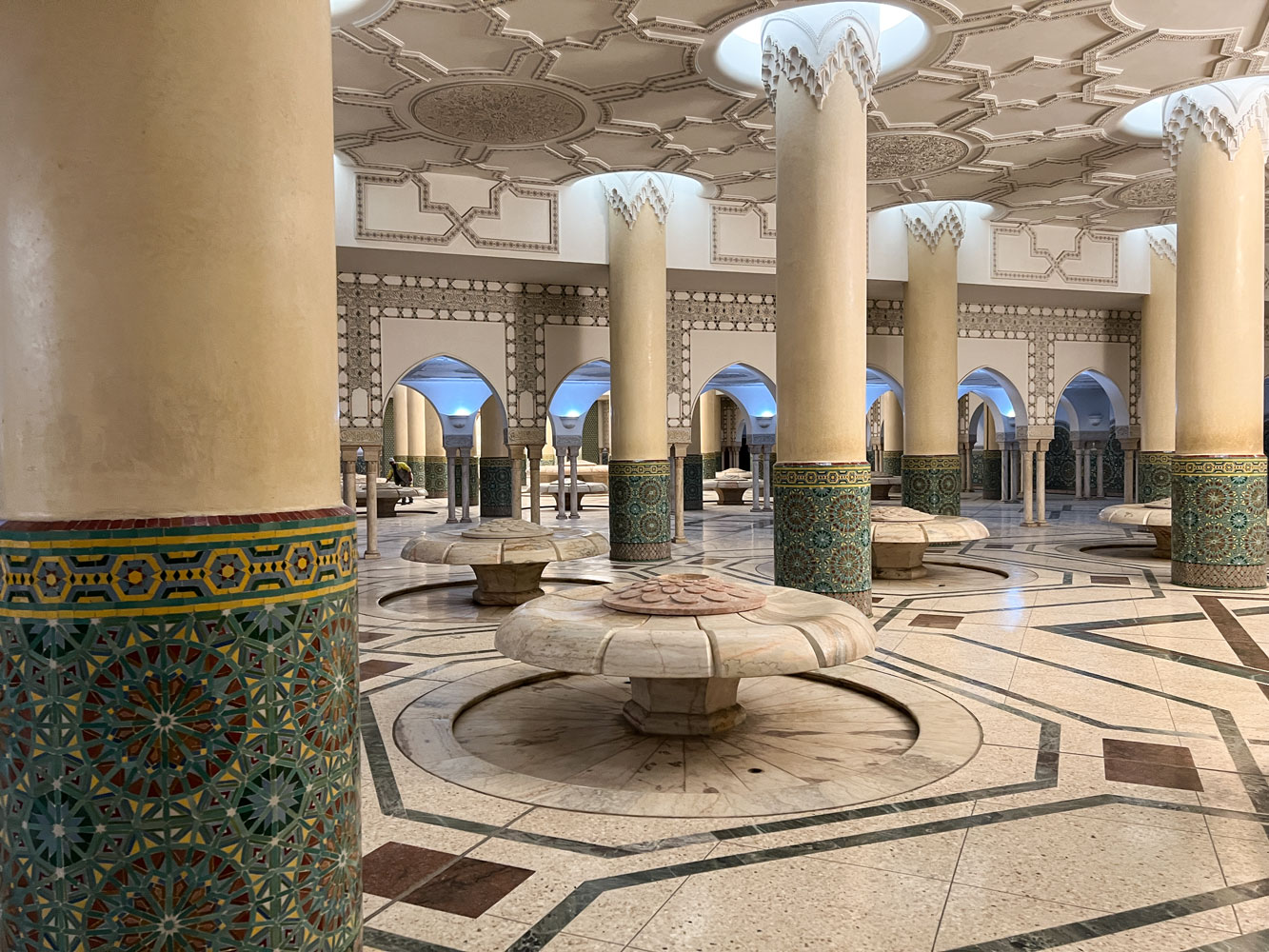
Here's a closer look at one of the larger fountains. In performing Wudu, a person would wash their face, their arms, their head, and finally, their feet. In certain circumstances, a more involved purification ritual must be performed, called Ghusl. Nourdine also called it hammam but my research indicates that a hammam is a steam bath and not a purification ritual.
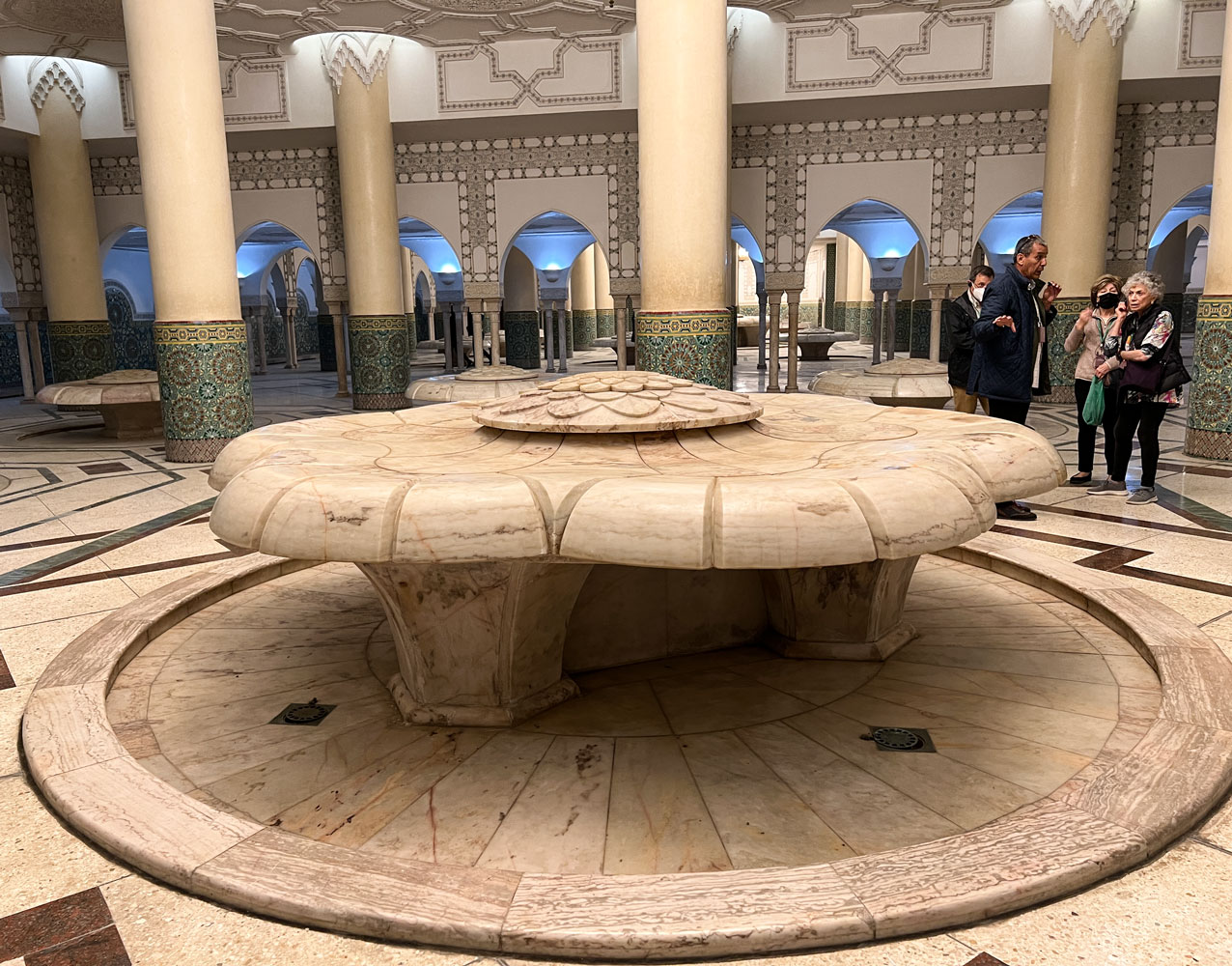
Apparently, the Moroccan government keeps a tight control on the Mosques. The government provides a list of what a serman can be about on each day. The imam can write their own sermon as long as the subject is the one given by the government. I suspect this is to prevent any encouragement of terriorist activity from the Mosques.
After this, we took the bus to a small private museum, the Abderrahman Slaoui Museum. Also see here. I'm afraid I didn't find it very interesting and didn't take any pictures during our visit.
When we left the museum we took the bus to Rick's Cafe, based on Humphrey Bogart's "Rick's Cafe Americain" in the movie "Casablanca". In reality, it looks nothing like the cafe in the movie.
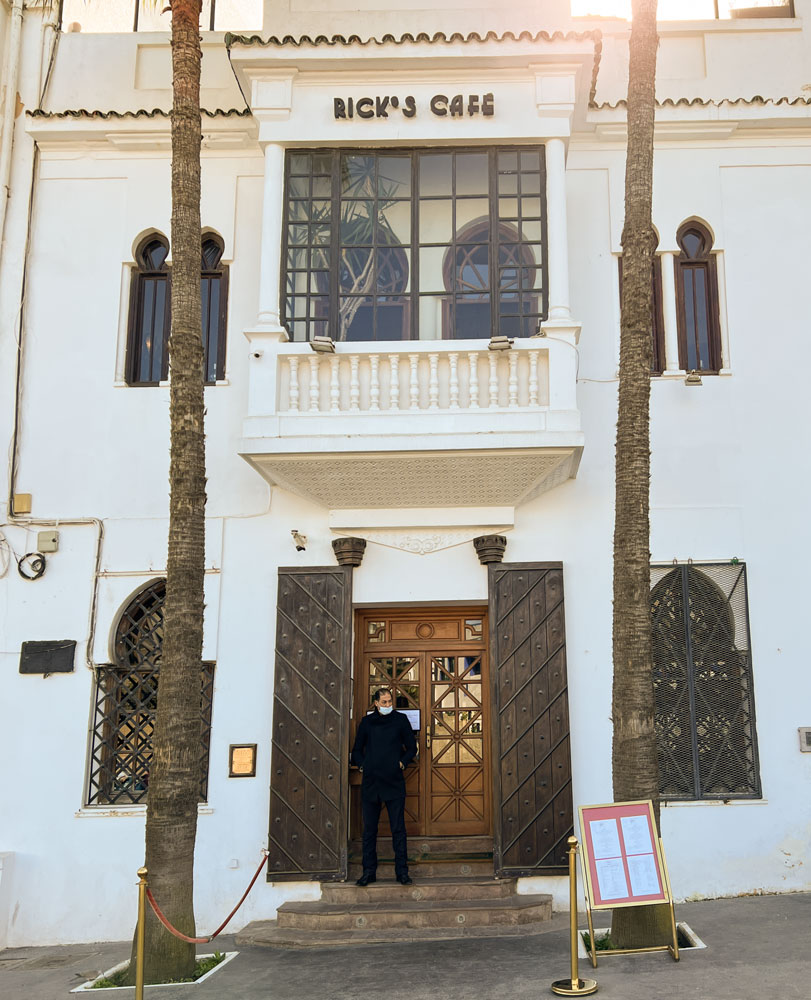
Here's Dennis standing at the roulette table where Rick allowed a young couple to win enough money to buy emigration papers. The movie is played continuously on the TV in the background.

The bar at Rick's.
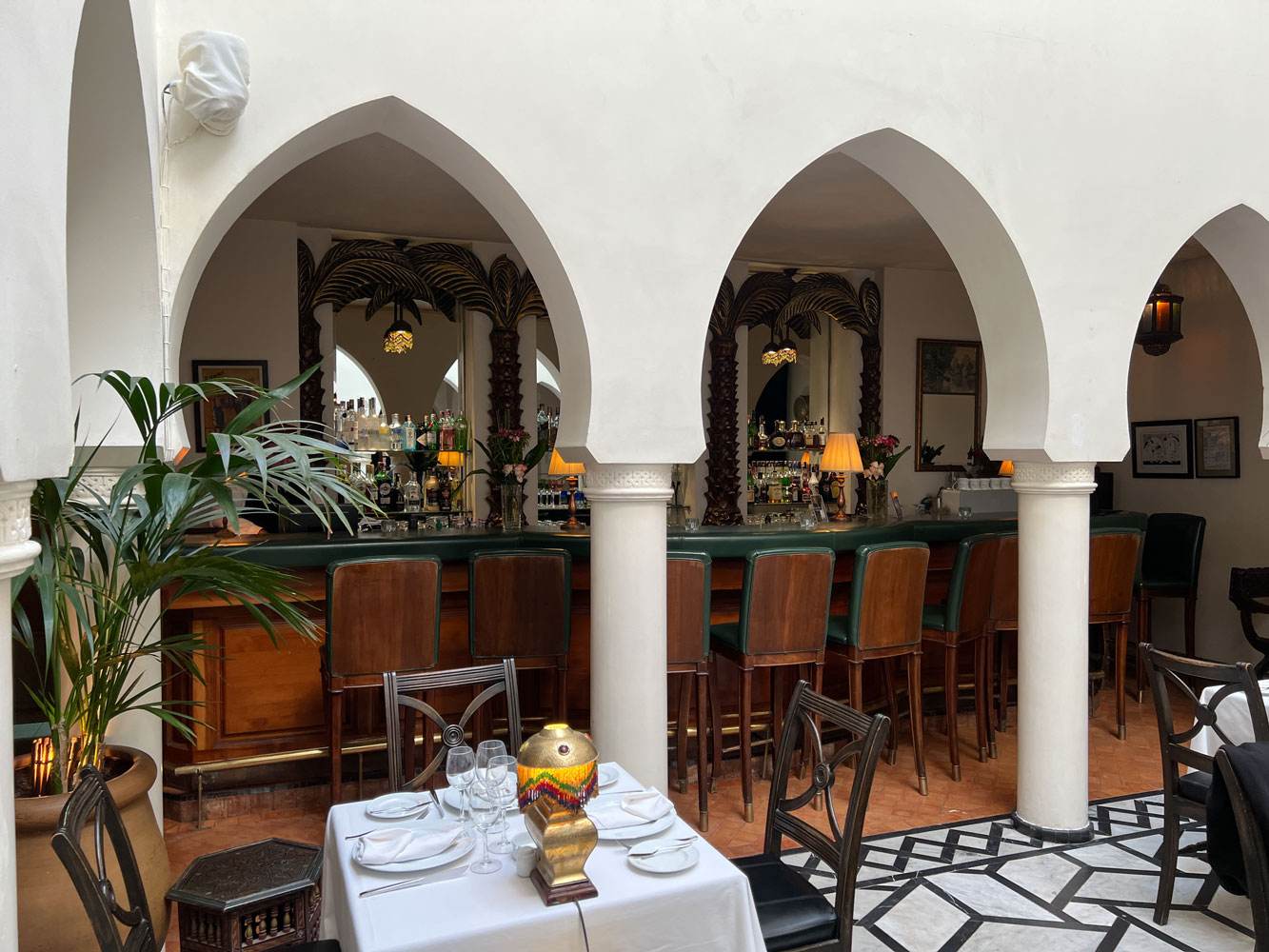
A closer look at the carvings at the bar.
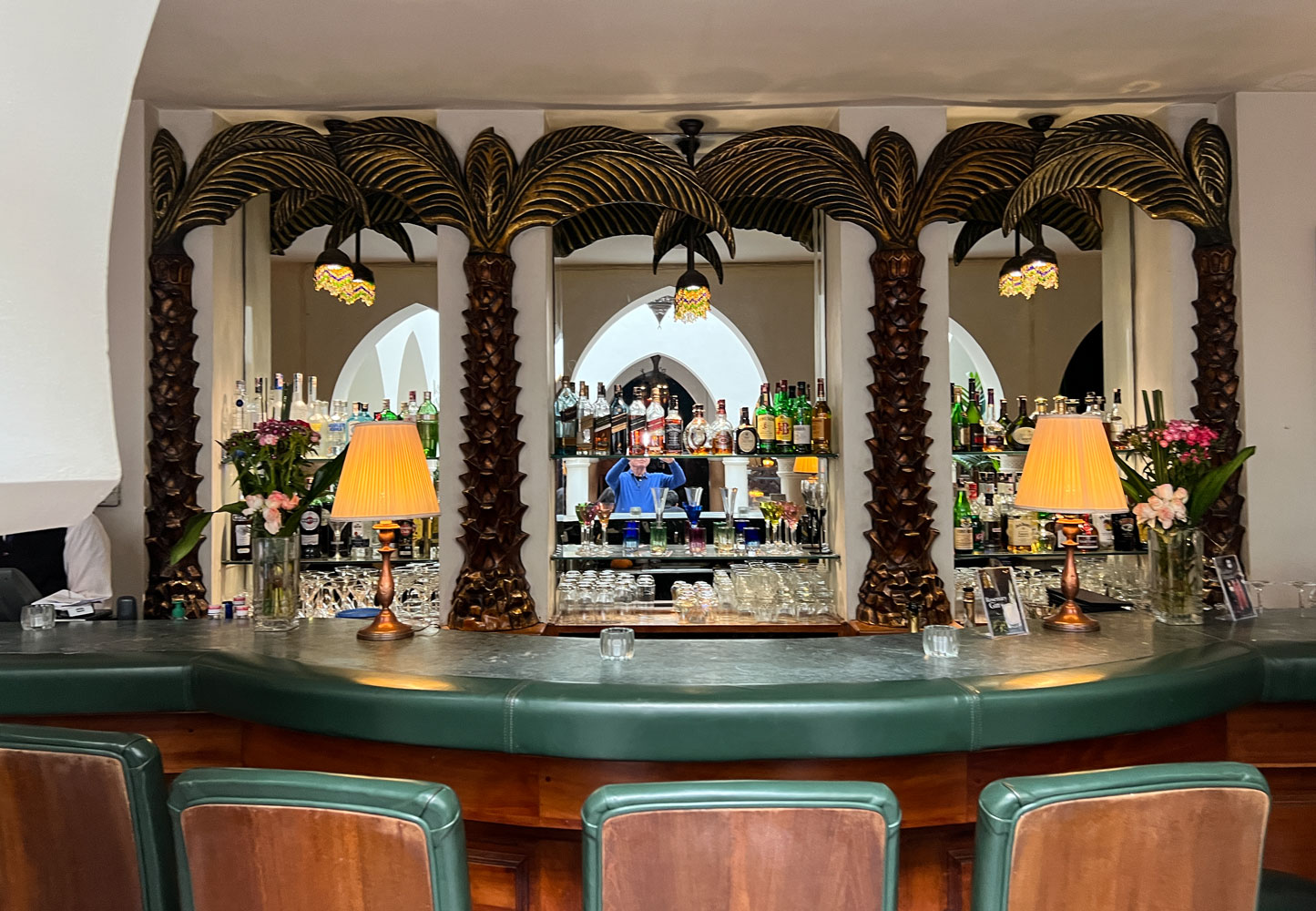
Some of our group at lunch. From the left are Judy, Peg, Dennis, Wally, Marta and Betty.

After lunch we headed for Marrakesh. The drive was a bit under three hours. As we approached Marrakesh, Chris played the song "Marrakesh Express" by Crosby, Nash and Stills on the audio system of the bus.
Our hotel in Marrakesh is the Four Seasons, a lovely hotel situated on over 40 acres of land and gardens.

A view of the entrance to the hotel. We're going to spend four nights here.
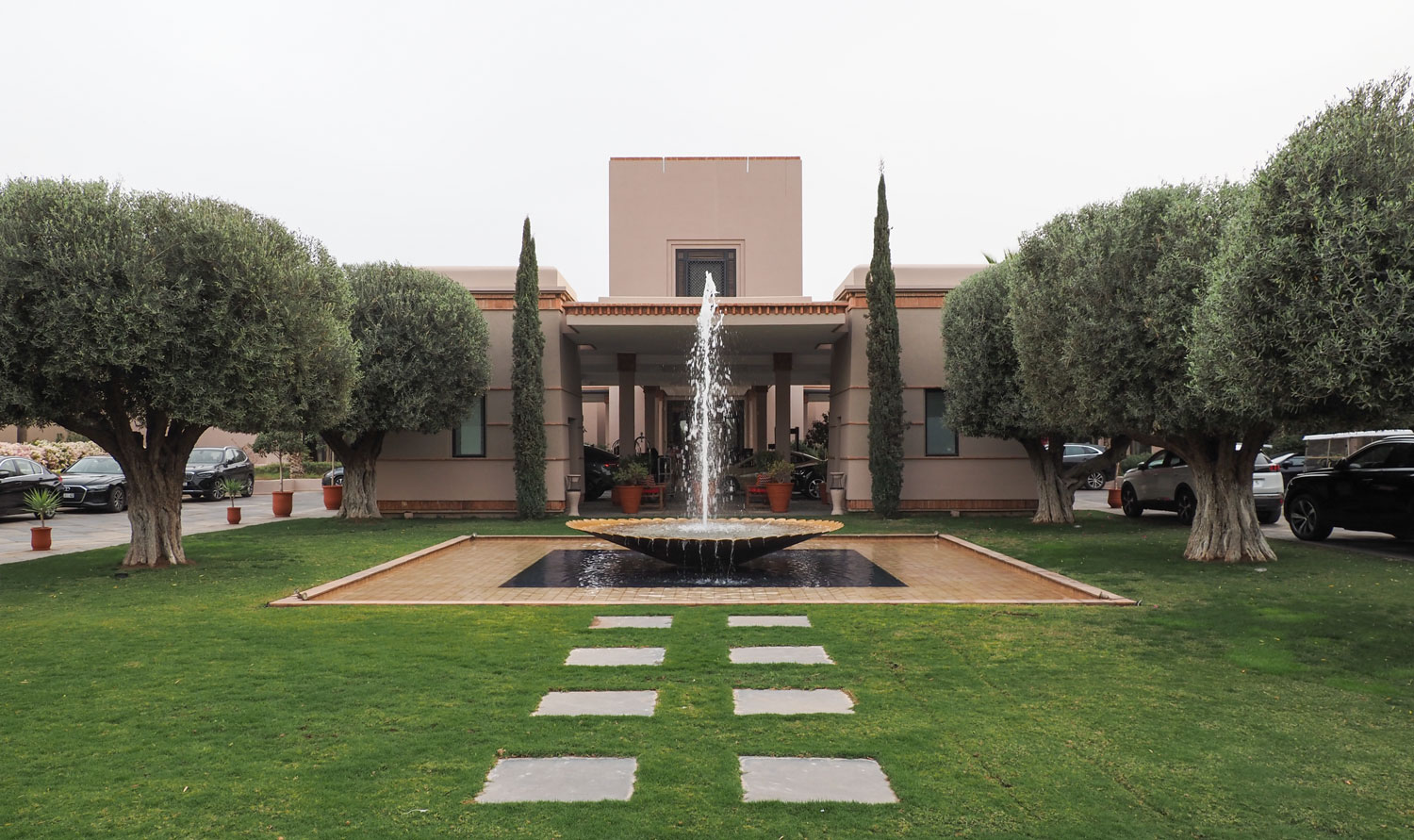
After we got checked in and settled in our room, we had dinner in the hotel Quattro restaurant and then to bed.